- Metaphysics玄学:御定奇门遁甲(343P):2024年-04月-28日
- Metaphysics玄学:掌上乾坤解析奇门遁甲(450P):2024年-04月-28日
- Metaphysics玄学:奇门星象绝学(685P):2024年-03月-31日
- Metaphysics玄学:妙派奇门遁甲使用方法(93P):2024年-03月-28日
- Metaphysics玄学:飞龙道人太公奇门遁(101P):2024年-03月-28日
- Metaphysics玄学:奇门遁甲盘解说(163P):2024年-03月-24日
- Metaphysics玄学:奇门股市实战解秘(364P):2024年-03月-19日
- Metaphysics玄学:奇门遁甲秘笈大全(314P):2024年-03月-19日
- Metaphysics玄学:奇门遁甲工具篇(332P):2024年-03月-19日
- Metaphysics玄学:奇门遁甲笔记(62P):2024年-03月-03日
- Metaphysics玄学:奇门遁甲详解(260P):2024年-02月-24日
- Metaphysics玄学:奇门启悟(315P):2024年-02月-15日
- Metaphysics玄学:奇门法窍(313P):2024年-02月-15日
- Metaphysics玄学:学奇门遁甲这本最好用(259P):2024年-01月-17日
- Metaphysics玄学:奇门速断实例(208P):2024年-01月-17日
- Metaphysics玄学:奇门秘占(417P):2024年-01月-17日
- Metaphysics玄学:奇门枢要(98P):2023年-12月-15日
- Metaphysics玄学:神奇之门 - 张志春(392P):2023年-12月-15日
- Metaphysics玄学:奇门旨归(273P):2023年-12月-15日
- Metaphysics玄学:姜太公奇门遁甲十二宫取用神(151P):2023年-12月-10日
- Metaphysics玄学:参筹秘书(奇门)(533P):2023年-12月-10日
- Metaphysics玄学:商战与奇门(151P):2023年-12月-10日
- Metaphysics玄学:奇门堪舆学(525P):2023年-12月-10日
- Metaphysics玄学:奇门遁甲基础篇(275P):2023年-12月-05日
- Metaphysics玄学:奇门遁甲阳宅篇(233P):2023年-12月-05日
- Metaphysics玄学:奇门归宗(378P):2023年-12月-05日
- Metaphysics玄学:奇门遁甲与商战(144P):2023年-12月-01日
- Metaphysics玄学:彩票与奇门(62P):2023年-11月-27日
- Metaphysics玄学:奇门一得(273P):2023年-10月-20日
- Metaphysics玄学:奇门遁甲天地全书(318P):2023年-09月-22日
- Metaphysics玄学:不吹牛第一届奇门遁甲培训班讲义(689P):2023年-09月-22日
- Metaphysics玄学:御定奇门宝鉴(385P):2023年-09月-20日
- Metaphysics玄学:斗转星移:解开奇门遁甲之谜(465P):2023年-09月-20日
- Metaphysics玄学:阴盘法术奇门面授班教材(140P):2023年-09月-19日
- Metaphysics玄学:奇门遁甲200问(221P):2023年-09月-02日
- Metaphysics玄学:一善居士奇门遁甲应用诀(205P):2023年-07月-30日
- Metaphysics玄学:万真生活化奇门遁甲(197P):2023年-07月-30日
- Metaphysics玄学:奇门遁甲精要(166P):2023年-06月-02日
- Metaphysics玄学:阴盘奇门真的很神奇(512P):2023年-04月-24日
- Metaphysics玄学:凤麟易理阴盘奇门(298P):2023年-04月-24日
- Metaphysics玄学:于成道人法术奇门(89P):2023年-04月-19日
- Metaphysics玄学:铁书生奇门遁甲笔记(154P):2023年-04月-12日
- Metaphysics玄学:问道太公奇门遁(191P):2023年-04月-12日
- Metaphysics玄学:遁甲三书(581P):2023年-04月-08日
- Metaphysics玄学:遁甲护身术(333P):2023年-04月-04日
- Metaphysics玄学:法奇门天机秘(167P):2023年-04月-04日
- Metaphysics玄学:奇门改运秘术(320P):2023年-04月-04日
- Metaphysics玄学:奇门遁甲秘笈大全(332P):2022年-09月-22日
《奇门遁甲》是中国古代术数著作,也是奇门、六壬、太乙三大秘宝中的第一大秘术,为三式之首,最有理法,被称为黄老道家最高层次的预测学,号称帝王之学/最高预测学,创始人为九天玄女,其本质是一门高等的天文物理学,揭示了太阳系八大行星和地球磁场的作用情况。“奇”是指三奇,即乙、丙、丁,“门”是指八门即“开、休、生、伤、杜、景、死、惊”。
遁甲则指六甲旬首遁入六仪即“戊、己、庚、辛、壬、癸”。《奇门遁甲》最初创立时,共有四千零九十六局,后改良为一千零八十局,到周朝时姜尚因为行军布阵的需要压缩为七十二局,汉代的张良得黄石公传授后,再次改革,成为现在使用的阴遁九局、阳遁九局,共十八局。由此可见《奇门遁甲》是中国古代很多代人共同研究的结果,它包含有天文学、历法学、战争学、谋略学、哲学等。现在《奇门遁甲》又通常被人简称“奇门”、“奇门遁”、“遁甲”。民间流传的俗语有“学会奇门遁,来人不用问。”当下奇门遁甲可以应用婚恋、工作、事业、风水、财运的预测、调理、化解和运筹等诸多方面。
奇门遁甲,原来是中国古老的一本术数书,但它往往被认为是一本占卜用的书,但有的说法是说《奇门遁甲》是中国古代人民在同大自然作斗争中,经过长期观察、反复验证,总结出来的一门传统珍贵文化遗产。还有的说“奇门遁甲”是修真的功法。奇门遁甲有理数奇门和法术奇门两种,有传说“奇门遁甲”是修真的功法。相传奇门遁甲源于军事上的排兵布阵。
奇门遁甲的基本格局反映了当时社会的人事、生活、社会制度,及天文、地理、物候等方方面面。
奇门遁甲源于感性思维,发展过程中综合运用了形象、比类取象的联想力,以及观物取象的直观思维,类聚群分的逻辑思维,极数通变的象数思维等方法。奇门遁甲一术,或曰黄帝伐蚩尤时命风后所作。其法用洛书与后天八卦,按节气时日干支而起奇门以择日也。
奇门遁甲的发展历史凝结了中国古代社会精英和优秀劳动人民认识自然、改造自然的智慧,它在周秦时期称为“阴符”,汉魏时期易名“六甲”,隋唐及宋元时期改称为“遁甲”,明清以后方始统称为“奇门遁甲”。
奇门遁甲的基本格局反映了社会的人事、生活、社会制度,及天文、地理、物候等,其典型代表人物,在古代,有传说的黄帝、姜太公、张良、诸葛亮、刘伯温等。古代奇门遁甲应用于战争,四两拨千斤,百战百胜、无往不利。
关于奇门遁甲的起源,在道教古籍《秘藏通玄变化六阴洞微遁甲真经》、《轩辕本纪》、《奇门遁甲思维导图》《神机制敌太白阴经》、《烟波钓叟歌》等多有记载,大致为当年蚩尤作乱,黄帝频战不克,九天玄女授奇门遁甲术于轩辕黄帝,助黄帝以灭蚩尤,以此来推,奇门遁甲至今已有五千余年的历史。
“黄帝”可以说是中国历史上第一个用武力统一中原的原始社会领袖。黄帝与蚩尤的战争,在司马迁《史记》中即有记载:“诸侯咸归轩辕,一蚩尤作乱,不用帝命,于是黄帝乃征师诸侯,与蚩尤战于琢鹿之野,遂禽杀蚩尤。之后天下有不顺者,黄帝的而征之,平者去之。”司马迁是史学家,但又对星占、卜筮等术数学以及对神的祭祀与崇拜有极大的兴趣。
在《史记》中专辟两篇论术数之学《史记·日者列传》和《龟策列传》。但在记述黄帝与蚩尤的战争时,却没有丝毫神话口吻。黄帝以战争统一了中原,堪称中国历史上第一位军事统帅。后人把奇门遁甲的发明权放在了黄帝的盛名之下,其目的是要把奇门遁甲抬高为治国安邦、行军布阵之术。
历史上记载“奇门遁甲”,应以《抱朴子》之论为最早。道士葛洪在《抱朴子》里对遁甲术的记载要比《后汉书》所记早了近一个世纪,结合《隋书·经籍志》记录的遁甲书的各种署名,可以确定历史上葛洪是将奇门遁甲术公布于社会的第一人,葛洪对奇门遁甲术的传播起了重要作用。
这些历史记载和传说可以说明,奇门遁甲术不是一个人创作出来的,而是几代人乃至数代人共同创造的结果,包含有民族的哲学智慧、历法学、宇宙社会观、天文学知识、战争学、谋略学等,这些记载和传说还告诉我们,由于古代封建皇权的统治,导致奇门遁甲术在产生之后相当长的一段时间内,只是在极少数人手中掌握的。新中国成立后尤其是改革开放以来,普通的平民百姓也可以研究奇门遁甲,奇门遁甲的学习热潮使它有了飞速的发展,人们现在是更加科学地、客观地、中正地来认识学习这门学术。
奇门遁甲在现代社会的初级应用主要是预测,高级应用为化解、运筹。
其典型代表人物,在古代有黄帝、姜太公、张良、诸葛亮、刘伯温等高道。
组成“奇门遁甲”的含义是由“奇”“门”“遁甲”三个概念组成。奇门遁甲的这些符号单位最初只是作为军事术语来运用的,“奇”就是乙(日)、 丙(月)、丁(星)三奇;“门”就是休、生、伤、杜、景、惊、 死、开八门(在排宫法中是八门,在飞宫法中九门:休、死、伤、杜、中、开、惊、生、景);“遁”即隐藏,“甲”指六甲,即甲子、甲戌、甲申、甲午、甲辰、甲寅,“甲”是在十干中最为尊贵,它藏而不现,隐遁于六仪之下。
“六仪”就是戊、己、庚、辛、壬、癸。隐遁原则是甲子同六戊,甲戌同六己,甲申同六庚,甲午同六辛,甲辰同六壬,甲寅同六癸。天干在奇门遁甲中占据着十分重要的地位,有人将奇门遁甲称为天干学,天干最早出现在甲骨文中,据说最初的用途是记录太阳的活动变化,太阳是地球上的万物之源,对地球上一切生物构成最直接的影响。天干作为信息语言符号,基本体现了阴阳五行的特性,但其内涵和外延更深入更广泛涵概了万事万物。另外还配合蓬,任,冲,辅,英,芮,柱,心,禽九星;同时还要配合八神:值符、塍蛇、太阴、六合、白虎、玄武、九地、九天(在排宫法中用这个八神,在飞宫法中用九神:值符、滕蛇、太阴、六合、太常、白虎、玄武、九地、九天)。
奇门遁甲中将一切事物的成败归纳为五大因素,即天时、地利、人和、神助格局组合。
所谓天时是指天体运行对一切事物的影响,包括自然界的风雨雷电的变化,国家政策法规的约束,战争、自然灾害等等,均指天时,奇门遁甲中以九星代表天时,九星即天心星、天蓬星、天任星、天冲星、天辅星、天英星、天芮星、天禽星、天柱星。所谓地利是指周围的地理环境(如风水)生态环境,地球磁场对事物的影响,山川、河流、道路、交通、社会区域的结构,奇门遁甲中以九宫代表地利,九宫既乾、坎、艮、震、巽、离、坤、兑及中五宫。所谓人和,是指人际关系,民族种群的差别,伦理道德、民俗习惯等等,奇门遁甲中以八门代表人和,八门即开、休、生、伤、杜、景、死、惊这八门。所谓的神助,是古人在天人感应中发现与九宫八卦具有相对应性质的八种神秘的自然力量,影响着事物的发生发展。奇门遁甲中以八神代表神助,八神是指值符(天乙贵人)、腾蛇、太阴、六合、白虎、玄武、九地、九天。所谓格局组局,即事物在发展过程中存在的微妙变化和变化过程,格局组合即奇门遁甲中天、地、人、神、星、门、奇、仪组合结构,以十干克应,八门克应,星、门、奇、仪组合为代表。
奇门遁的占测主要分为天,人,地三盘,象征三才。天盘的九宫有九星,中盘的八宫(中宫寄二宫)布八门;地盘的八宫代表八个方位,静止不动;同时天盘地盘上,每宫都分配着特定的奇(乙,丙,丁三奇)仪(戊,己,庚,辛,壬,癸六仪)。
这样,根据具体时日,以六仪,三奇,八门,九星排局以及特殊的奇门遁甲格局,以占测人类社会和自然世界,性状,动向,在人事关系方面选择吉时吉方,就构成了中国神秘文化中一个特有的门类——奇门遁甲。
“Qi Men Dun Jia” is an ancient Chinese work of numerology and is also the largest secret technique among the three major treasures of Qi Men, Liu Ren, and Tai Yi. It is the first of the three forms and the most rational method, and is known as the highest level of prediction in the Huang Lao Taoist school. It is also known as the study of emperors/the highest prediction. The founder is the Nine Heavens Mysterious Girl, and its essence is an advanced astrophysics that reveals the interaction between the eight planets in the solar system and the Earth’s magnetic field. “Qi” refers to the three wonders, namely B, C, and D, while “Men” refers to the eight gates, namely “Open, Rest, Life, Injury, Du, Jing, Death, and Shock”.
Dunjia refers to the first ten days of the sixth lunar month when the head of the sixth lunar month retreats into the sixth lunar month, namely “Wu, Ji, Geng, Xin, Ren, and Gui”. When “Qi Men Dun Jia” was first established, there were a total of 4096 rounds, which were later improved to 1080 rounds. By the Zhou Dynasty, Jiang Shang had compressed it to 72 rounds due to the need for marching and formation. After being taught by Huang Shi Gong in the Han Dynasty, Zhang Liang reformed it again and became the current Yin Dun Nine rounds and Yang Dun Nine rounds, totaling 18 rounds. From this, it can be seen that “Qi Men Dun Jia” is the result of joint research by many generations in ancient China, which includes astronomy, calendar, war studies, strategic studies, philosophy, etc. Nowadays, “Qimen Dunjia” is commonly referred to as “Qimen”, “Qimen Dun”, or “Dunjia”. There is a folk saying that goes, “If you learn Qimen Dun, don’t ask anyone who comes.” Currently, Qimen Dunjia can be used to predict, regulate, resolve, and plan for marriage, work, career, feng shui, and financial luck in many aspects.
Qimen Dunjia was originally an ancient Chinese book of numerology, but it is often considered a book for divination. However, some claims suggest that Qimen Dunjia is a precious cultural heritage that the ancient Chinese people have summarized through long-term observation and repeated verification in their struggle against nature. Some people say that “Qimen Dunjia” is a cultivation technique. There are two types of Qimen Dunjia: rational and magical. There is a legend that Qimen Dunjia is a cultivation technique. The origin of Xiangchuangmen Dunjia lies in the military deployment of troops.
The basic pattern of Qimen Dunjia reflects the personnel, life, social system, as well as various aspects such as astronomy, geography, phenology, etc. of the society at that time.
Qimen Dunjia originated from intuitive thinking, and in its development process, it comprehensively utilized the associative power of image and analogy, as well as the intuitive thinking of observing objects and phenomena, the logical thinking of clustering and grouping, and the elephant number thinking of extreme and variable numbers. The technique of Qimen Dunjia, also known as it was created by the Empress Fenghou during the Yellow Emperor’s campaign against Chiyou. The method uses the Book of Luo and the Eight Trigrams of the day after tomorrow to select the day based on the solar terms, time, and main branches.
The development history of Qimen Dunjia embodies the wisdom of ancient Chinese social elites and outstanding working people in understanding and transforming nature. It was called “Yin Fu” during the Zhou and Qin dynasties, renamed “Liujia” during the Han and Wei dynasties, renamed “Dunjia” during the Sui, Tang, Song, and Yuan dynasties, and began to be collectively referred to as “Qimen Dunjia” after the Ming and Qing dynasties.
The basic pattern of Qimen Dunjia reflects the social personnel, life, social system, as well as astronomy, geography, phenology, etc. Its typical representative figures include legendary figures such as Huangdi, Jiang Taigong, Zhang Liang, Zhuge Liang, Liu Bowen, etc. in ancient times. In ancient times, Qimen Dunjia was used in warfare, with a weight of four taels and a weight of a thousand pounds, achieving victories in every battle and never losing.
Regarding the origin of Qimen Dunjia, there are many records in Taoist ancient books such as “The Secret Collection of the Six Yin Cave Micro Dunjia Manual”, “Xuanyuan Benji”, “Qimen Dunjia Mind Map”, “Divine Machine Conquers Enemy Taibai Yin Jing”, “Smoke Wave Fishing Old Song”, etc. It can be roughly inferred that in the past, when Chiyou rebelled and the Yellow Emperor was unable to defeat him in frequent battles, the Nine Heavens Xuannu taught Qimen Dunjia Art to Xuanyuan Yellow Emperor, helping him eliminate Chiyou, and so on, Qimen Dunjia has a history of over 5000 years.
The Yellow Emperor can be said to be the first primitive social leader in Chinese history to unify the Central Plains by force. The war between the Yellow Emperor and Chi You was recorded in Sima Qian’s “Records of the Grand Historian”: “When the feudal lords Xian returned to Xuanyuan, Chi You rebelled without the emperor’s command. Therefore, the Yellow Emperor led a campaign against the feudal lords and fought against Chi You in the field of carving deer, killing Chi You with birds. Later, there were those who were not going well in the world. The Yellow Emperor led a campaign against them, and those who were flat were eliminated.” Sima Qian was a historian, but also had a great interest in astrology, divination, and other arts, as well as the worship and worship of gods.
In the Records of the Grand Historian, there are two specialized studies on numerology, namely the Biographies of the Japanese and the Biographies of the Turtle Strategy. But when describing the war between the Yellow Emperor and Chi You, there is no mythological tone at all. The Yellow Emperor unified the Central Plains through war, making him the first military commander in Chinese history. Later generations placed the invention right of Qimen Dunjia under the fame of the Yellow Emperor, with the aim of elevating it as a technique for governing the country and ensuring the stability of the country, as well as marching and deploying troops.
The earliest historical record of “Qimen Dunjia” should be based on the theory of “Baopuzi”. Taoist Ge Hong recorded the Dunjia technique in “Baopuzi” nearly a century earlier than in “Later Han Shu”. Combined with the various signatures recorded in “Sui Shu Jing Ji Zhi”, it can be determined that Ge Hong was the first person in history to announce the Qimen Dunjia technique to society, and he played an important role in the dissemination of Qimen Dunjia technique.
These historical records and legends can illustrate that the Qimen Dunjia technique was not created by one person, but rather the result of several generations or even generations of people working together. It includes national philosophical wisdom, calendar, cosmology, astronomy, war studies, strategy studies, etc. These records and legends also tell us that due to the rule of ancient feudal imperial power, the Qimen Dunjia technique was created for a considerable period of time after its emergence, It is only in the hands of a very small number of people. After the establishment of the People’s Republic of China, especially since the reform and opening up, ordinary civilians can also study Qimen Dunjia. The learning trend of Qimen Dunjia has led to its rapid development, and people now have a more scientific, objective, and impartial understanding of learning this academic field.
The primary application of Qimen Dunjia in modern society is mainly prediction, while the advanced application is resolution and operation research.
Its typical representative figures in ancient times include the Yellow Emperor, Jiang Taigong, Zhang Liang, Zhuge Liang, Liu Bowen, and other high-ranking officials.
The meaning of “Qi Men Dun Jia” is composed of three concepts: “Qi”, “Men”, and “Dun Jia”. The symbol units of Qimen Dunjia were initially only used as military terms, and “Qi” refers to the three wonders of B (day), C (month), and D (star); “Gate” refers to the eight gates of Xiu, Sheng, Shang, Du, Jing, Jing, Jing, Death, and Opening (eight gates in Pai Gong Fa and nine gates in Fei Gong Fa: Xiu, Death, Shang, Du, Zhong, Kai, Jing, Sheng, and Jing); “Dun” refers to concealment, while “Jia” refers to the six Jia, namely Jia Zi, Jia Xu, Jia Shen, Jia Wu, Jia Chen, and Jia Yin. “Jia” is the most prestigious among the ten stems, hidden but not visible, hiding under the six Yi.
“Liuyi” refers to Wu, Ji, Geng, Xin, Ren, and Gui. The principle of seclusion is that Jia Zi is the same as Liu Wu, Jia Xu is the same as Liu Ji, Jia Shen is the same as Liu Geng, Jia Wu is the same as Liu Xin, Jia Chen is the same as Liu Ren, and Jia Yin is the same as Liu Gui. The Heavenly Stem occupies a very important position in the Qimen Dunjia, and some people refer to it as the Heavenly Stem Study. The Heavenly Stem first appeared in oracle bone inscriptions, and it is said that its original purpose was to record the activity and changes of the Sun. The Sun is the source of all things on Earth and has the most direct impact on all living beings on Earth. As a symbol of information language, the heavenly stem basically reflects the characteristics of yin, yang, and five elements, but its connotation and extension are deeper and more extensive, encompassing all things. In addition, it also cooperates with Peng, Ren, Chong, Fu, Ying, Rui, Zhu, Xin, and Qin Jiuxing; At the same time, it is necessary to cooperate with the Eight Gods: Value Fu, Chengshe, Taiyin, Liuhe, Baihu, Xuanwu, Jiudi, and Jiutian (using these Eight Gods in Paigong Law and Nine Gods in Feigong Law: Value Fu, Tengshe, Taiyin, Liuhe, Taichang, Baihu, Xuanwu, Jiudi, and Jiutian).
Qimen Dunjia categorizes the success or failure of all things into five major factors, namely the combination of timing, geographical advantage, human harmony, and divine assistance.
The so-called Tianshi refers to the influence of celestial body movement on everything, including changes in natural wind, rain, lightning, national policies and regulations, wars, natural disasters, etc., all of which refer to Tianshi. In Qimen Dunjia, the nine stars represent Tianshi, including Tianxin Star, Tianpeng Star, Tianren Star, Tianchong Star, Tianfu Star, Tianying Star, Tianrui Star, Tianqin Star, and Tianzhu Star. The so-called geographical advantage refers to the surrounding ecological environment (such as feng shui), the influence of the Earth’s magnetic field on things, the structure of mountains, rivers, roads, transportation, and social areas. In Qimen Dunjia, the nine palaces represent geographical advantage, which includes the five palaces of Qian, Kan, Gen, Zhen, Xun, Li, Kun, Du, and Zhong. The so-called human harmony refers to interpersonal relationships, differences in ethnic groups, ethical and moral values, folk customs, and so on. In Qimen Dunjia, the eight gates represent human harmony, which include opening, rest, life, injury, Du, Jing, death, and shock. The so-called divine assistance refers to the eight mysterious natural forces discovered by ancient people in the interaction between heaven and man, which have corresponding properties to the Nine Palaces and Eight Trigrams, and affect the occurrence and development of things. In Qimen Dunjia, the Eight Gods represent divine assistance. The Eight Gods refer to the value symbol (Tianyi Guiren), Tengshe, Taiyin, Liuhe, Baihu, Xuanwu, Jiudi, and Jiutian. The so-called pattern combination refers to the subtle changes and processes that exist in the development of things. The pattern combination refers to the combination structure of heaven, earth, humans, gods, stars, gates, wonders, and rituals in the Qimen Dunjia, represented by the combination of ten stems and eight gates, and the combination of stars, gates, wonders, and rituals.
Qimen Dun’s divination is mainly divided into three categories: heaven, man, and earth, symbolizing the three talents. The nine palaces of the celestial disk have nine stars, and the eight palaces of the central disk (the central palace sends two palaces) are arranged with eight gates; The eight palaces of the territory represent eight directions, stationary and motionless; At the same time, on the heavenly and earthly realms, each palace is assigned a specific set of peculiar (B, C, D) rituals (Wu, Ji, Geng, Xin, Ren, and Gui).
In this way, based on the specific time and day, using the six rituals, three wonders, eight gates, nine stars layout, and a special pattern of Qimen Dunjia to measure human society and the natural world, traits, and trends, selecting auspicious times and directions in personnel relations, constitutes a unique category in Chinese mysterious culture – Qimen Dunjia.

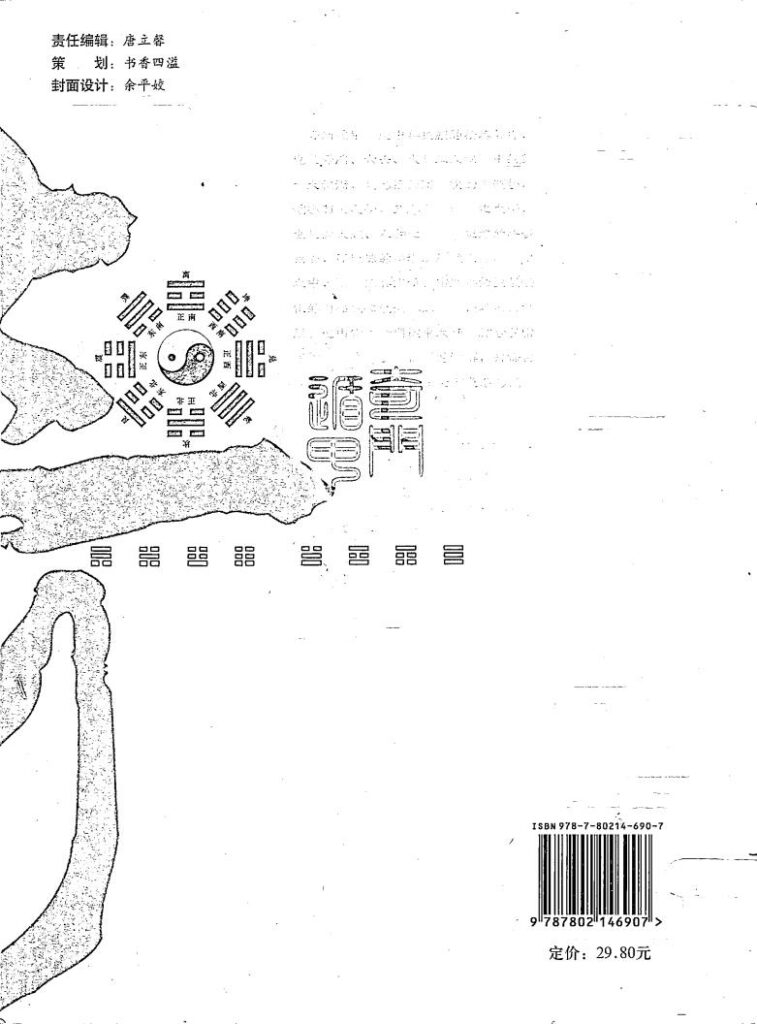
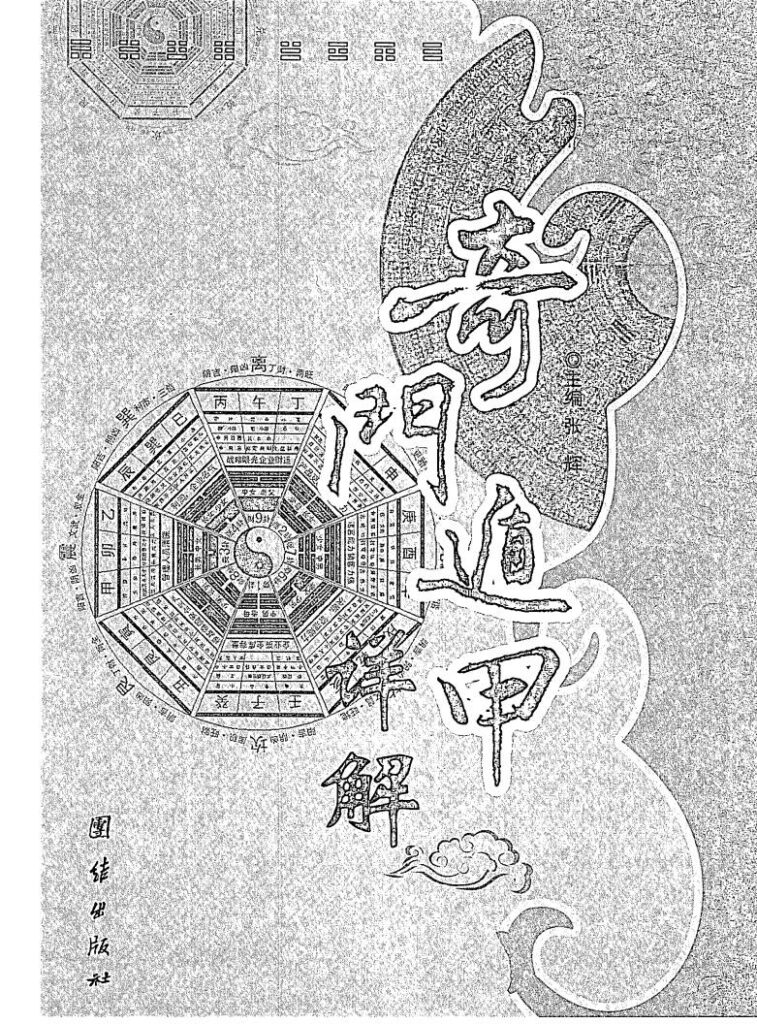


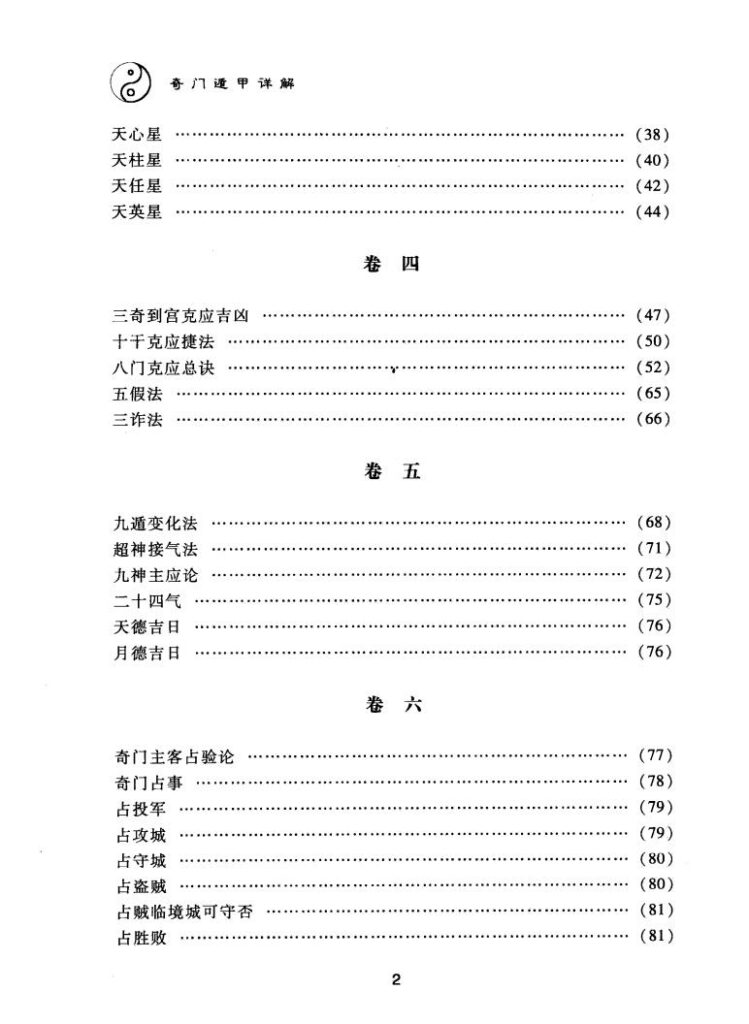

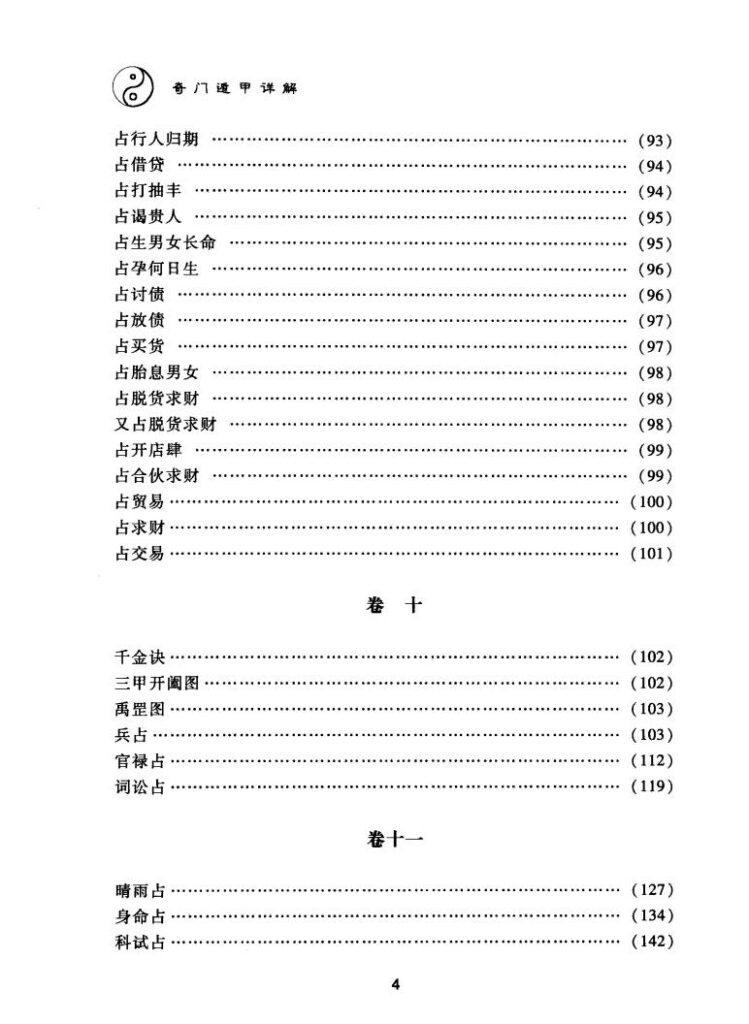

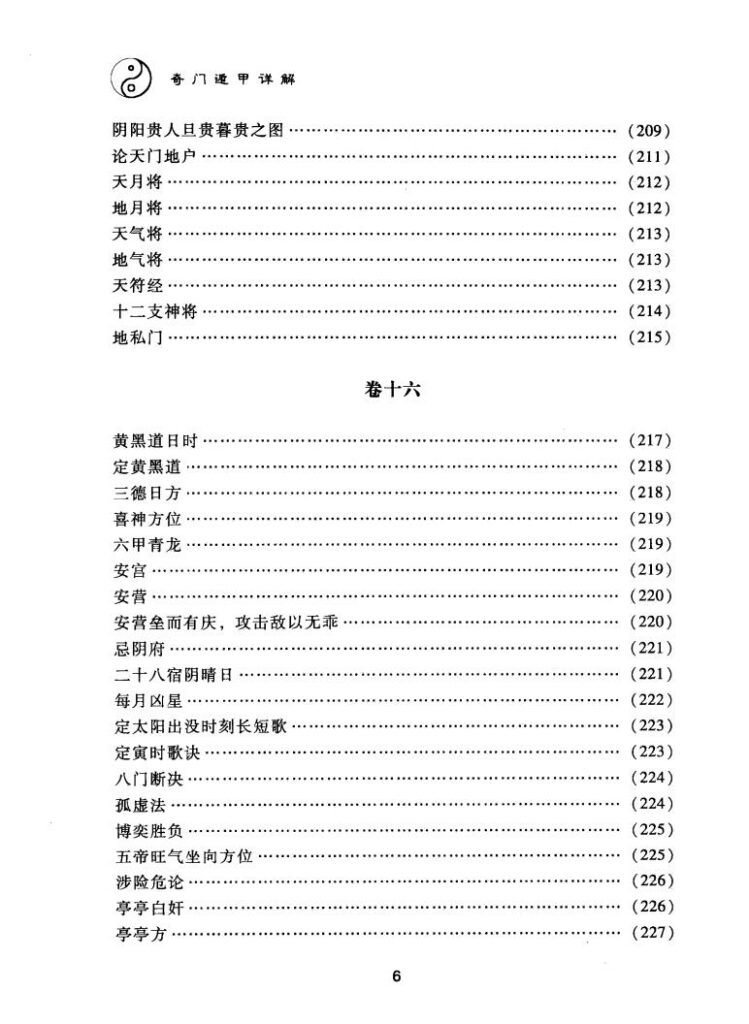

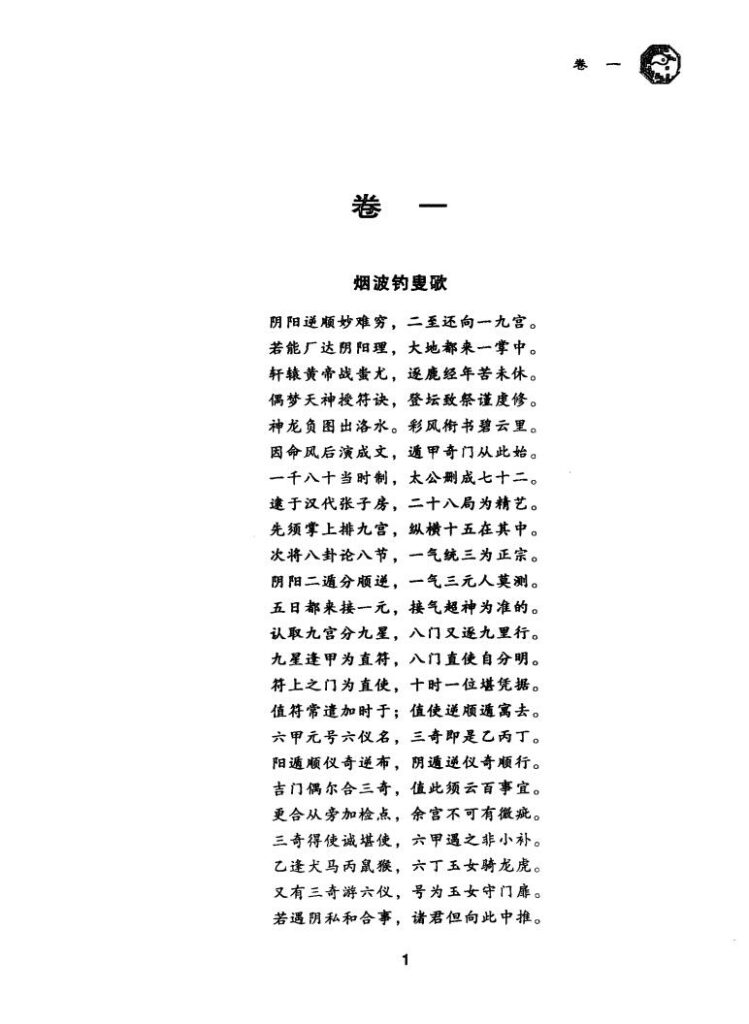
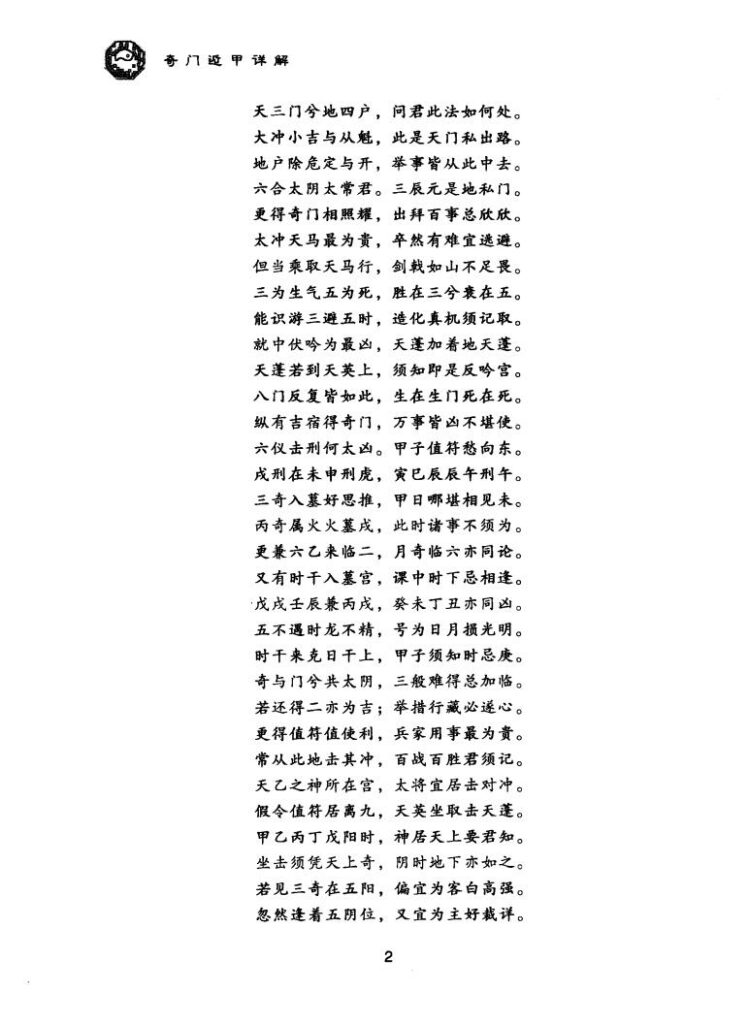
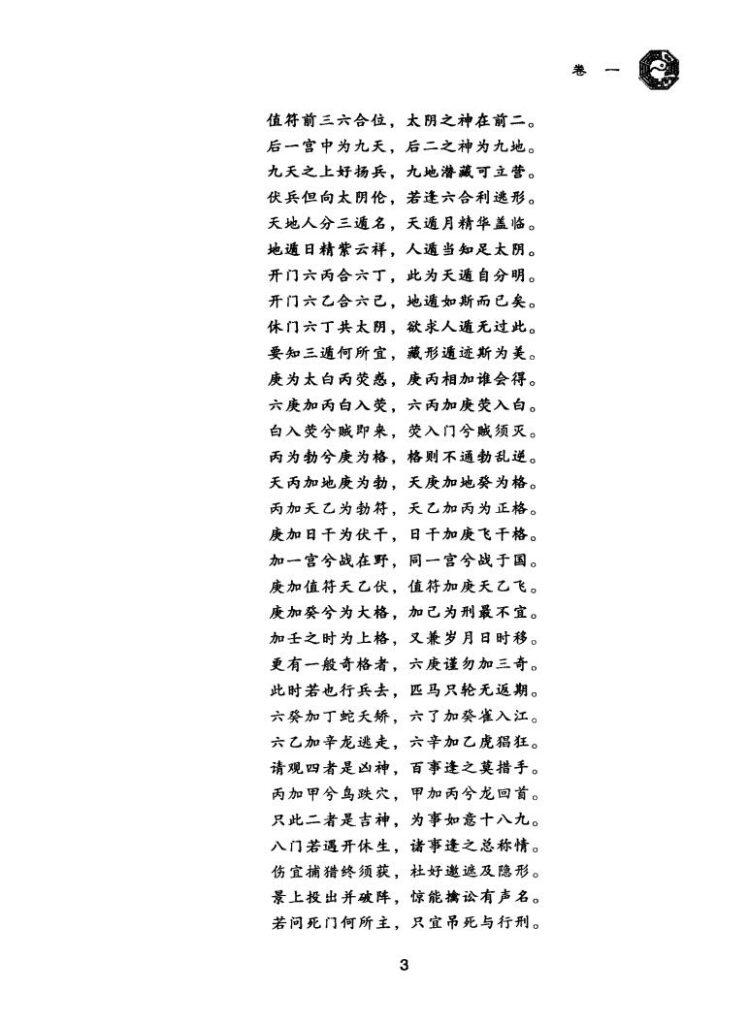
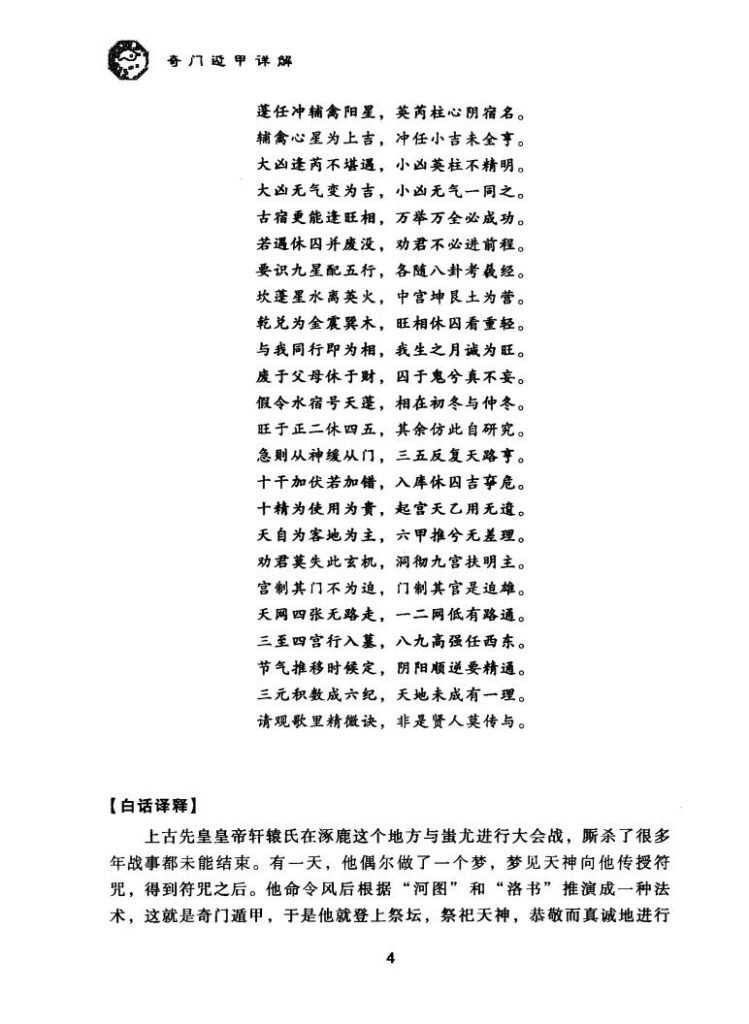



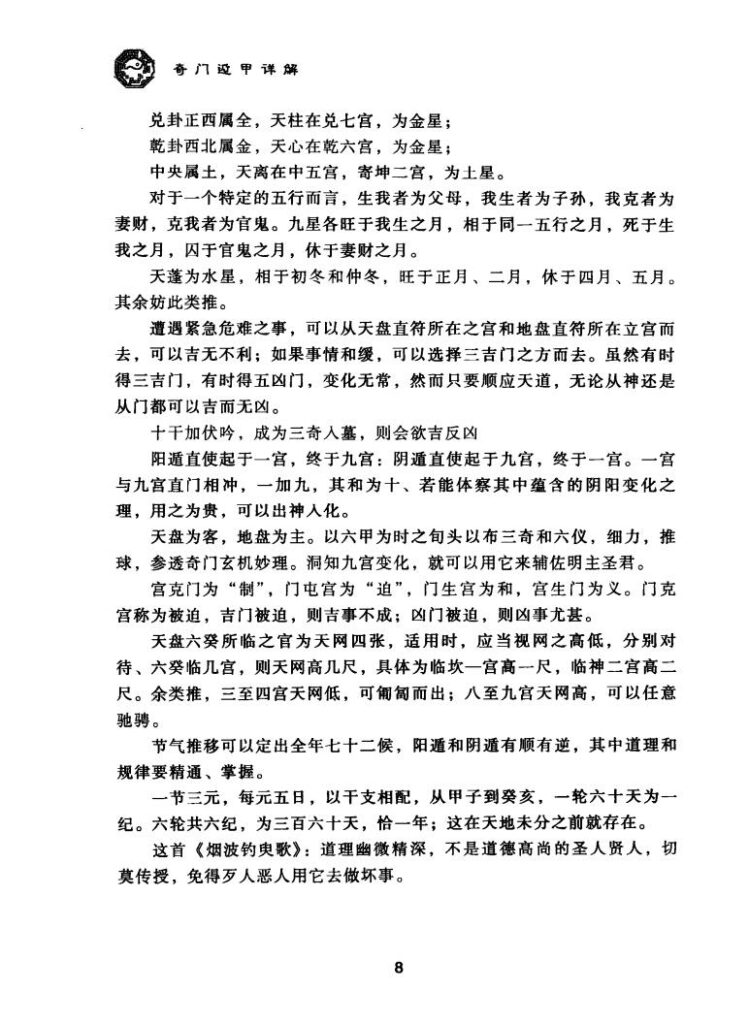


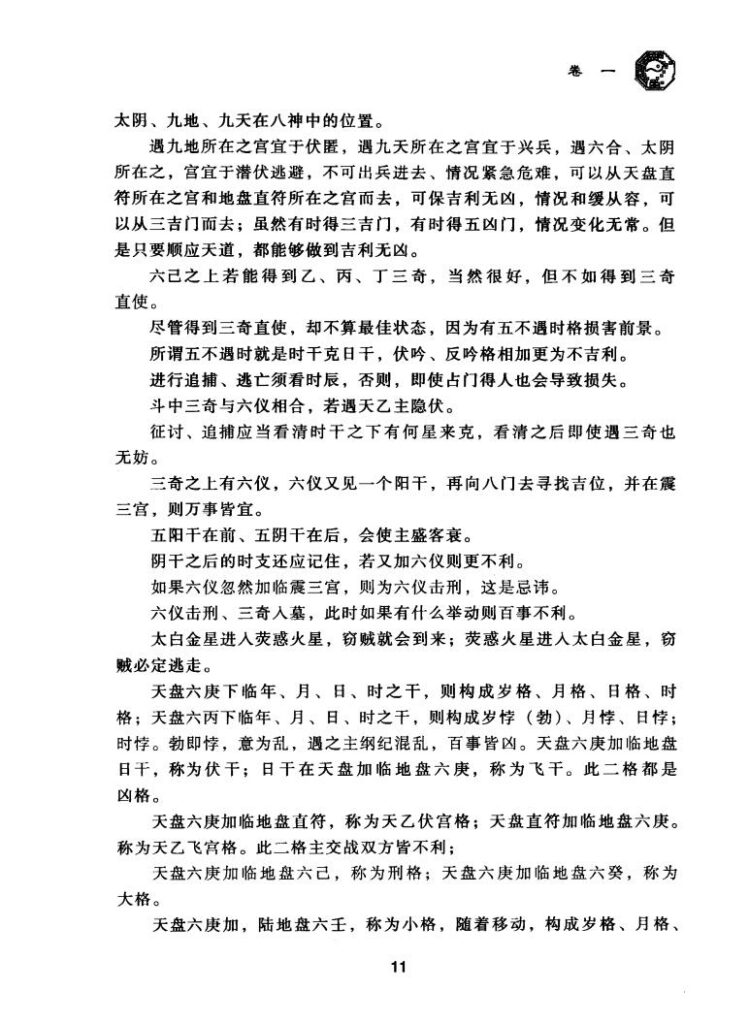



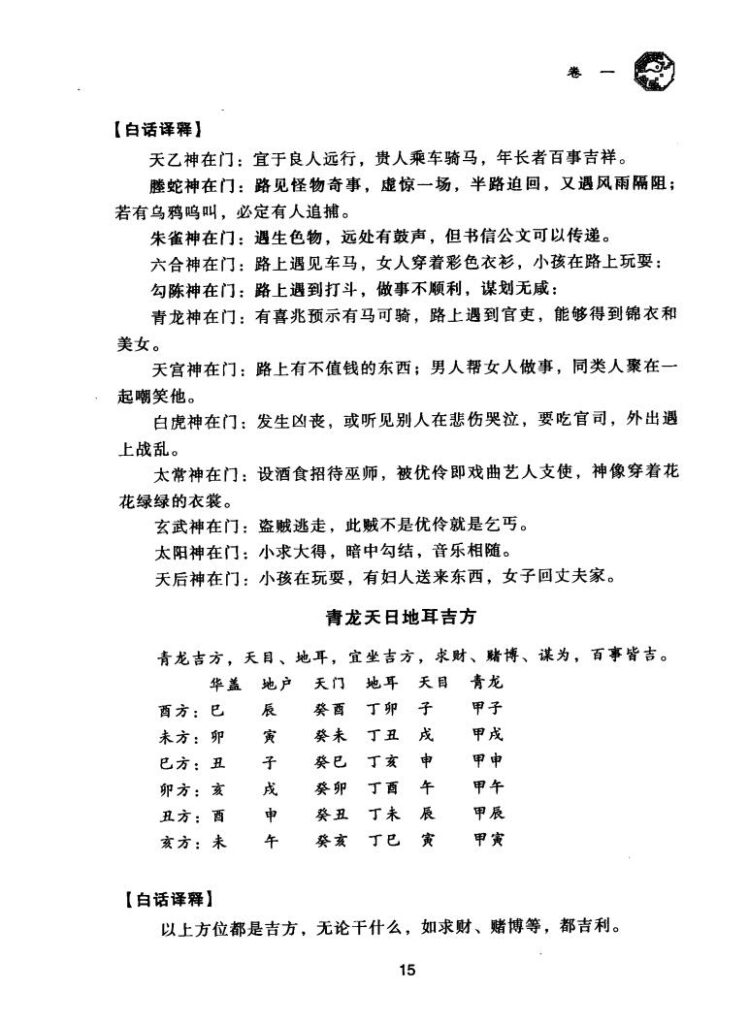
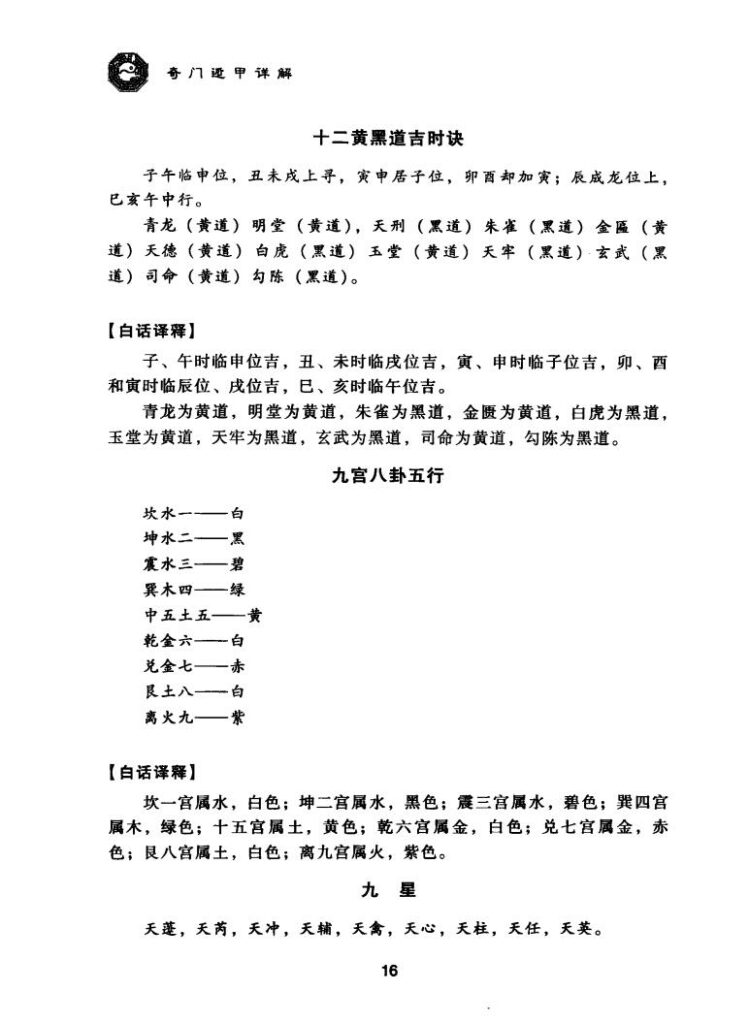

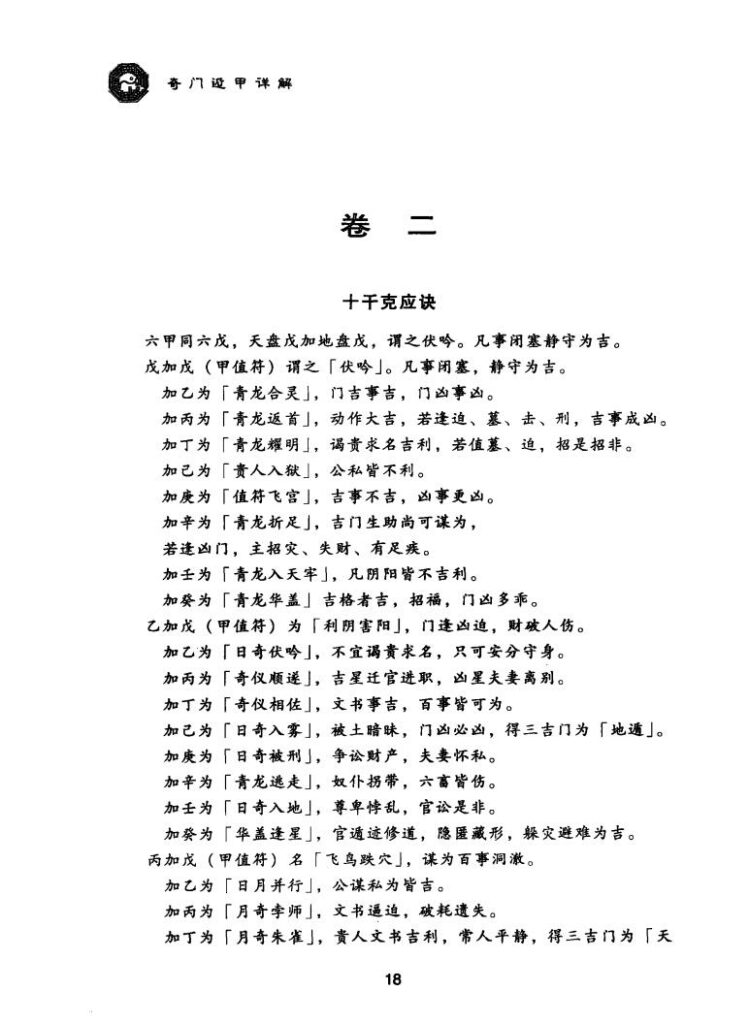


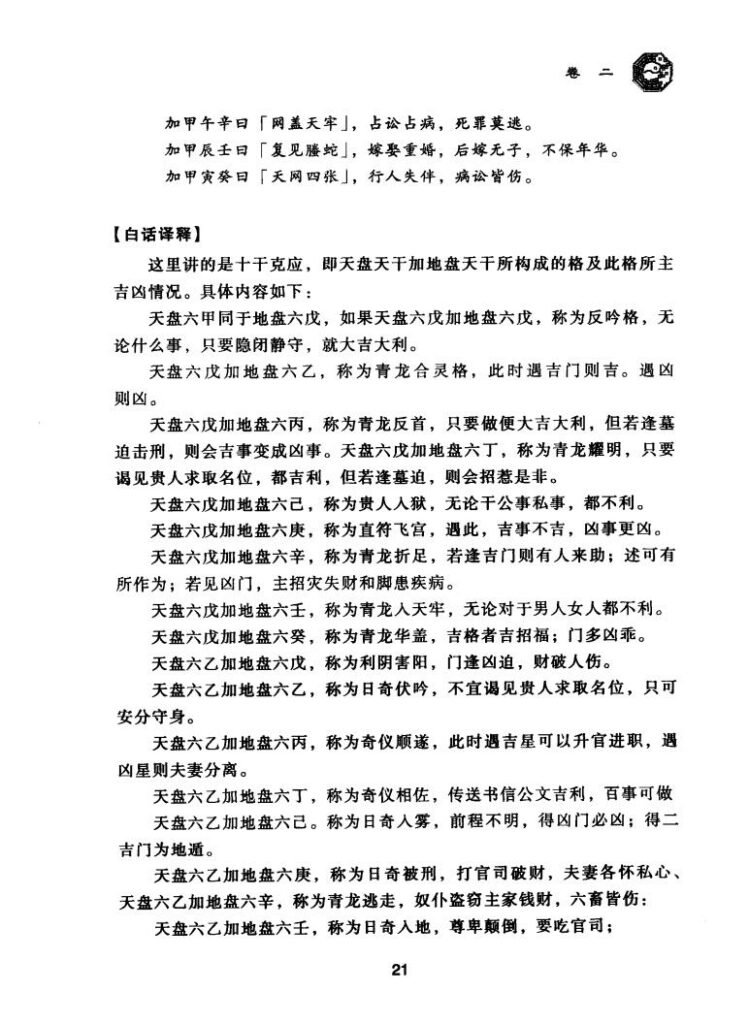

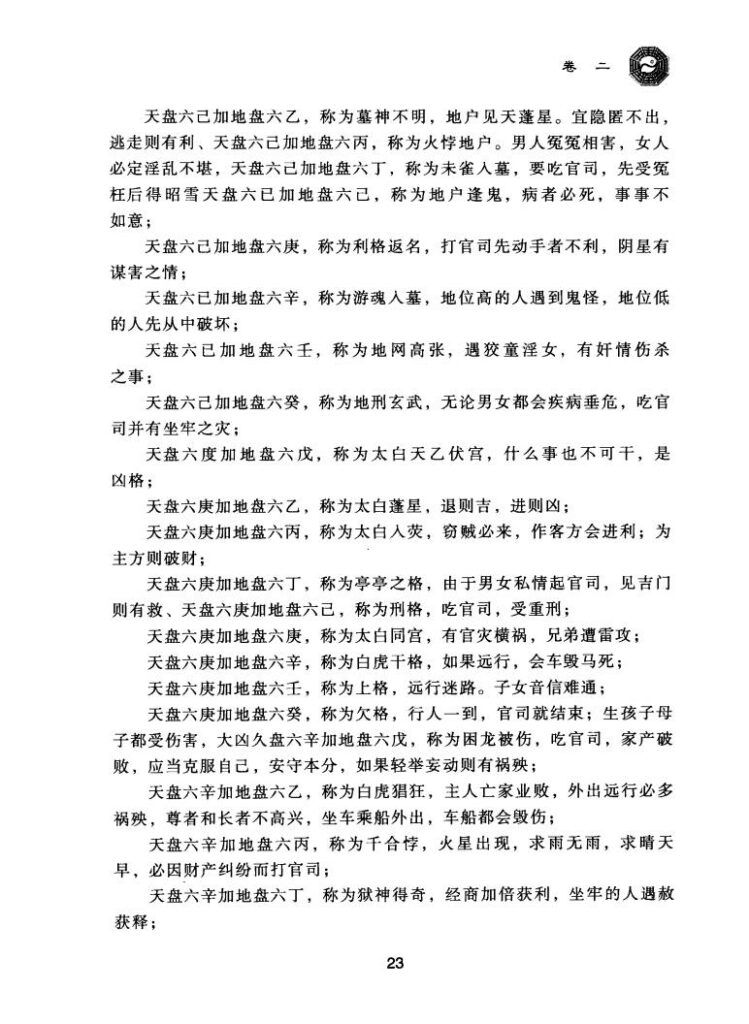
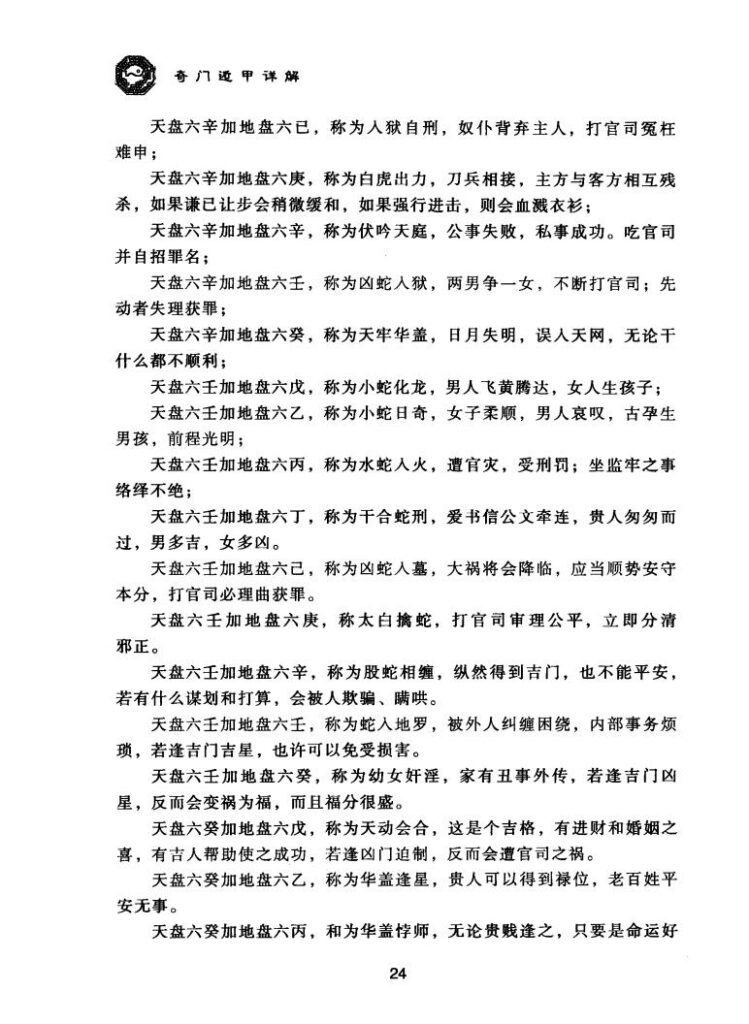
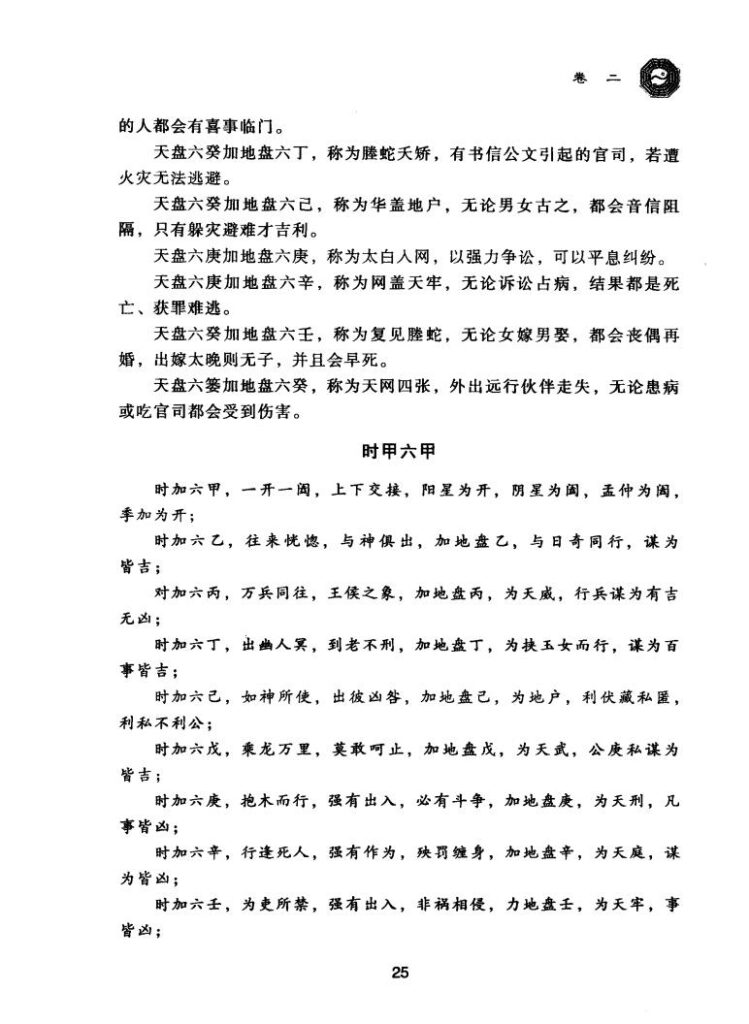




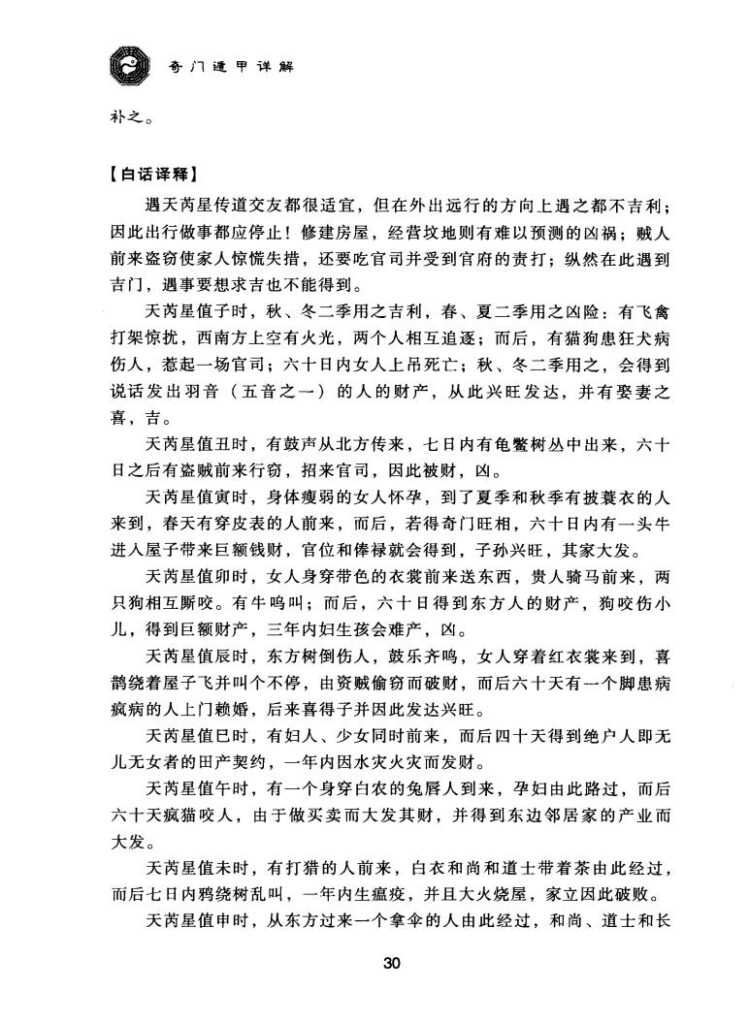



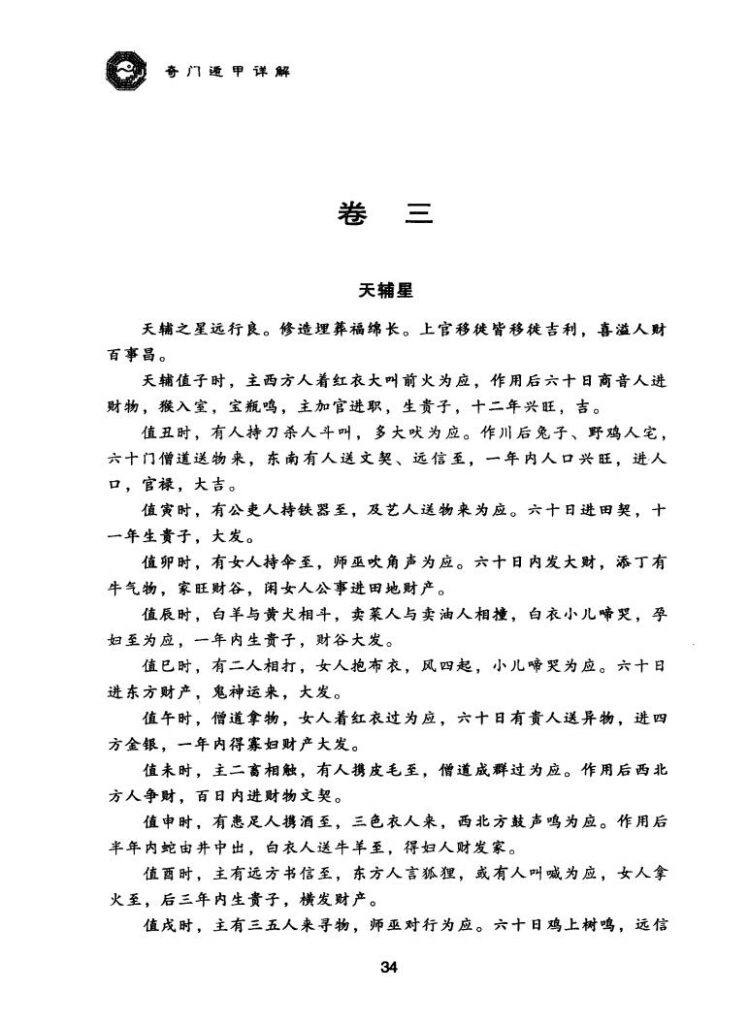

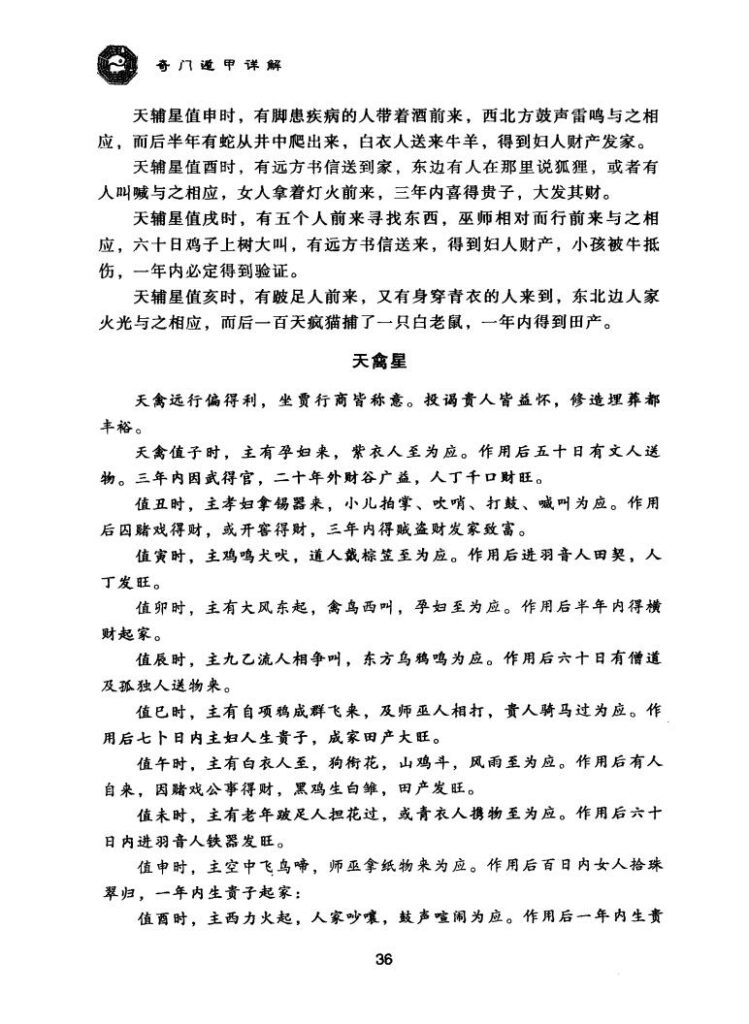
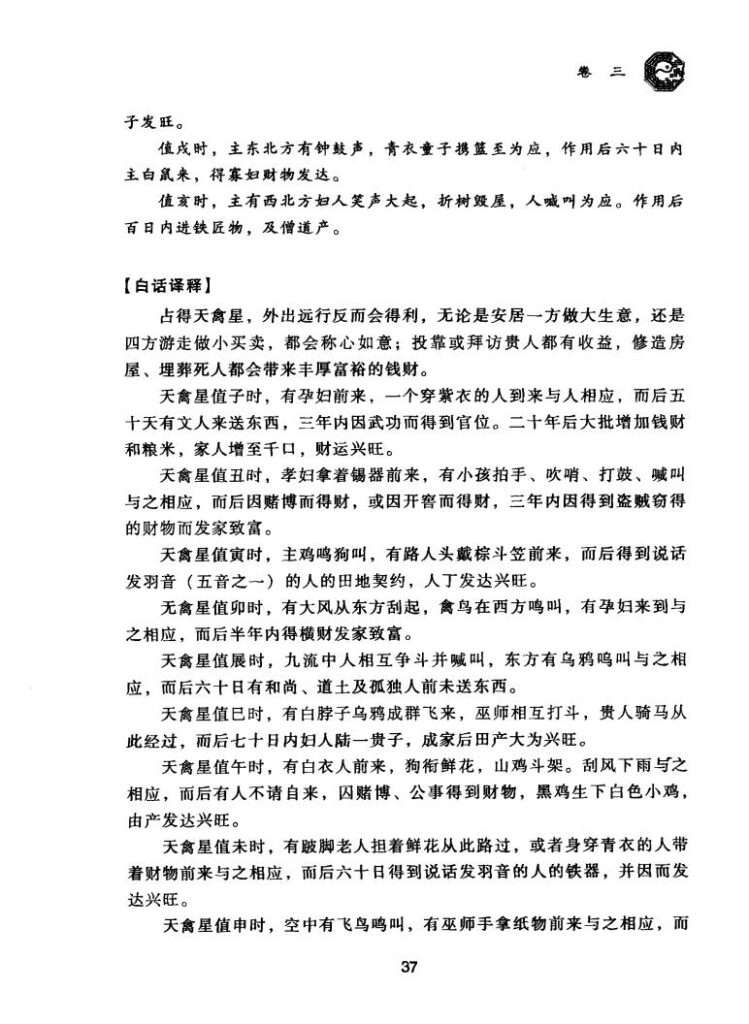

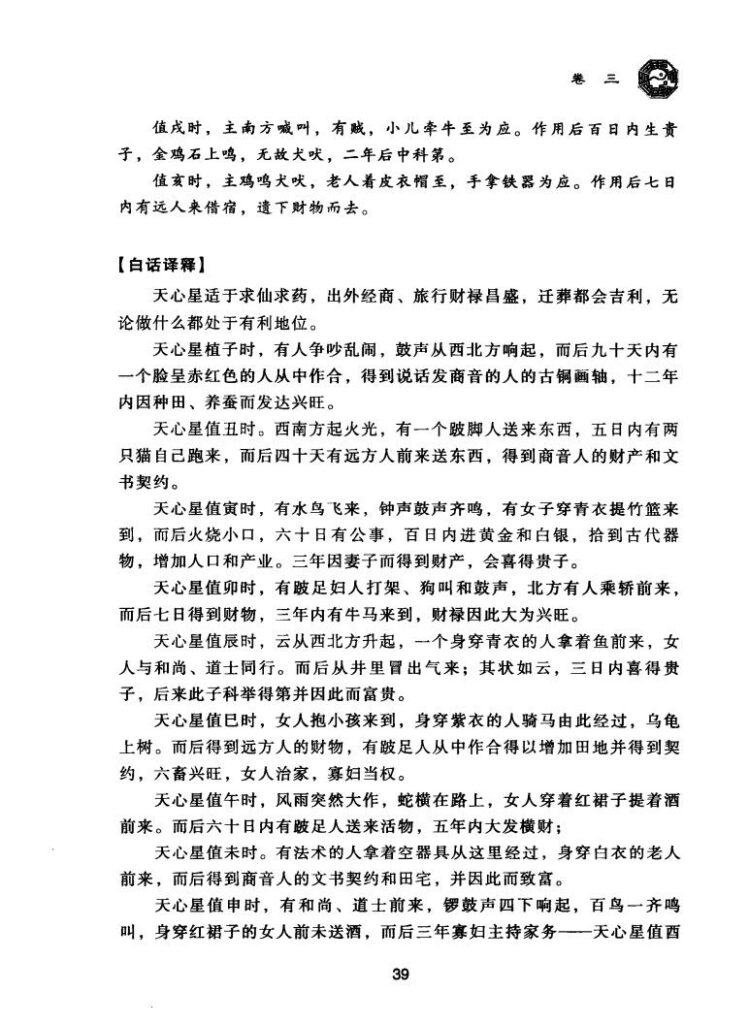


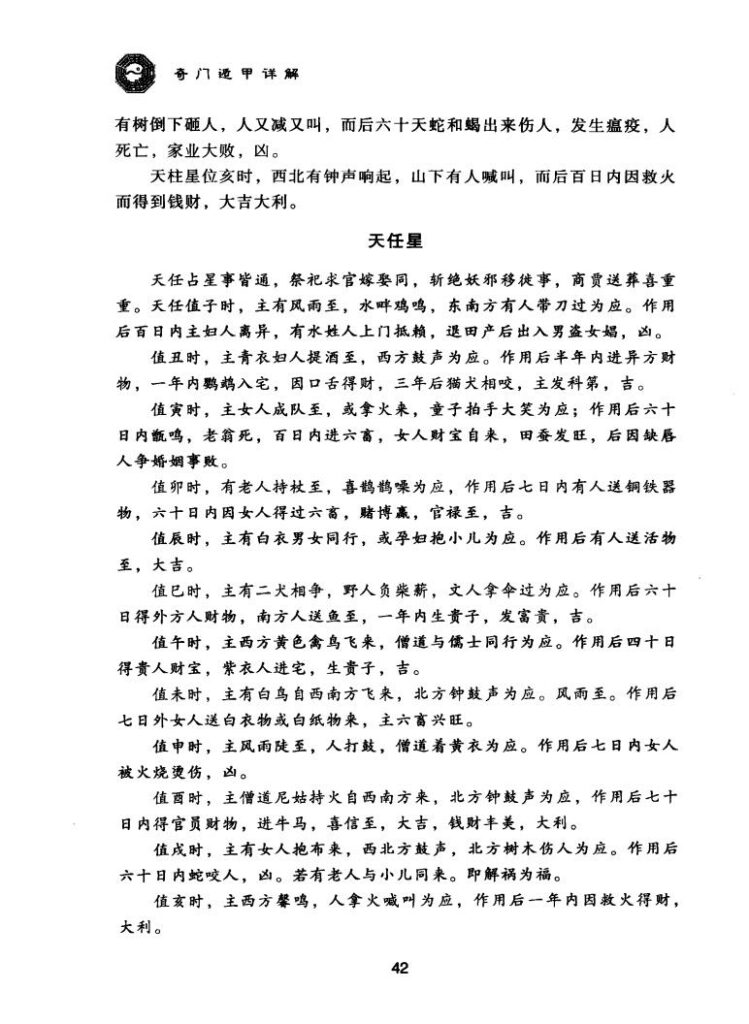
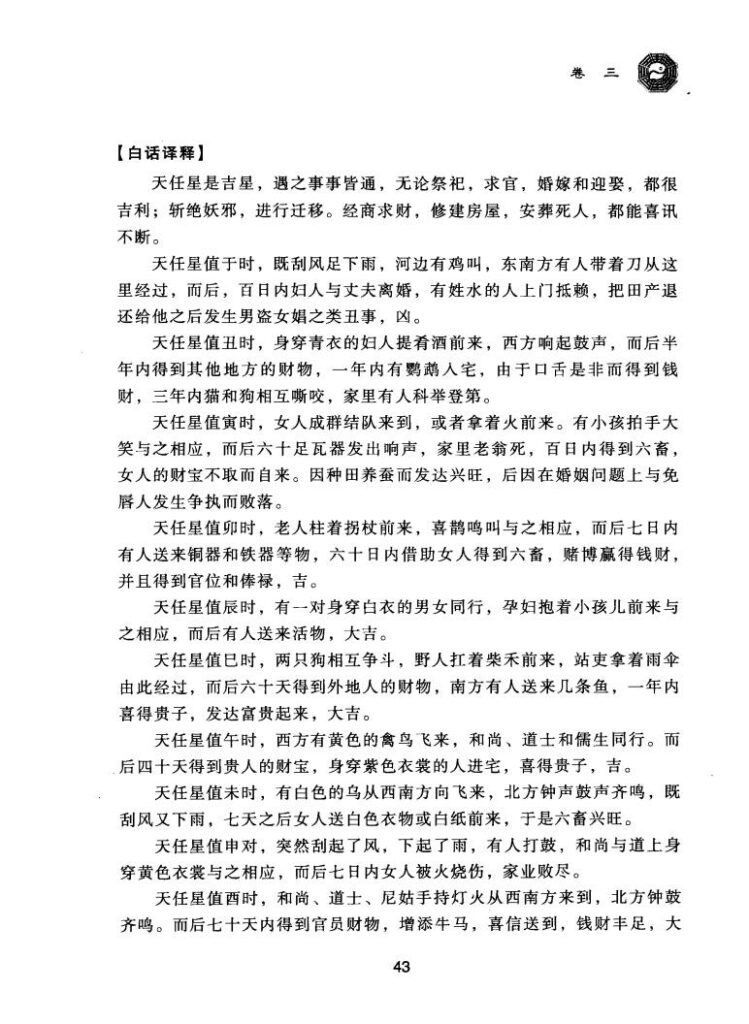




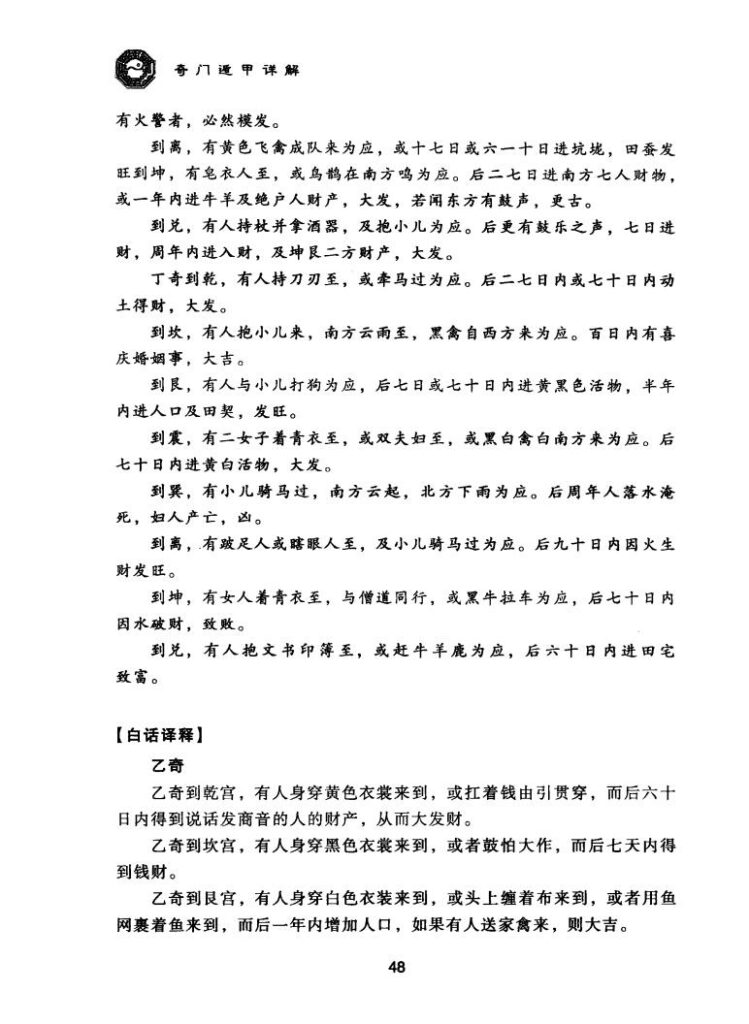


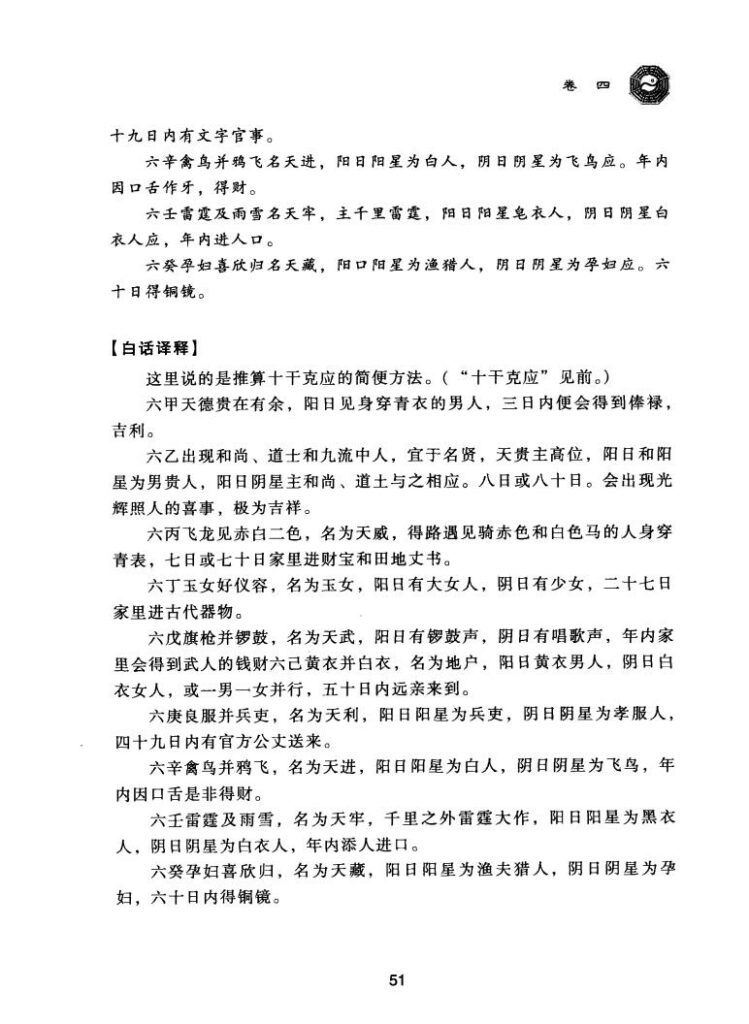
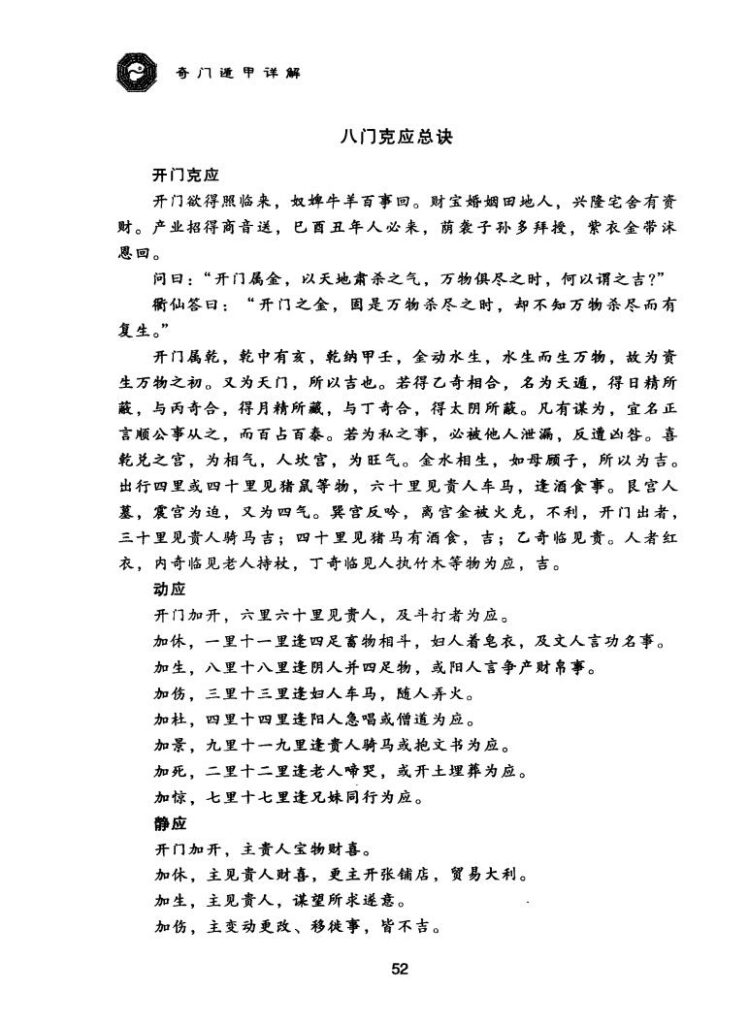
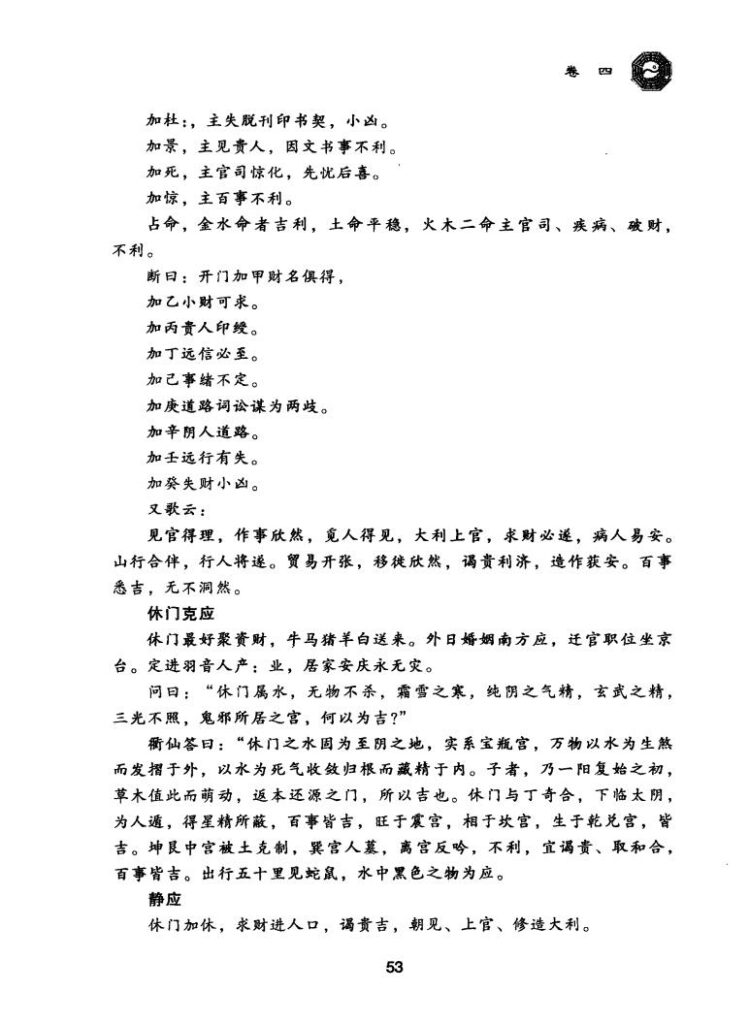



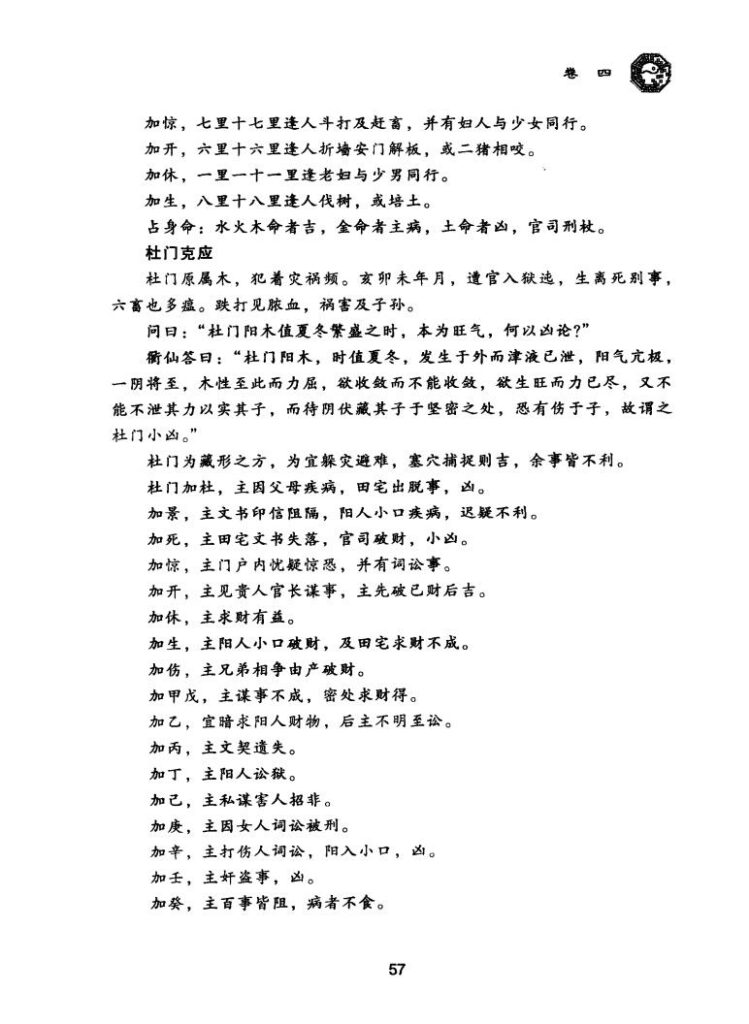


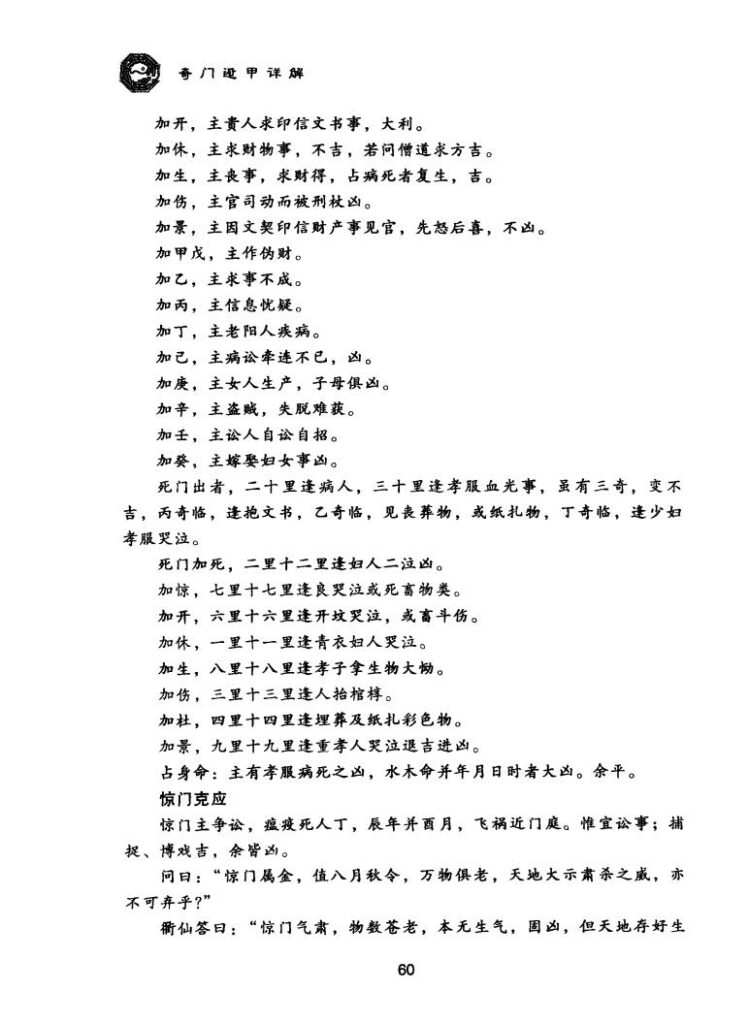
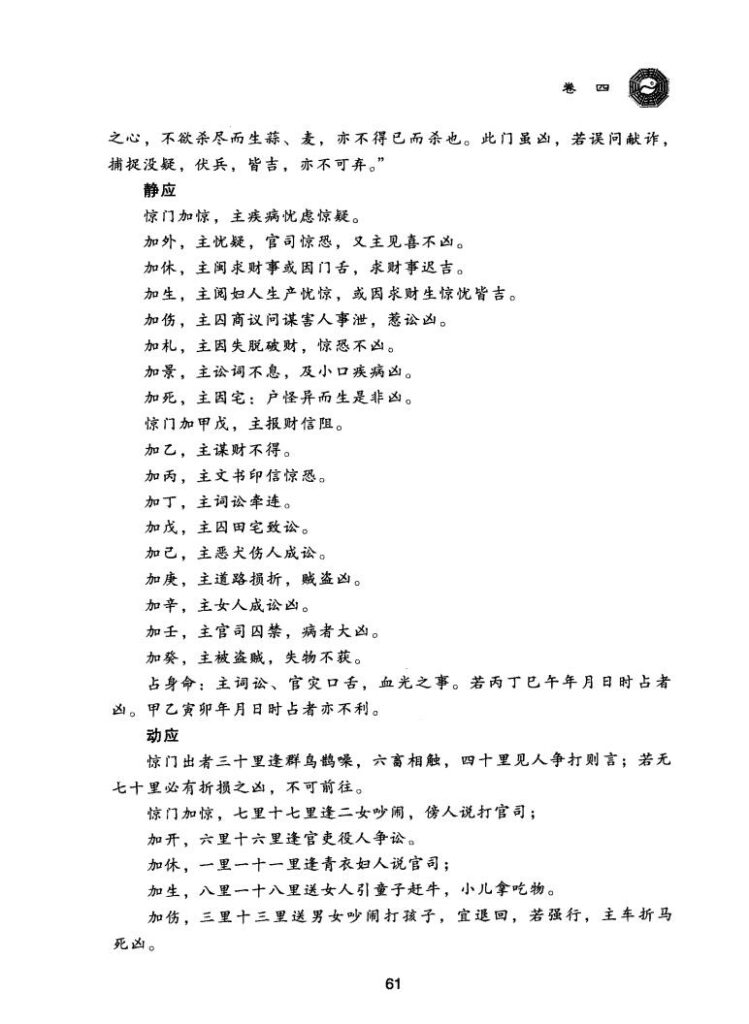



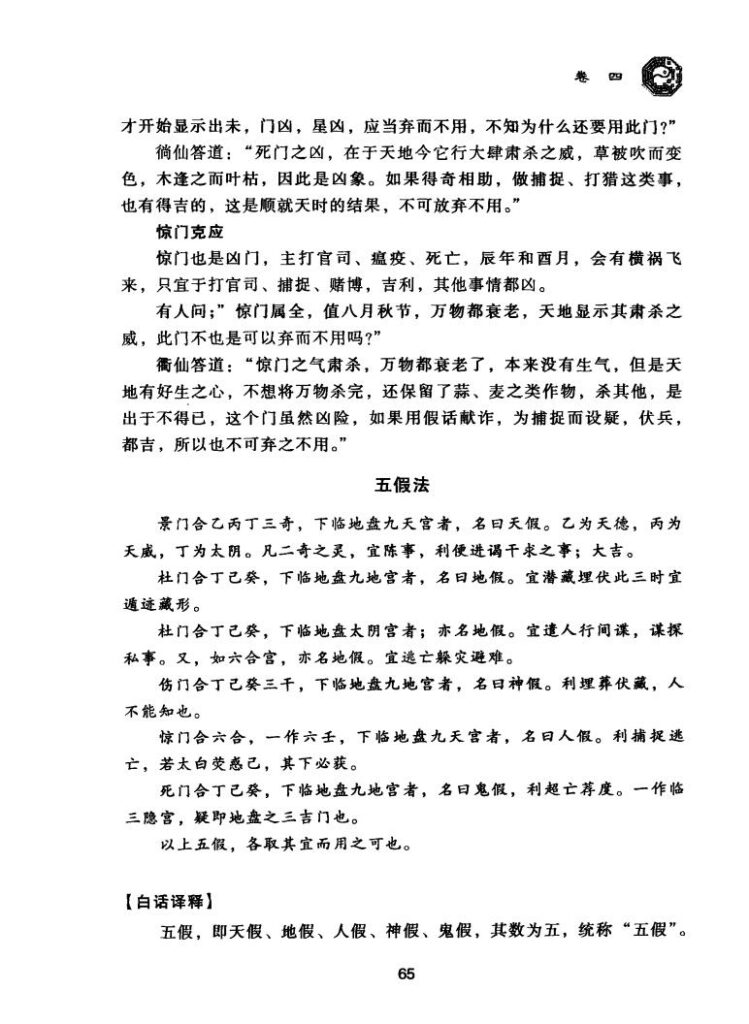


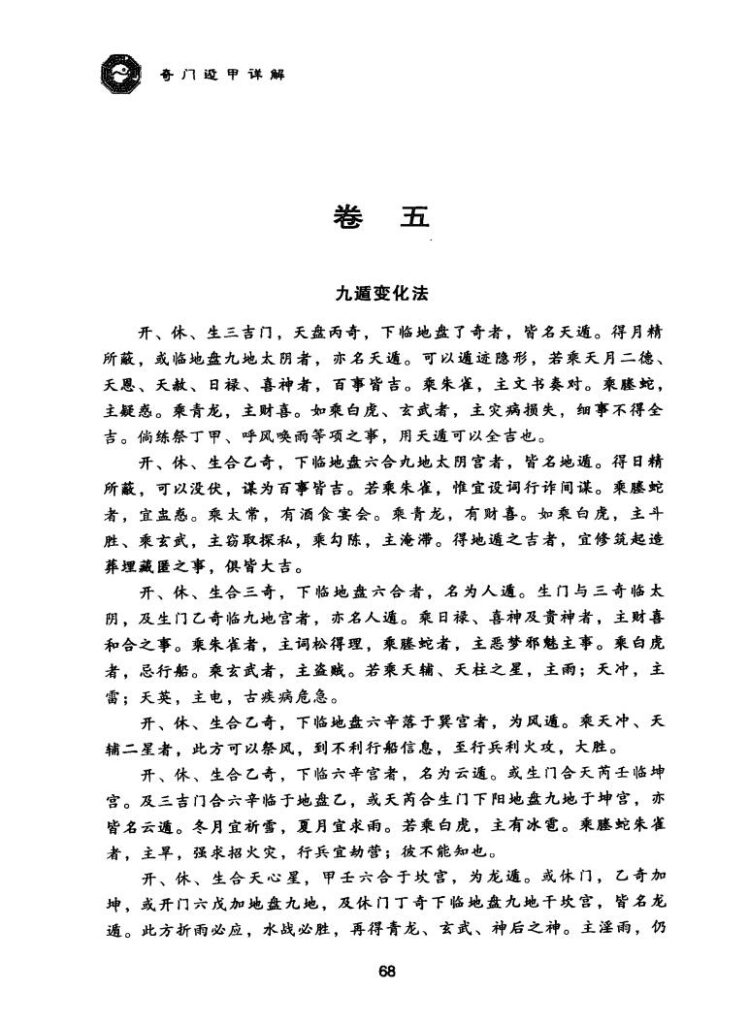
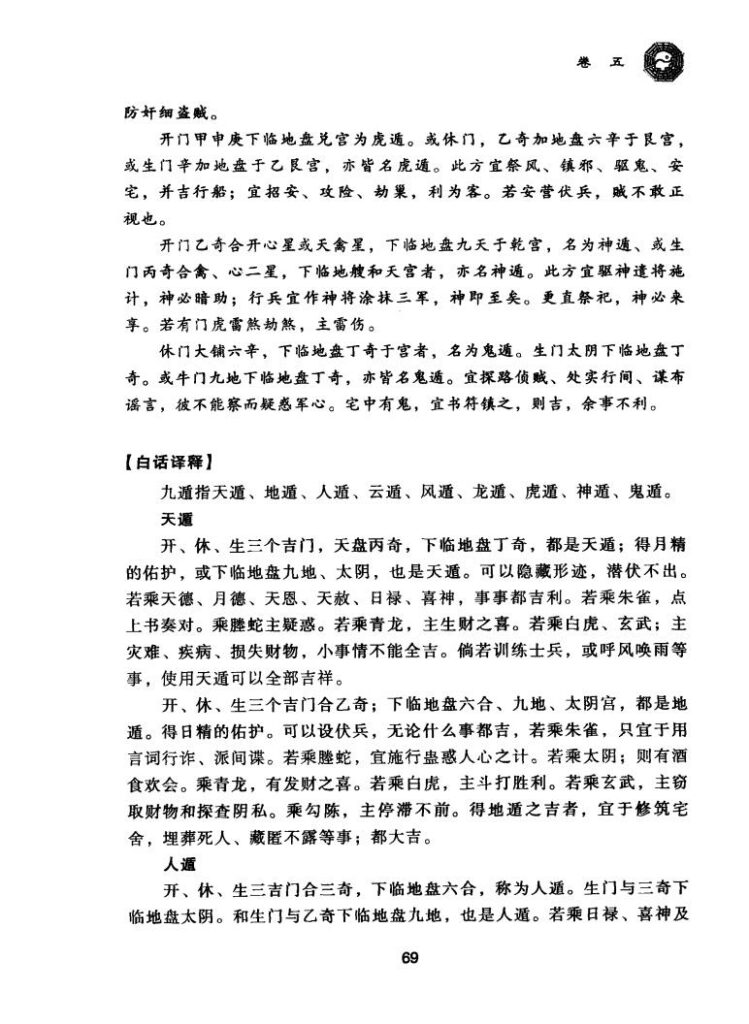
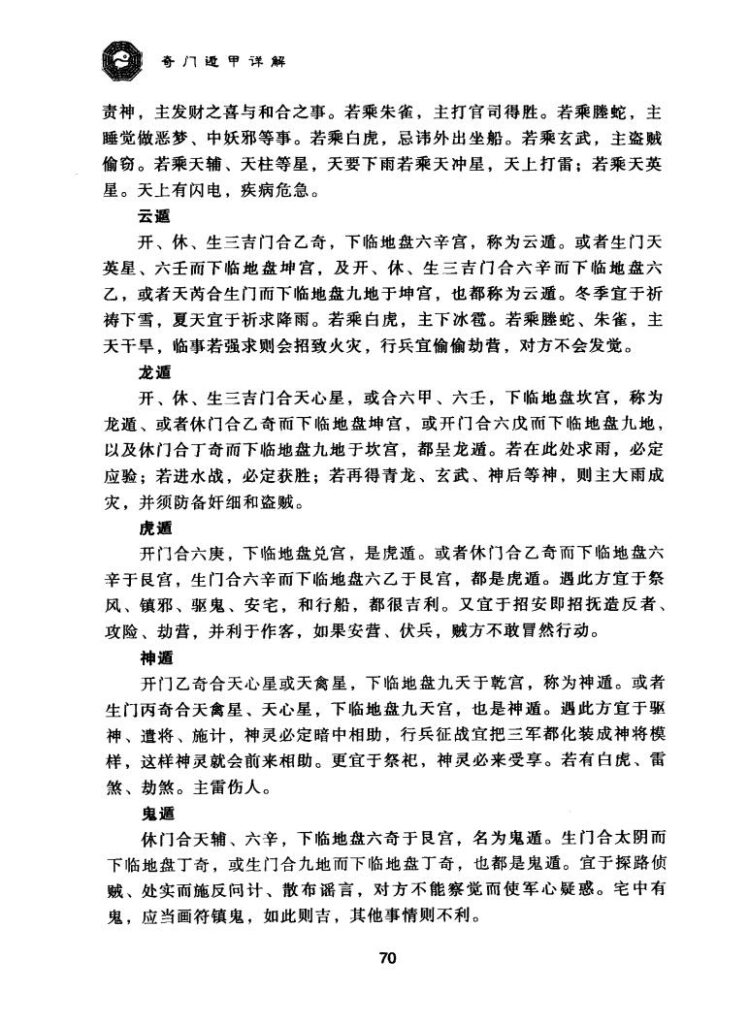



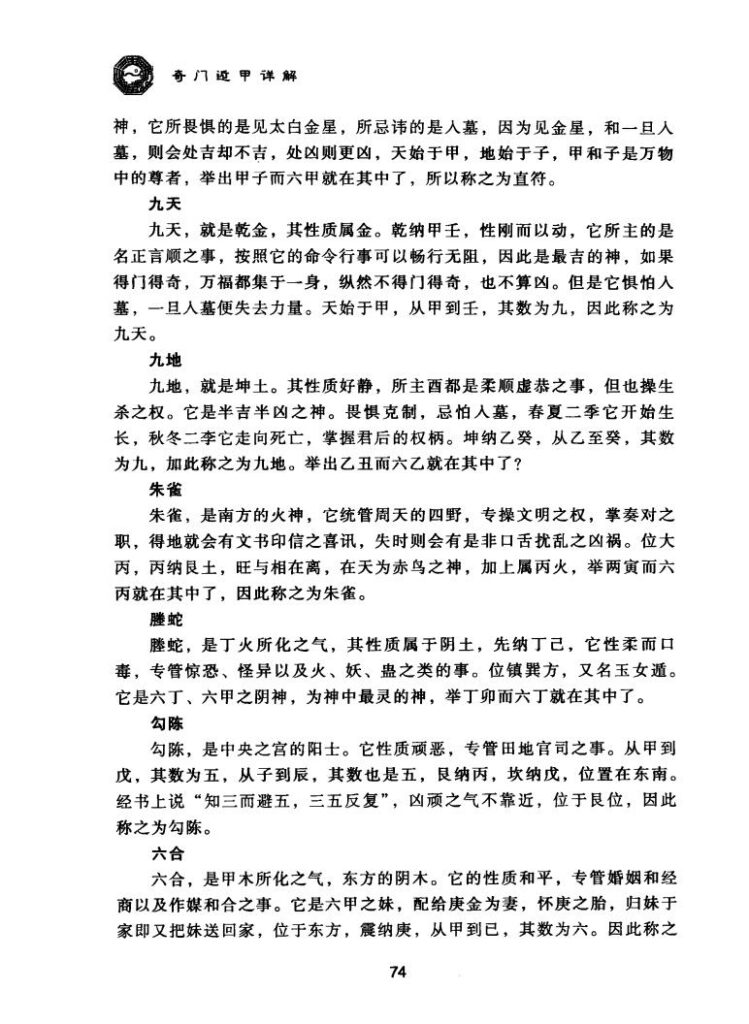

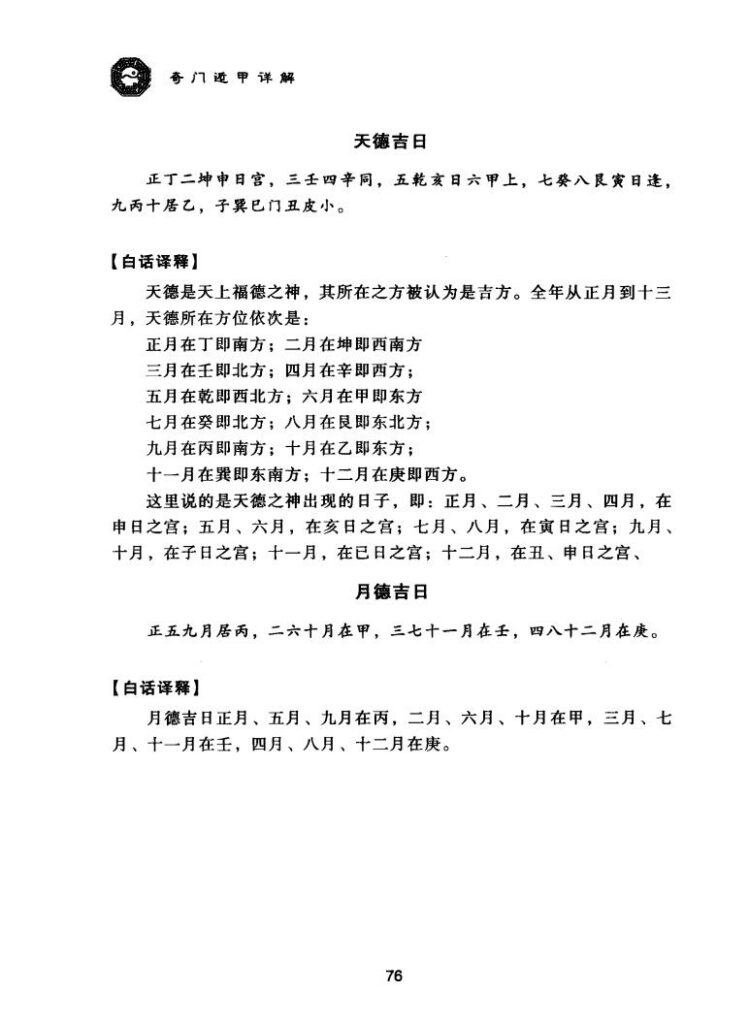


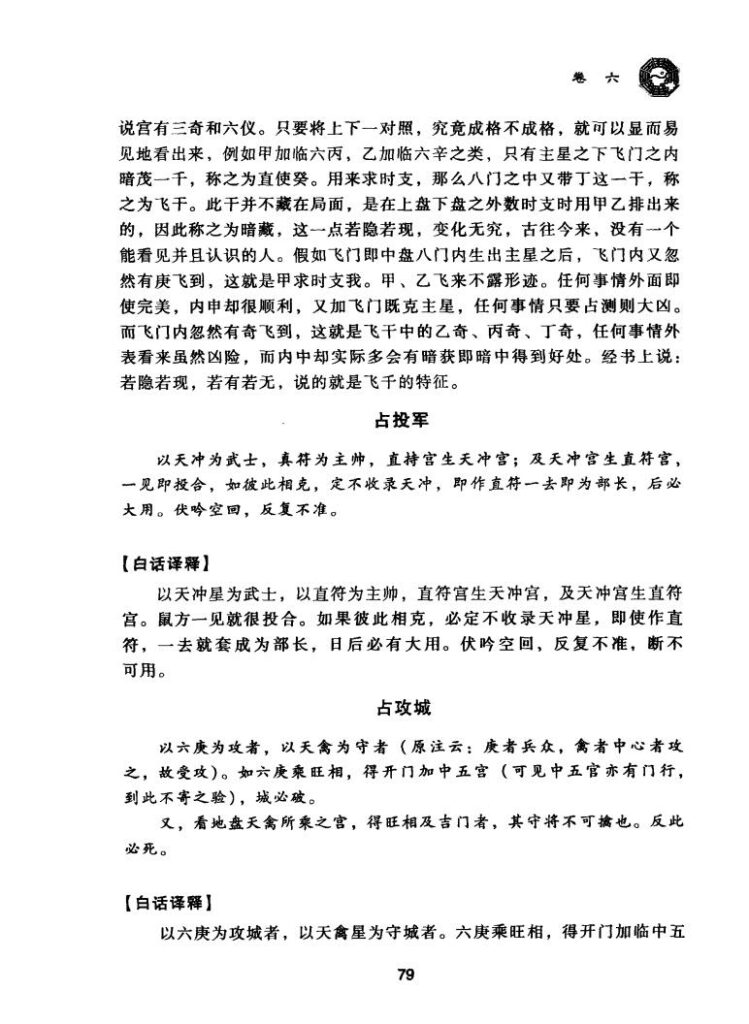










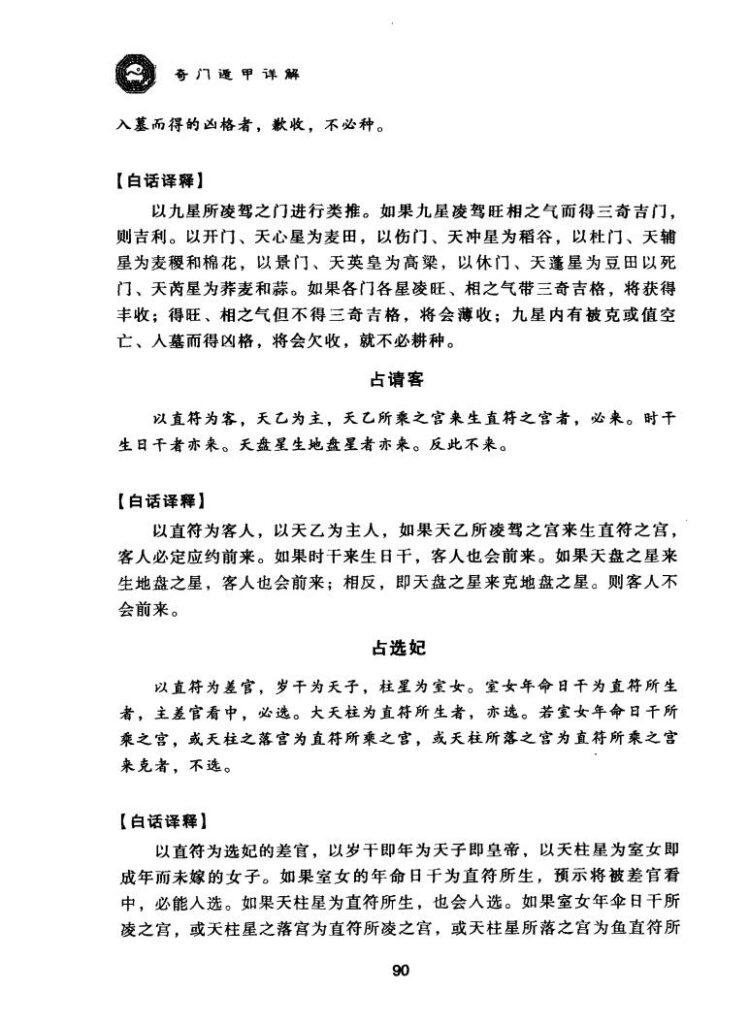

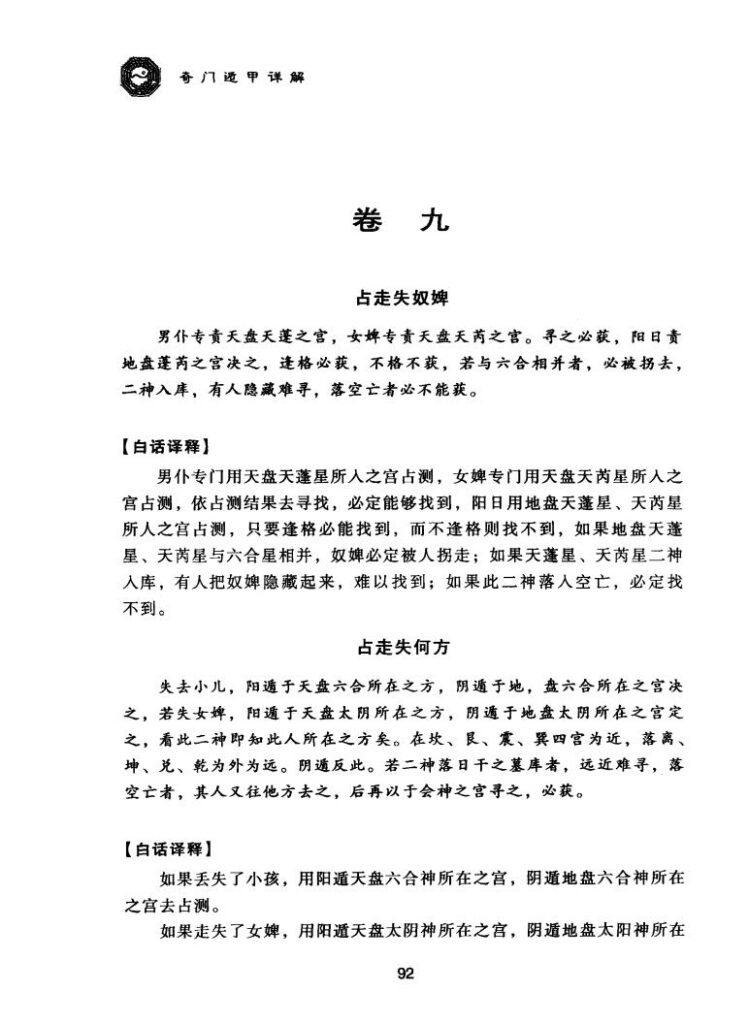
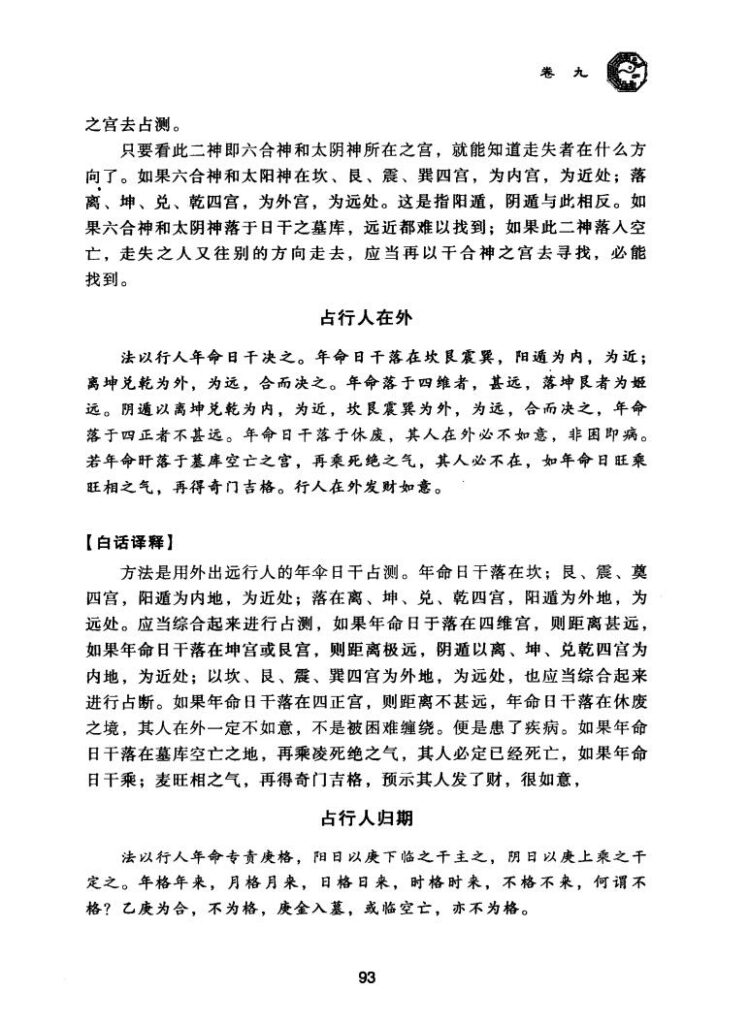
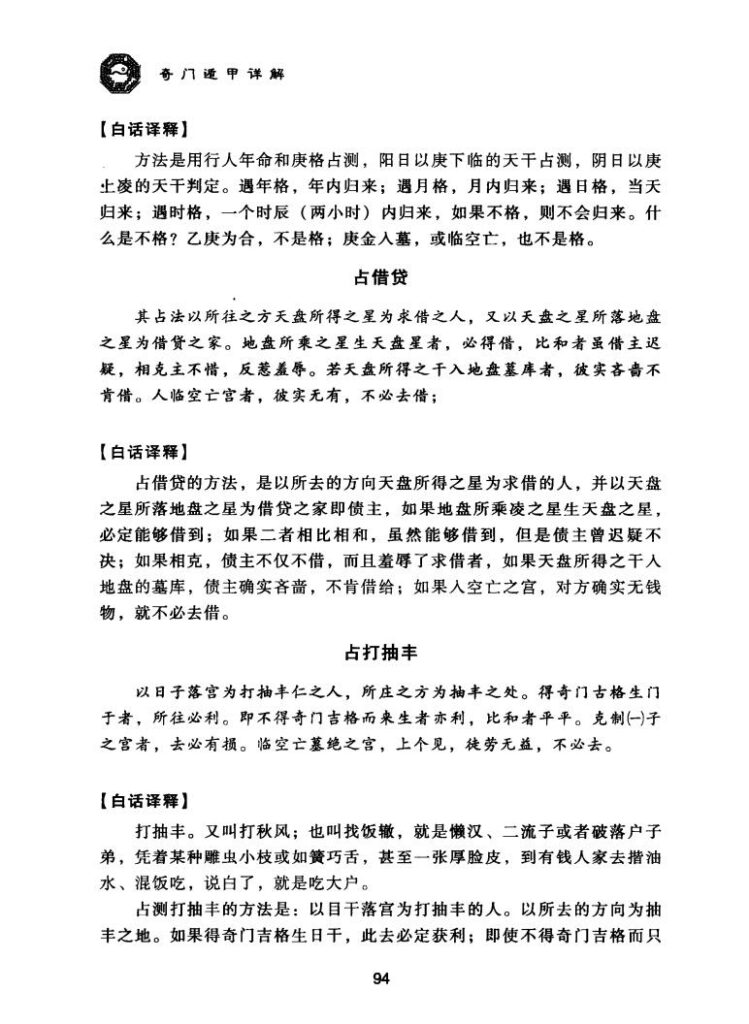
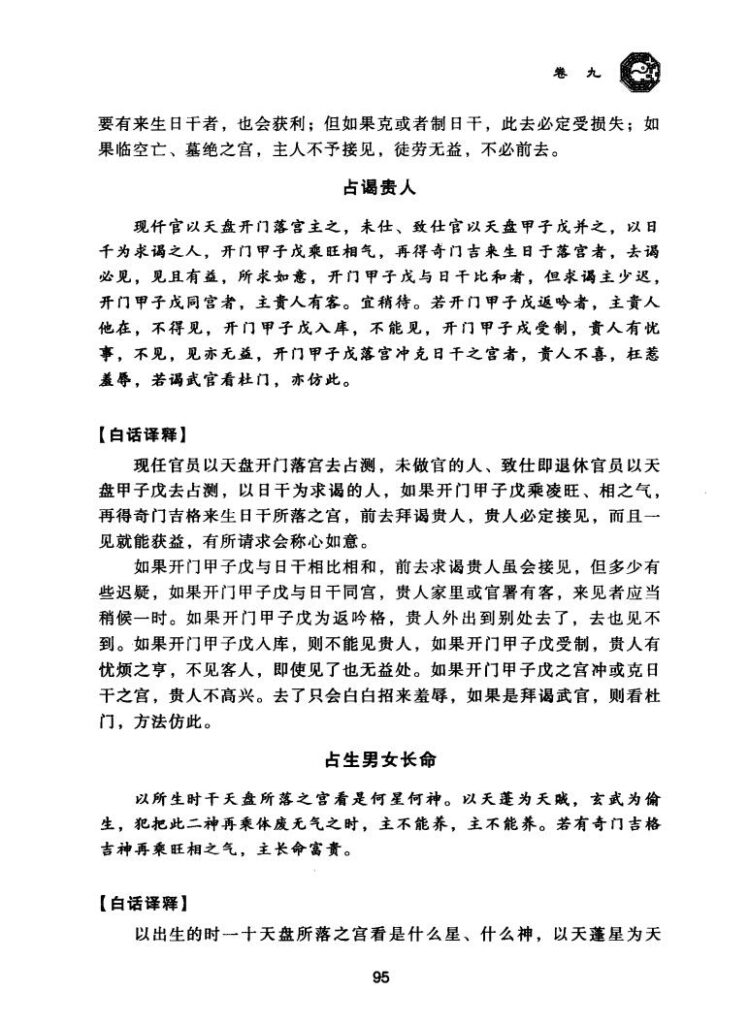

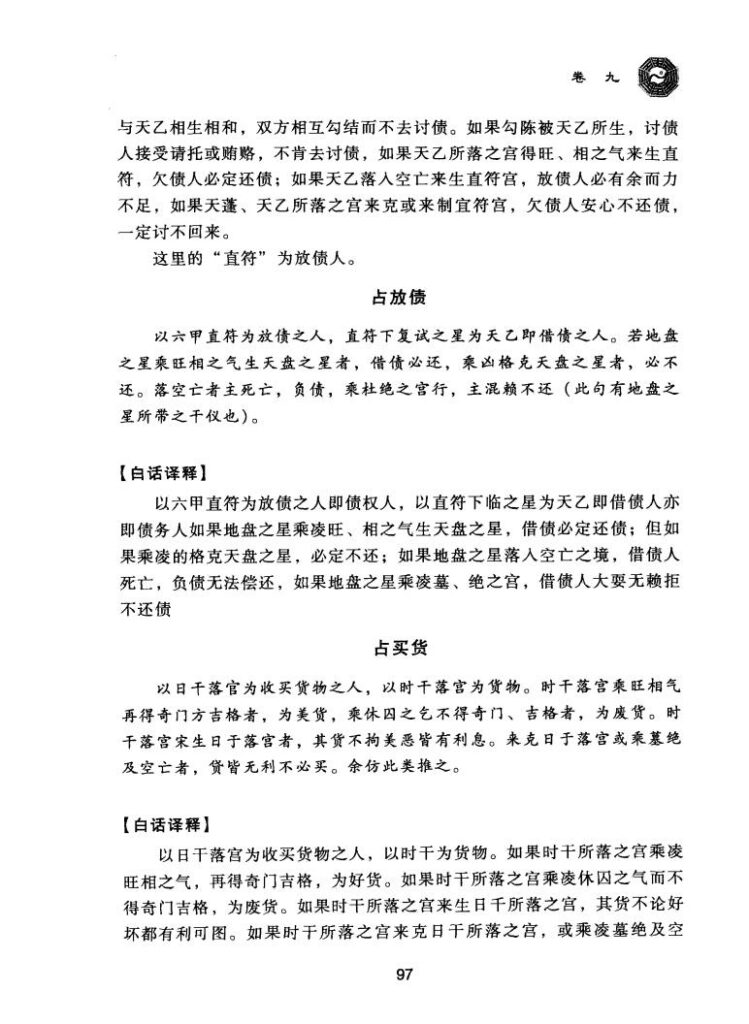
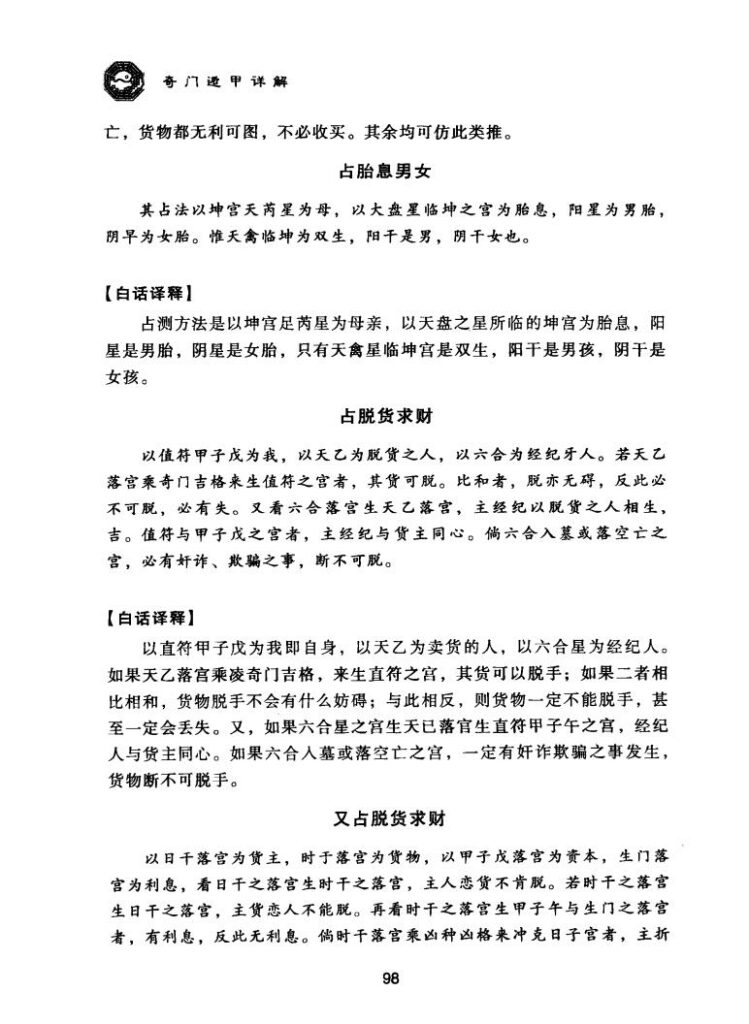




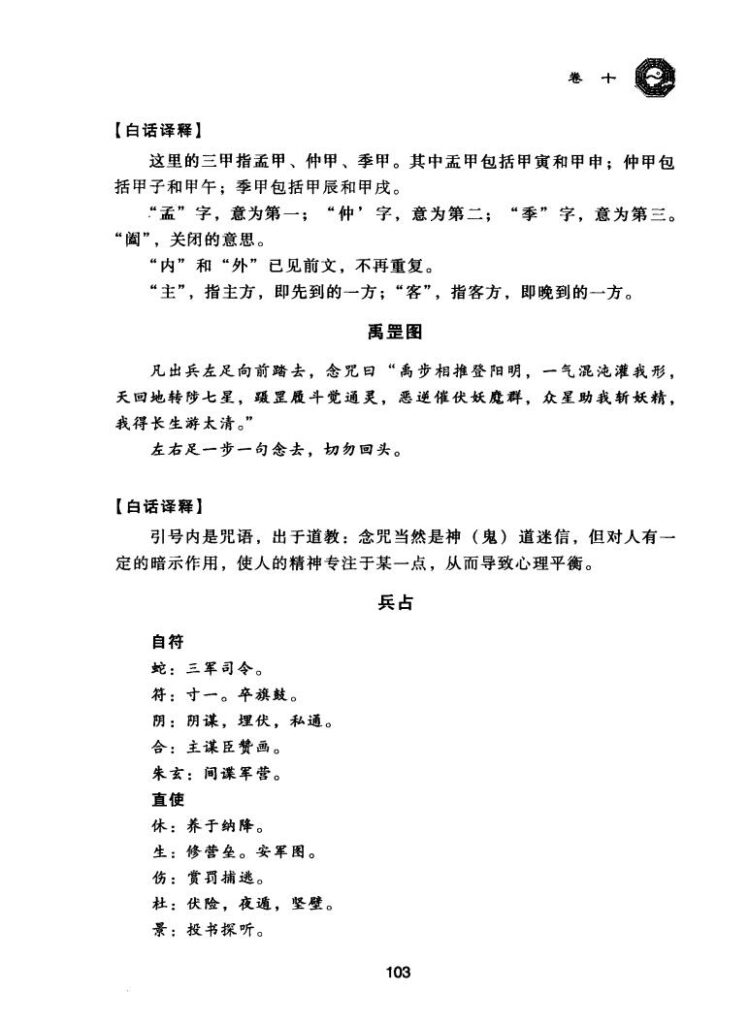
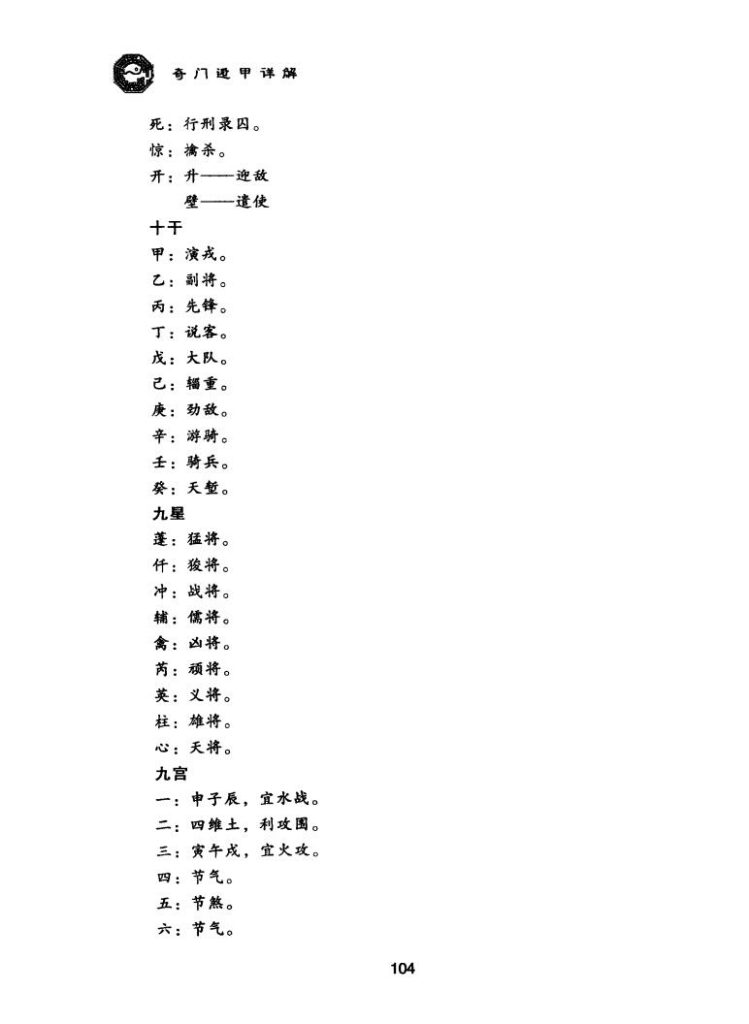

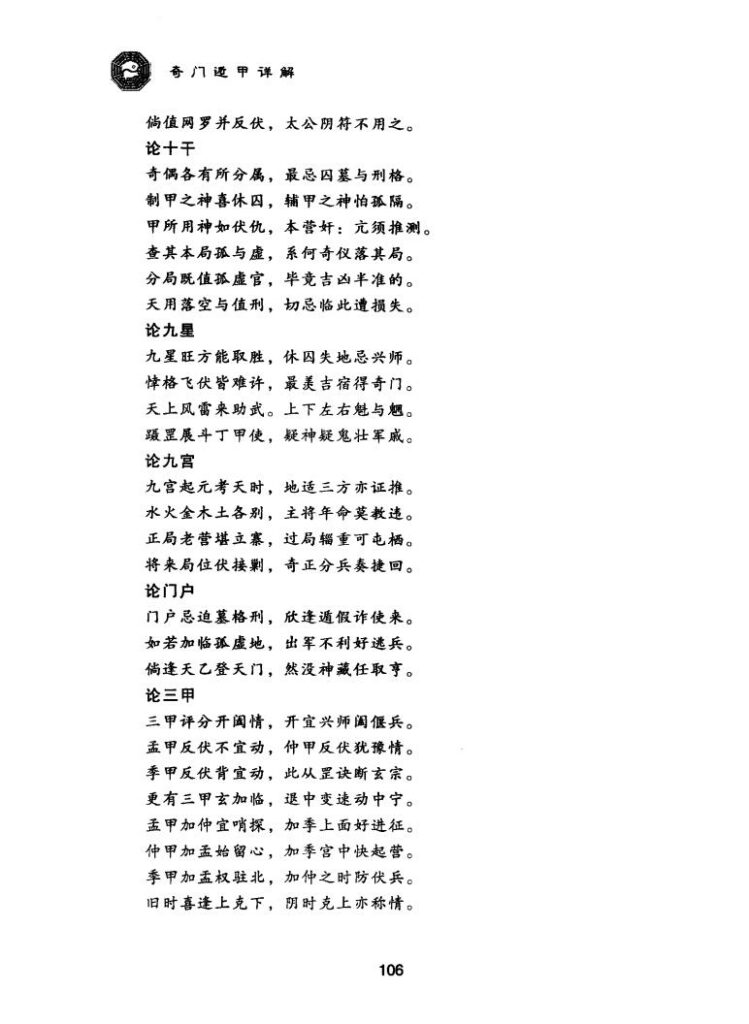

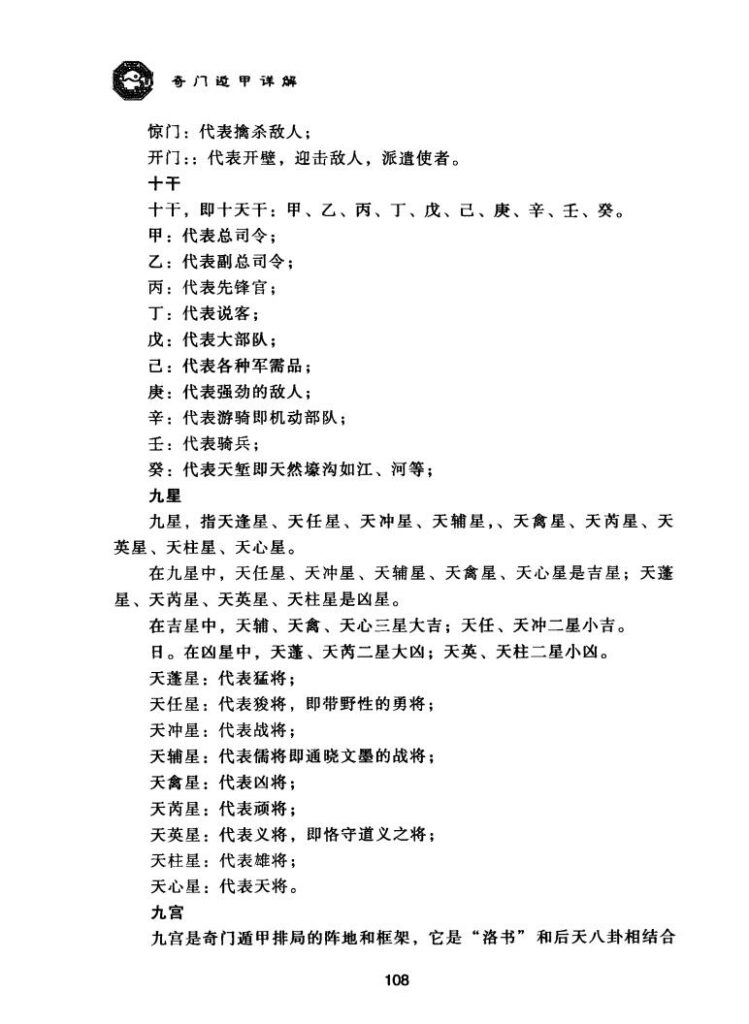



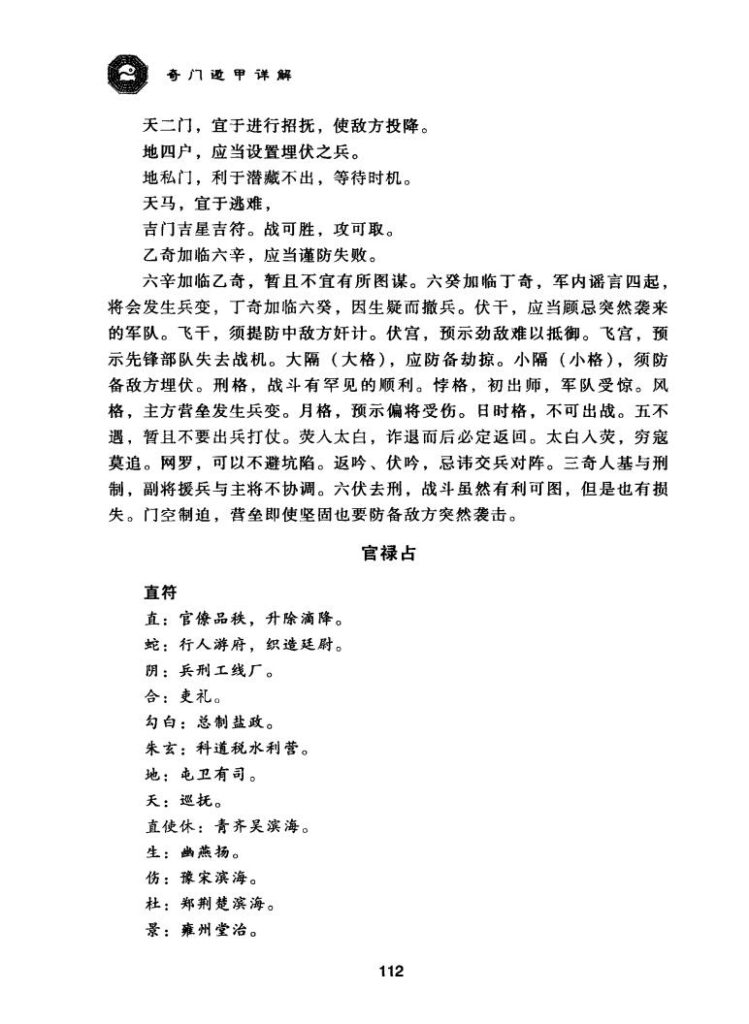
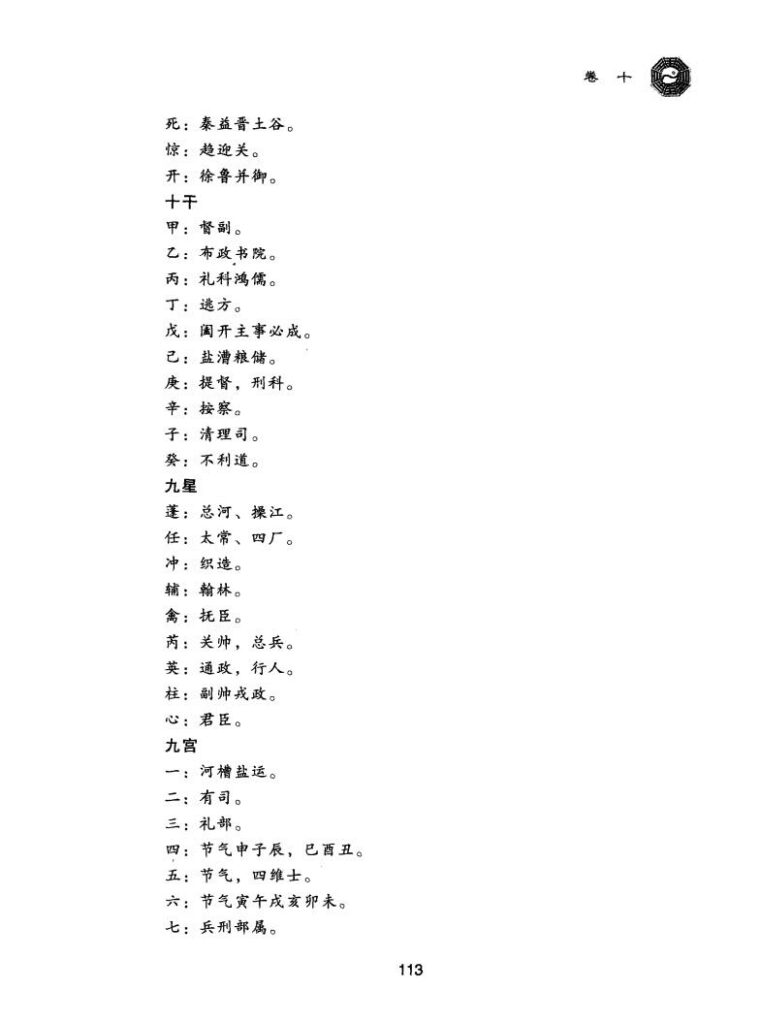
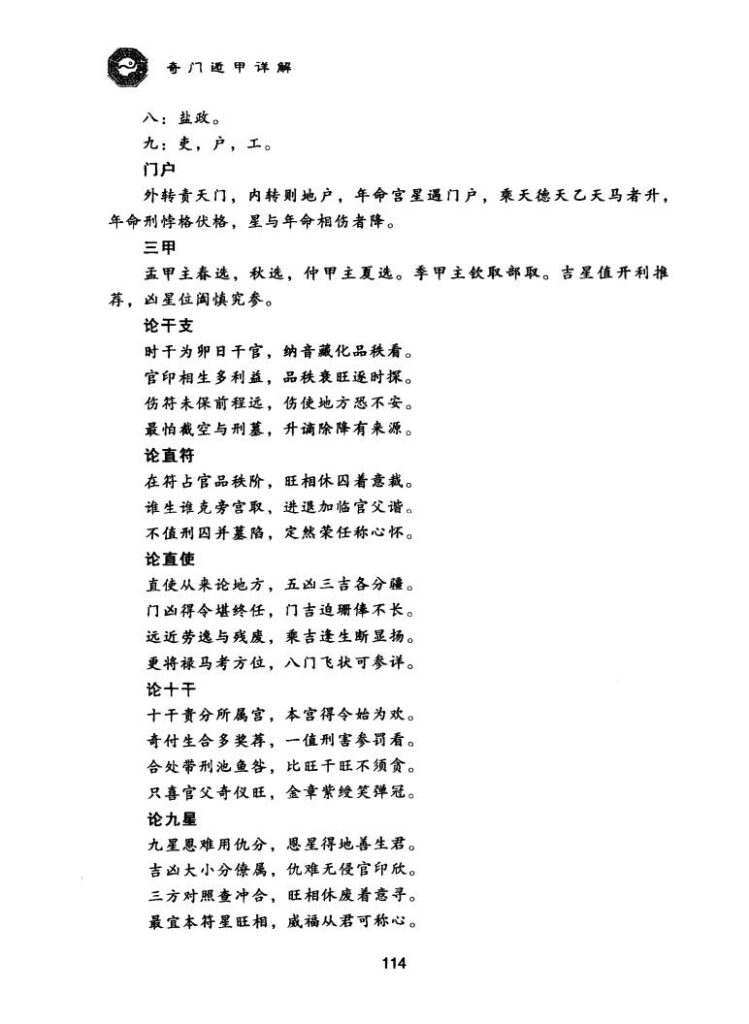
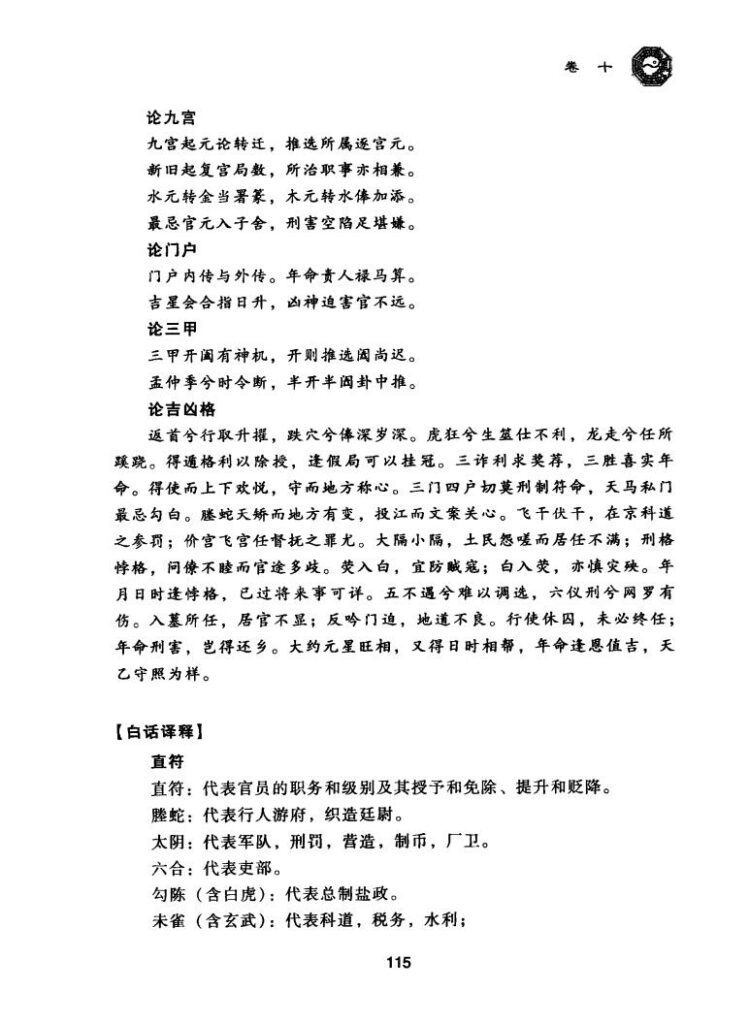


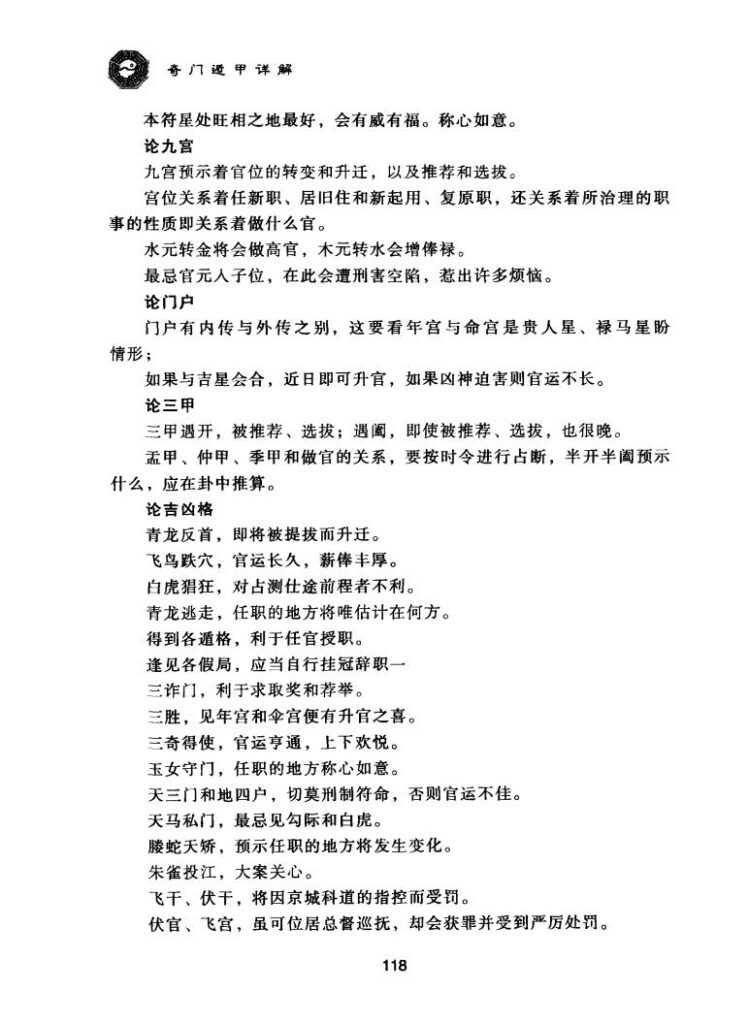



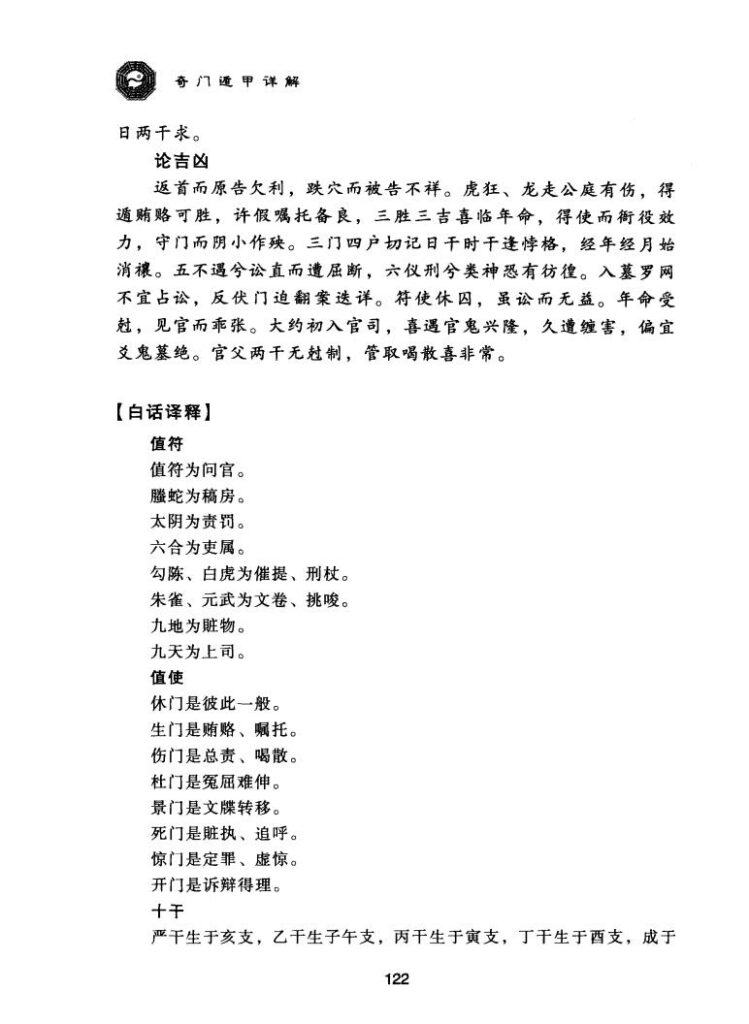




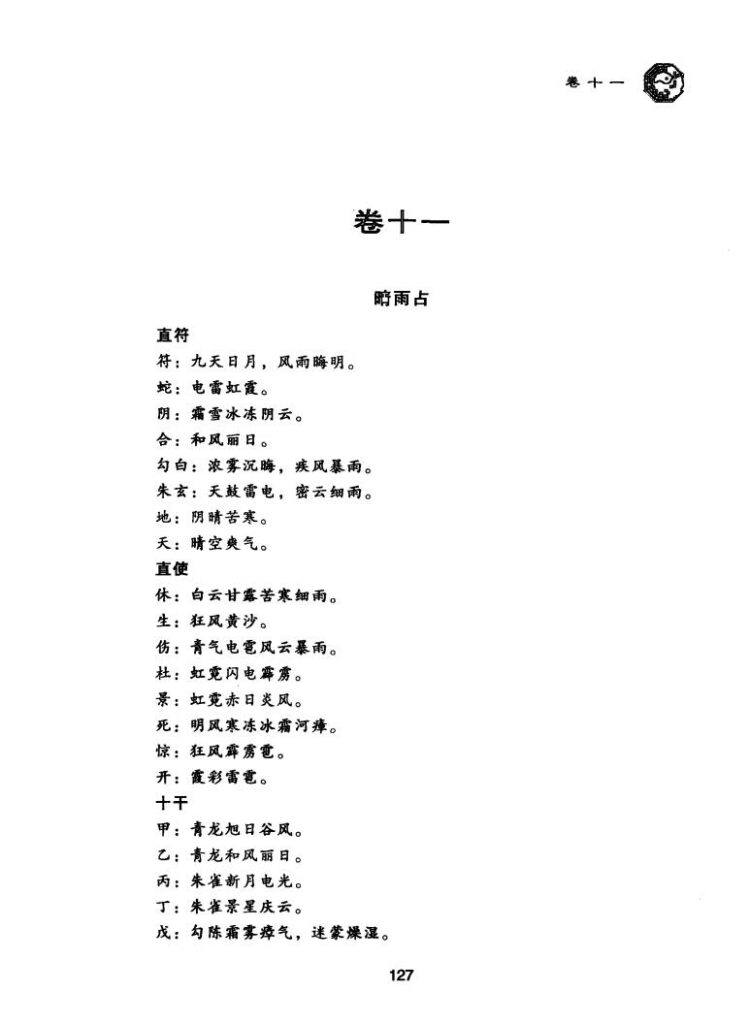
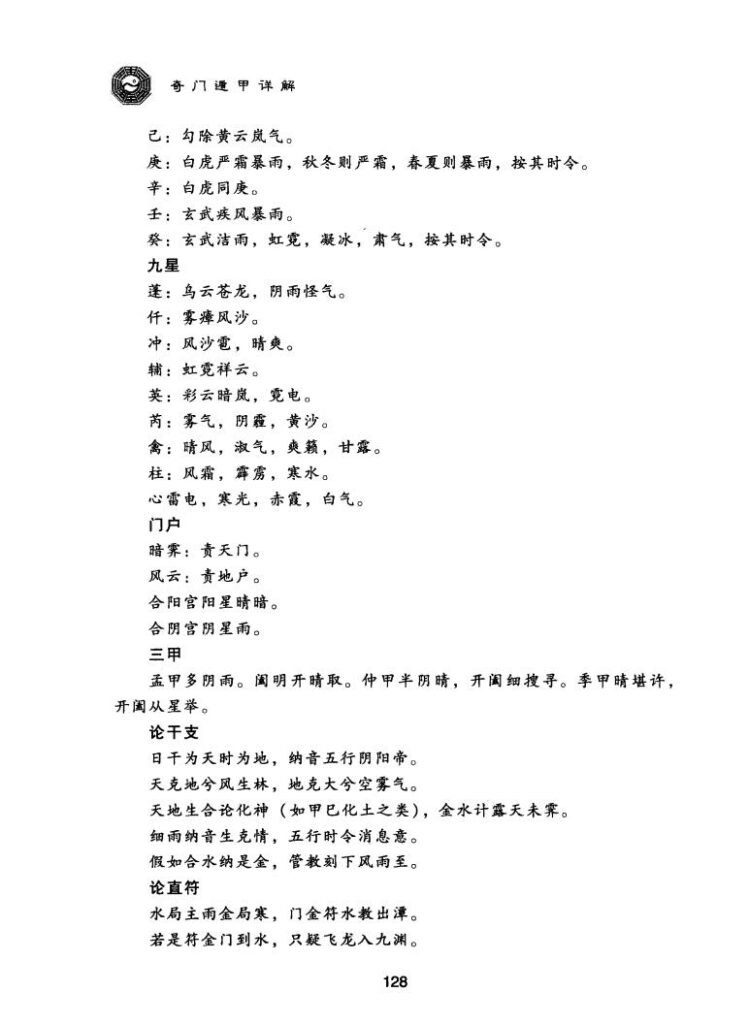


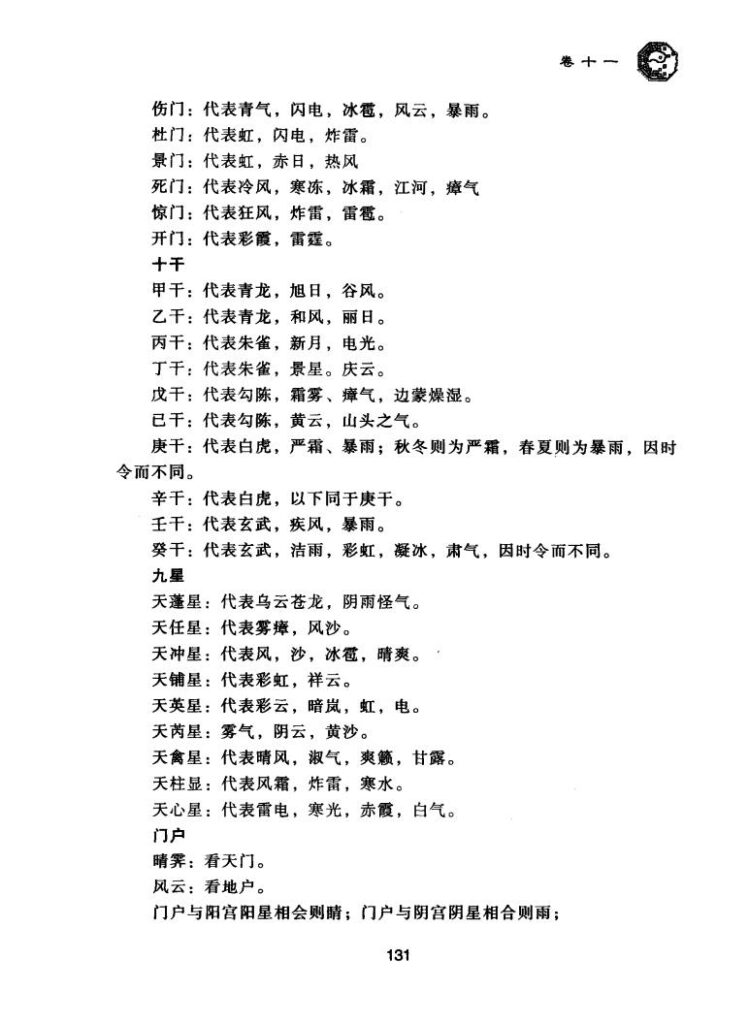
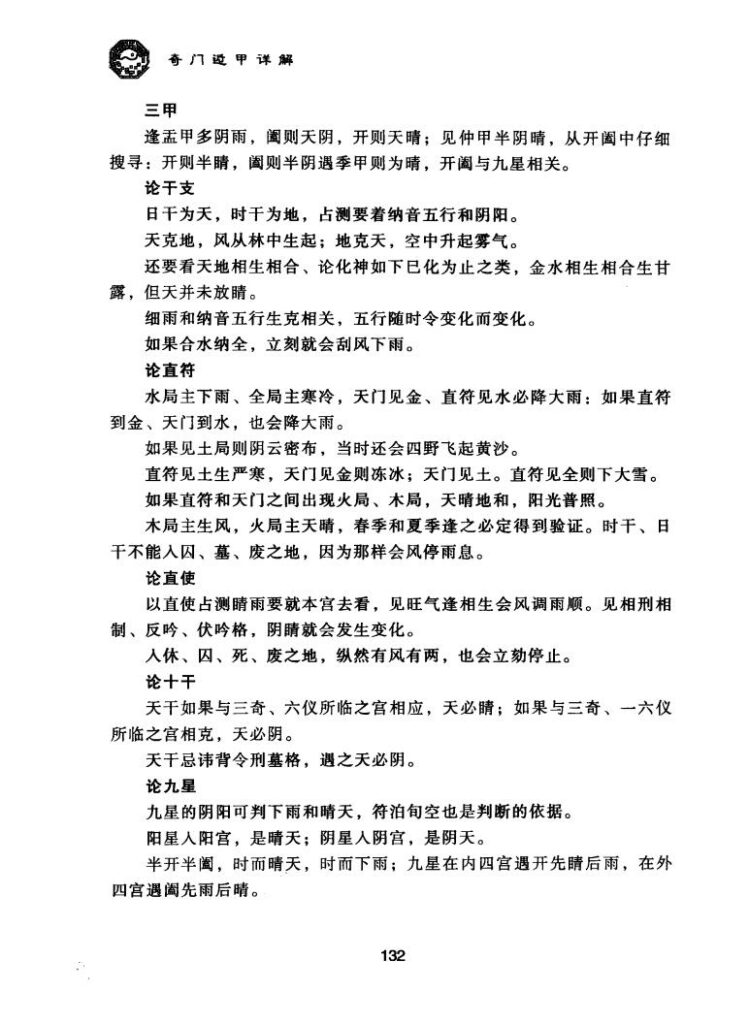



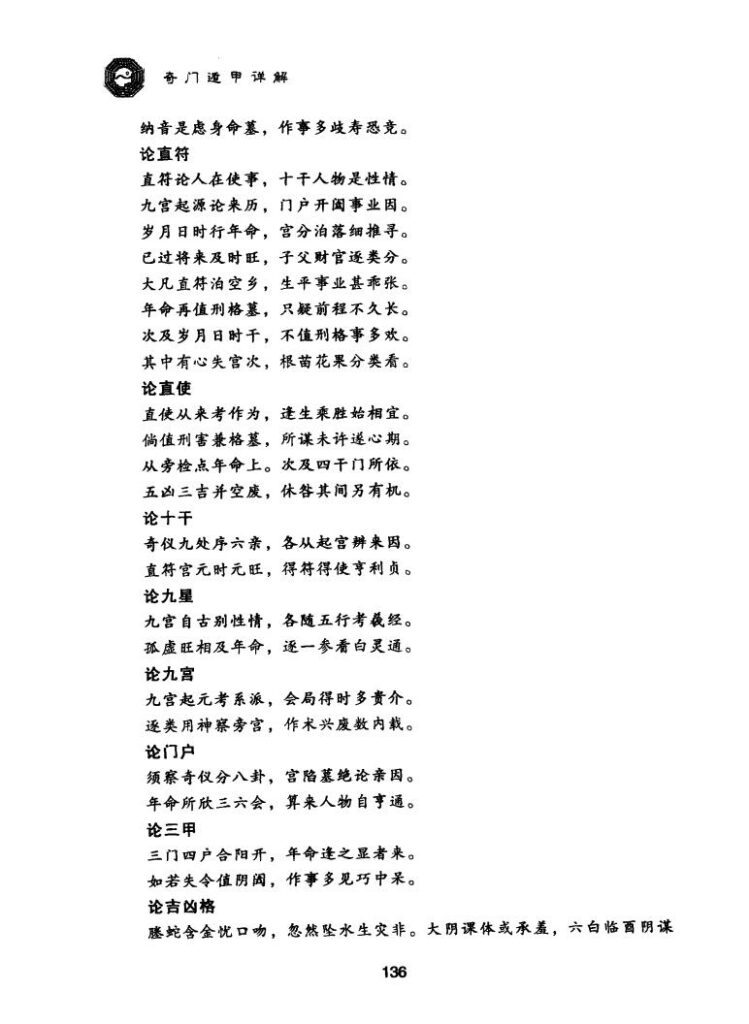
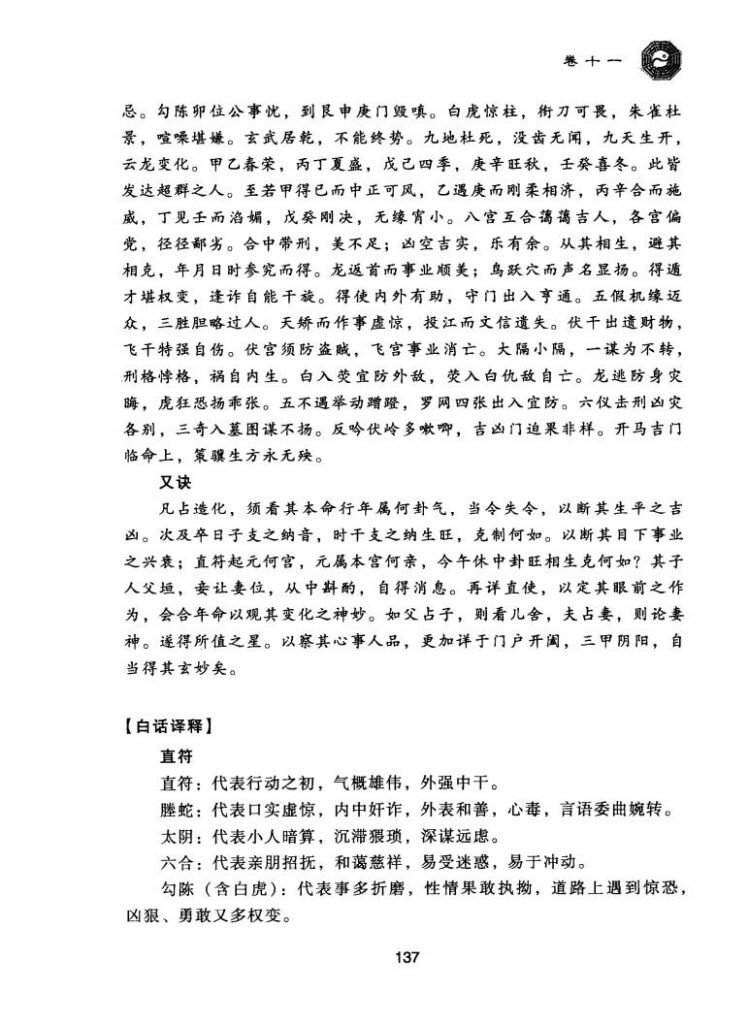

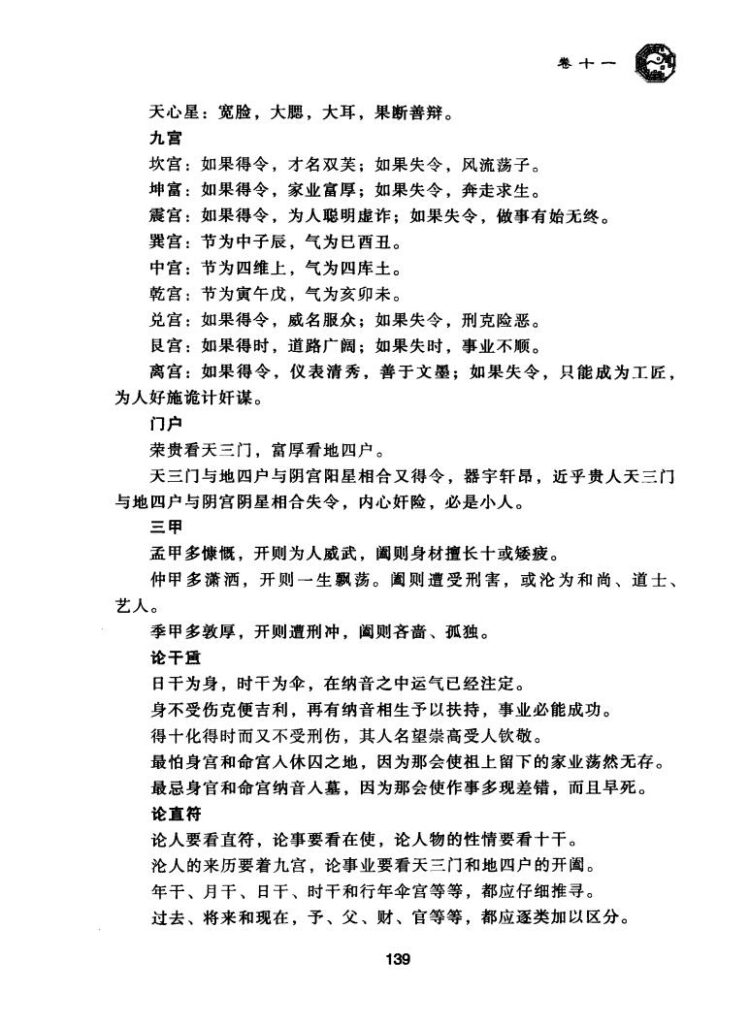









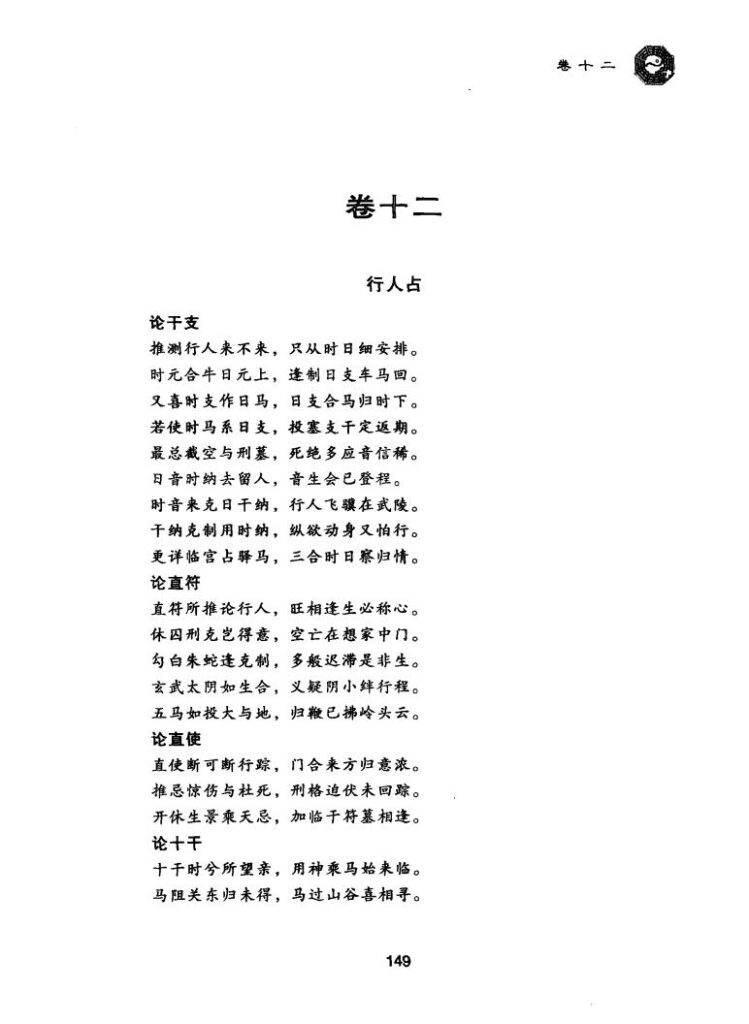
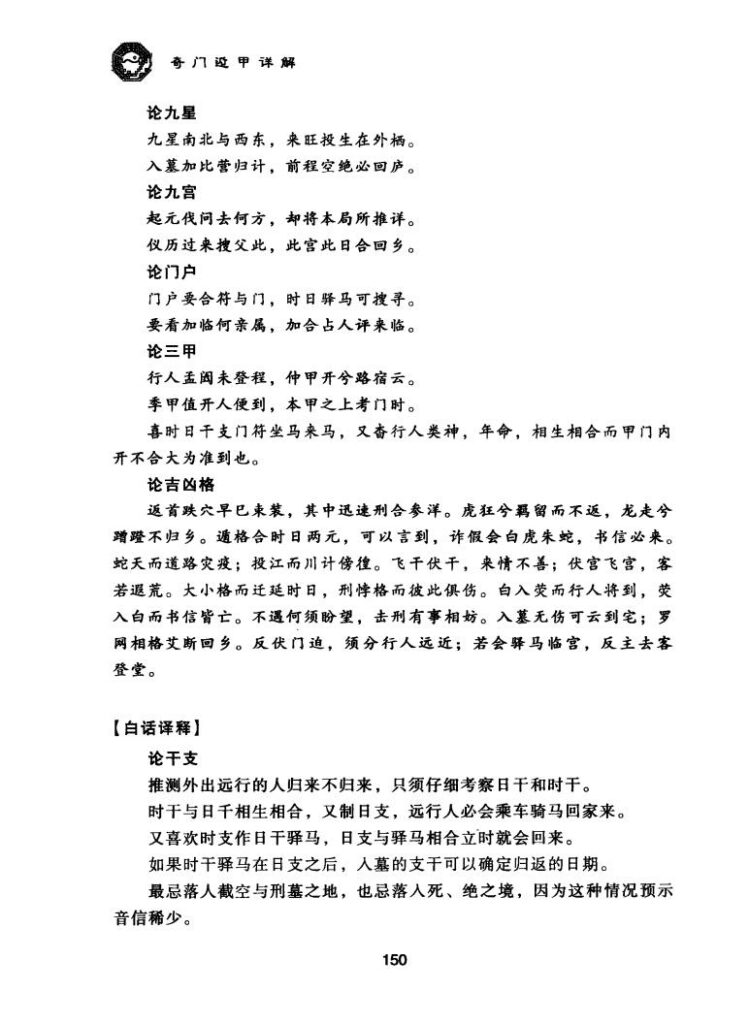




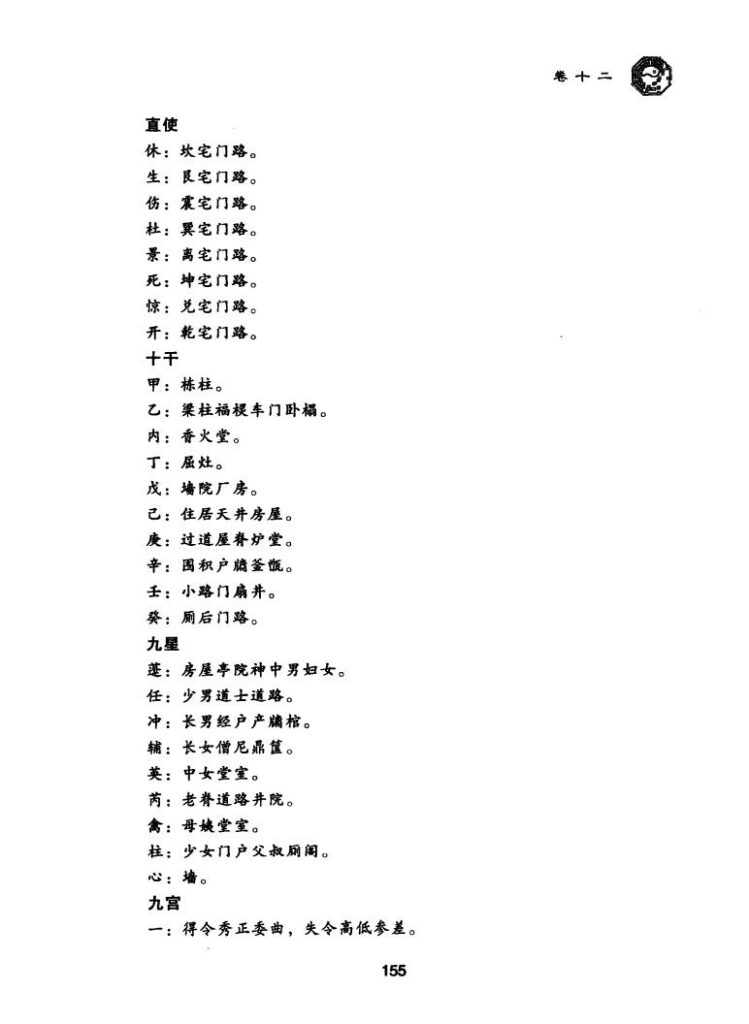
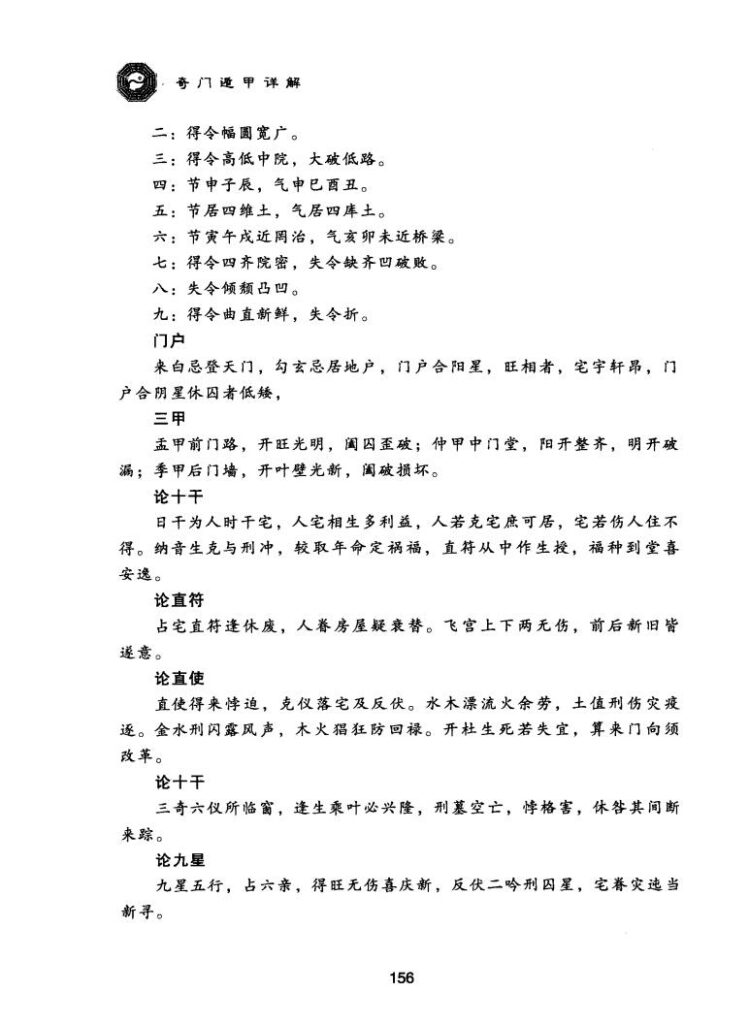
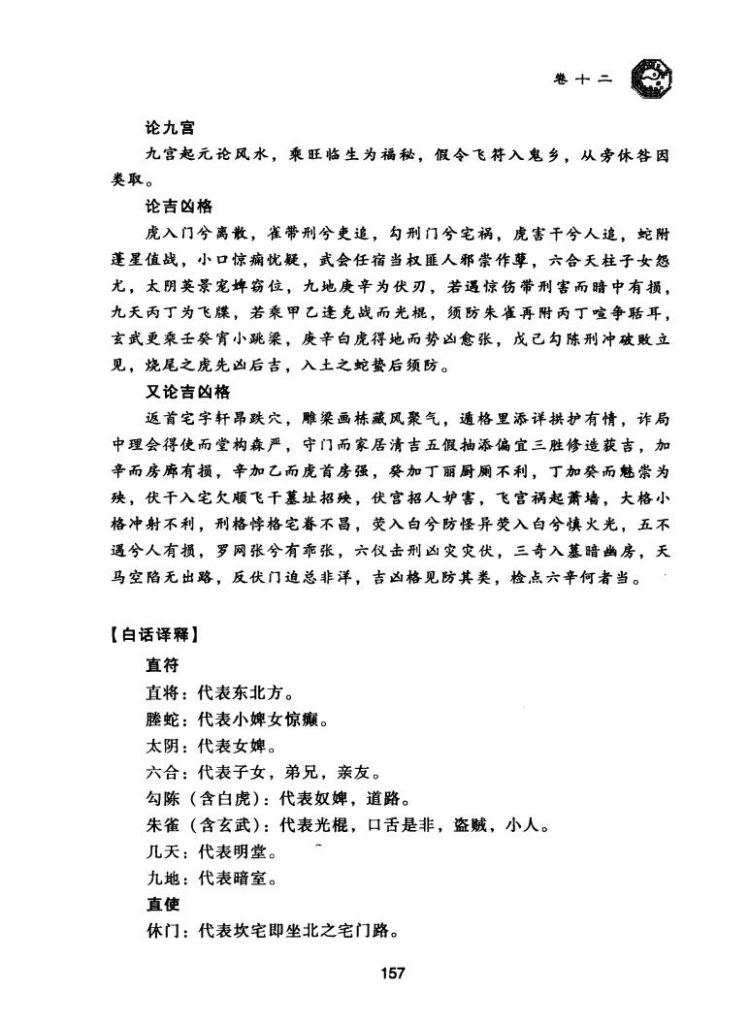


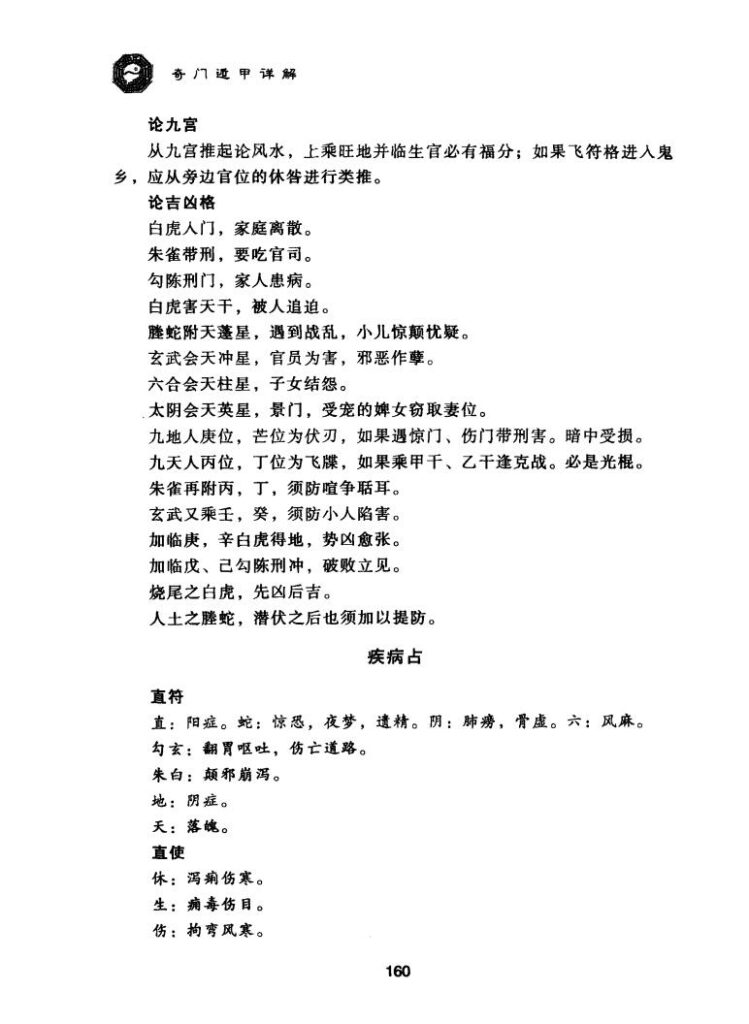


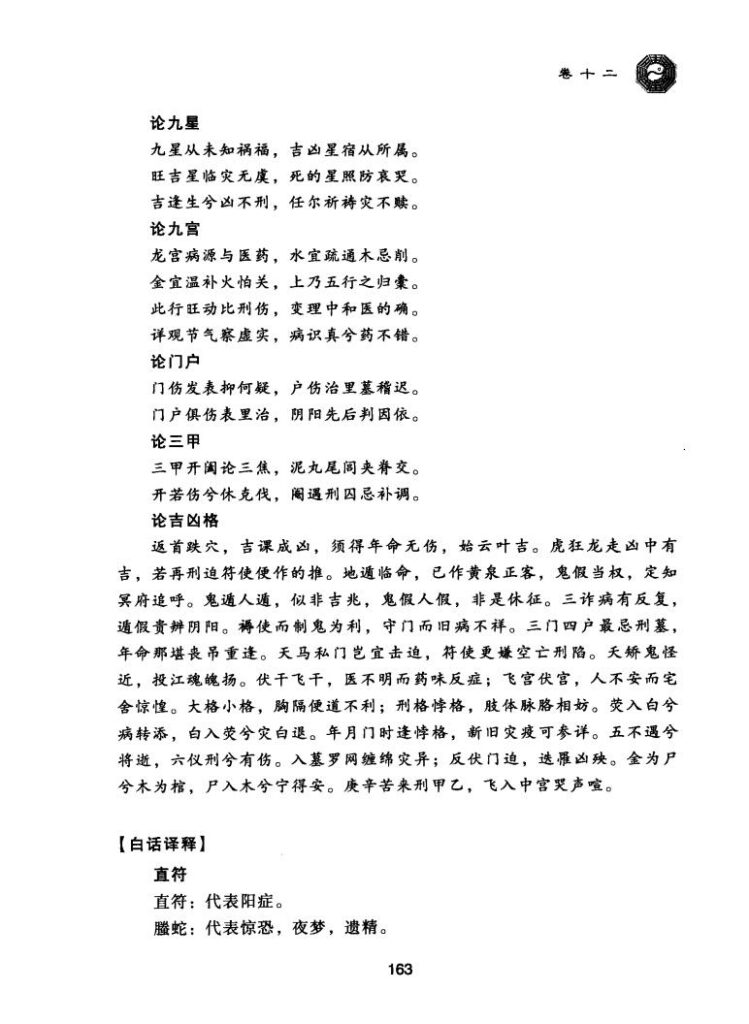

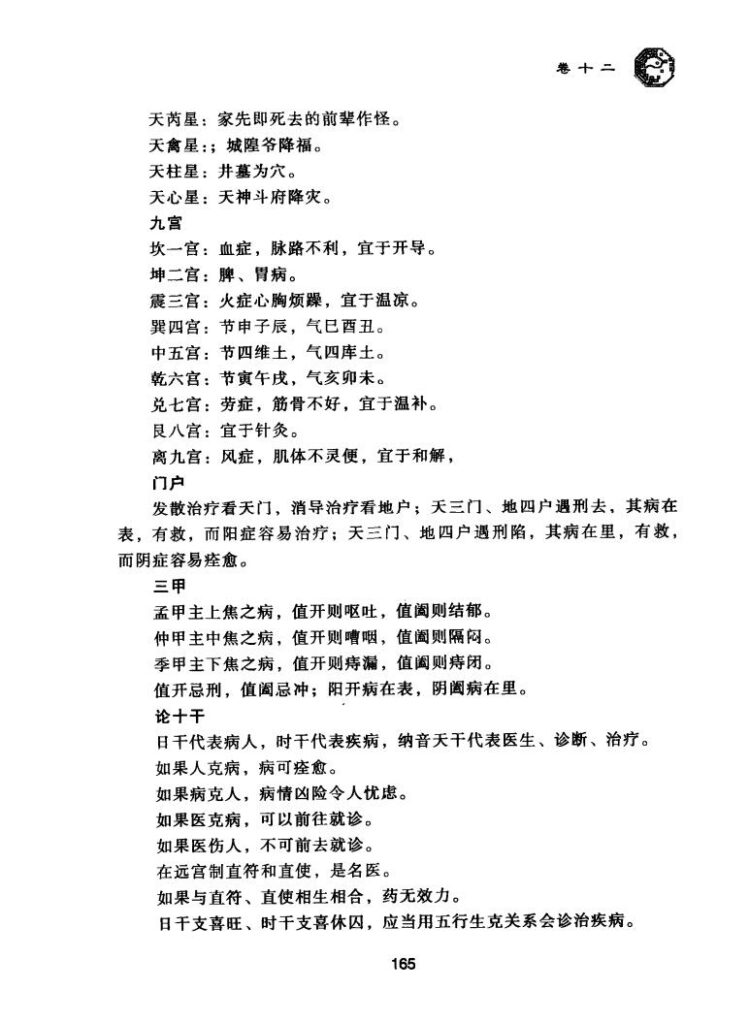
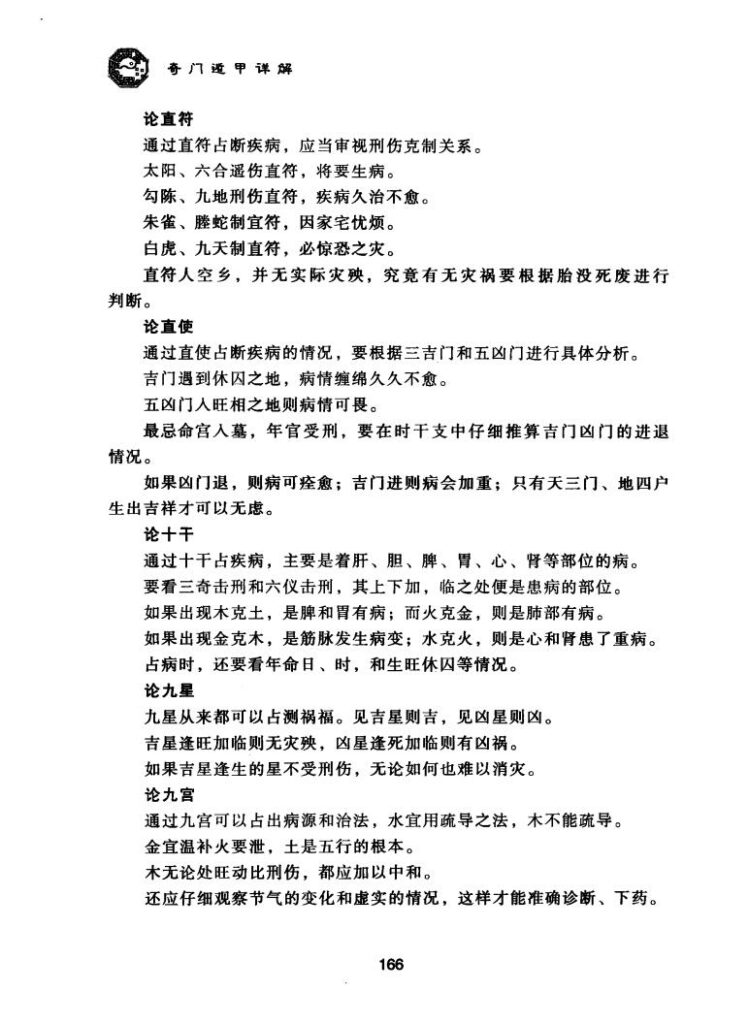
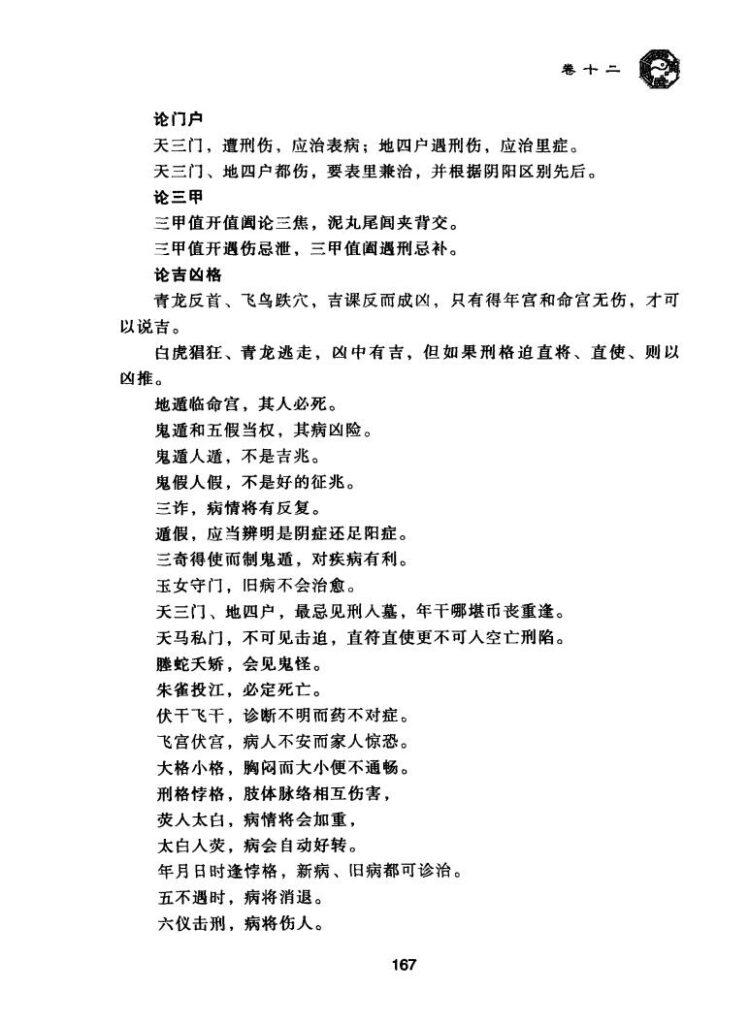
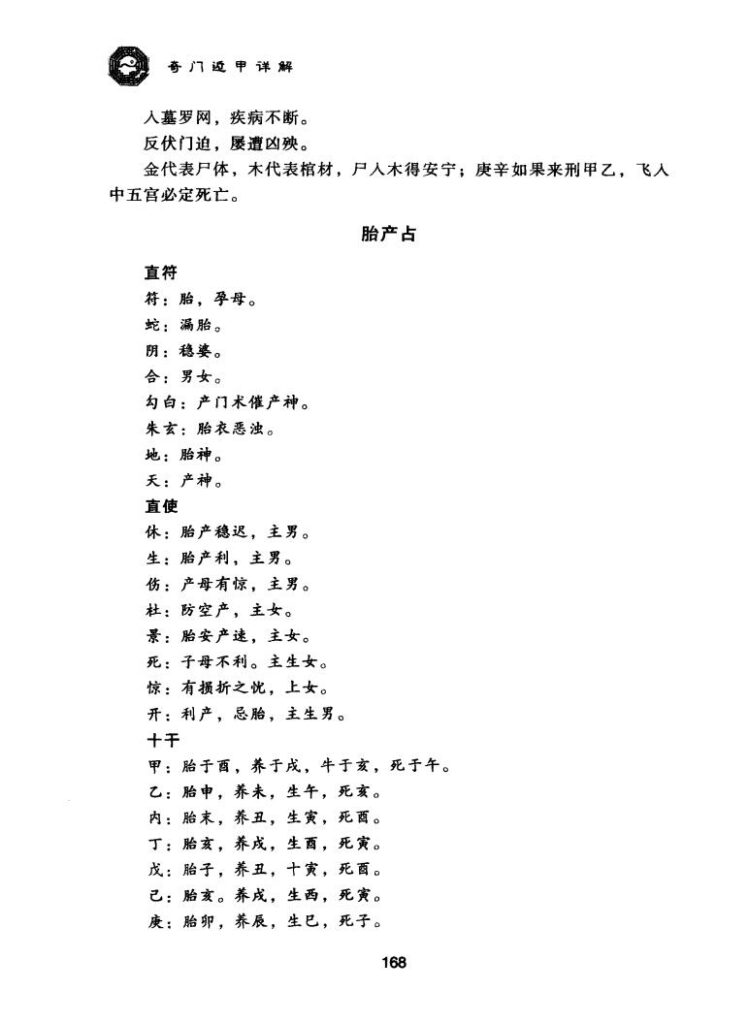



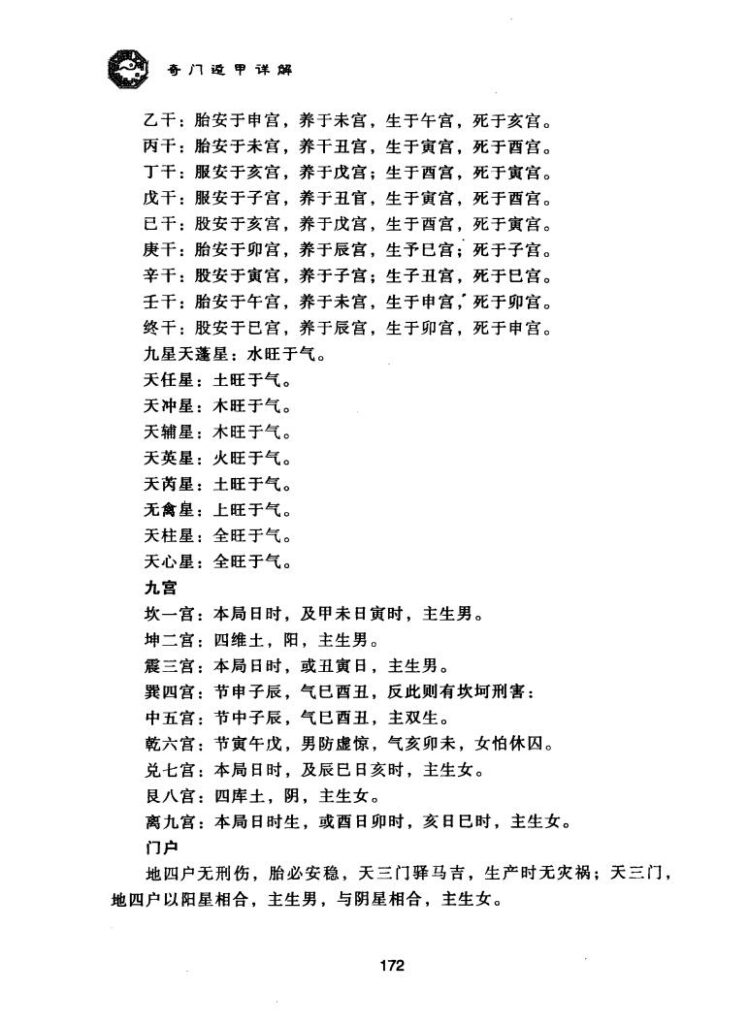
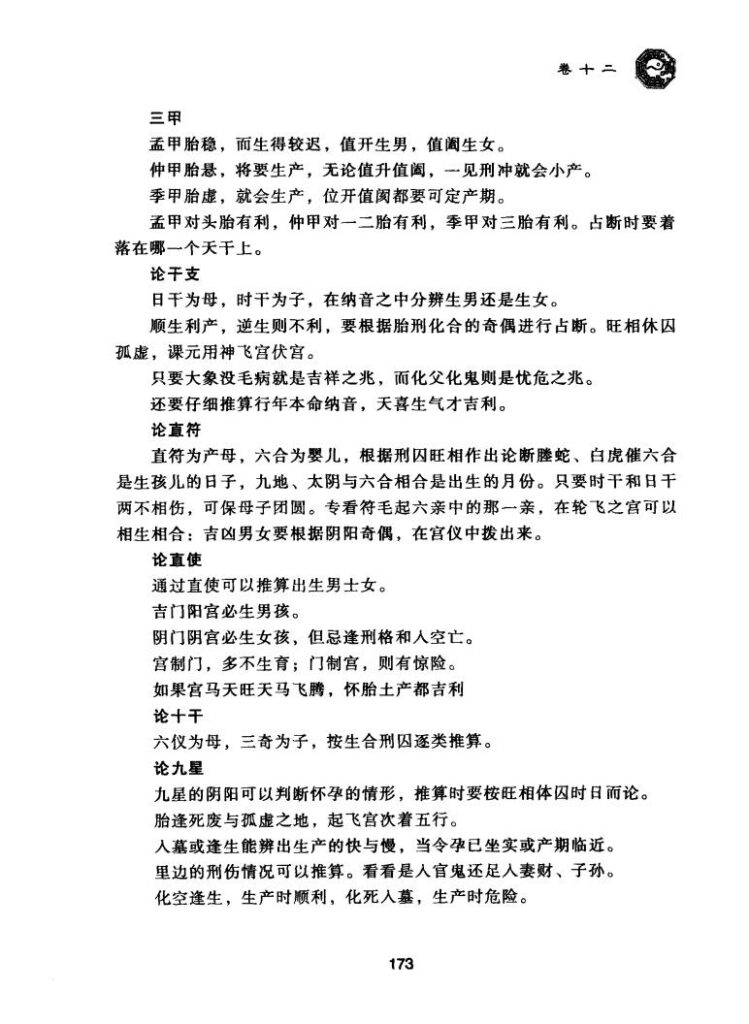


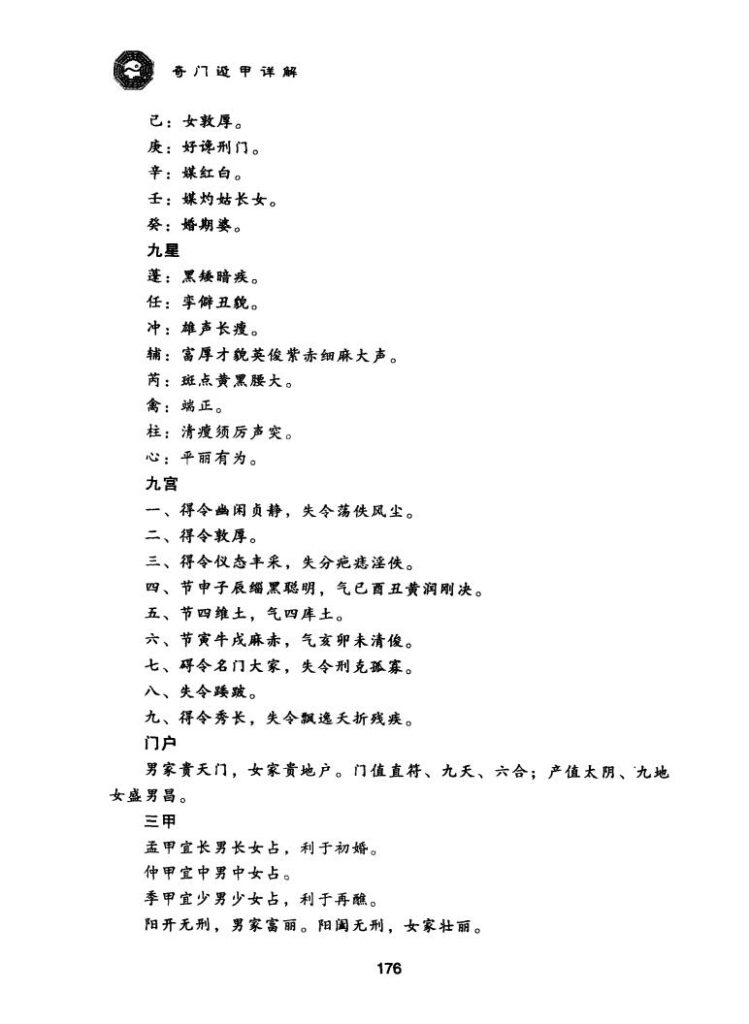

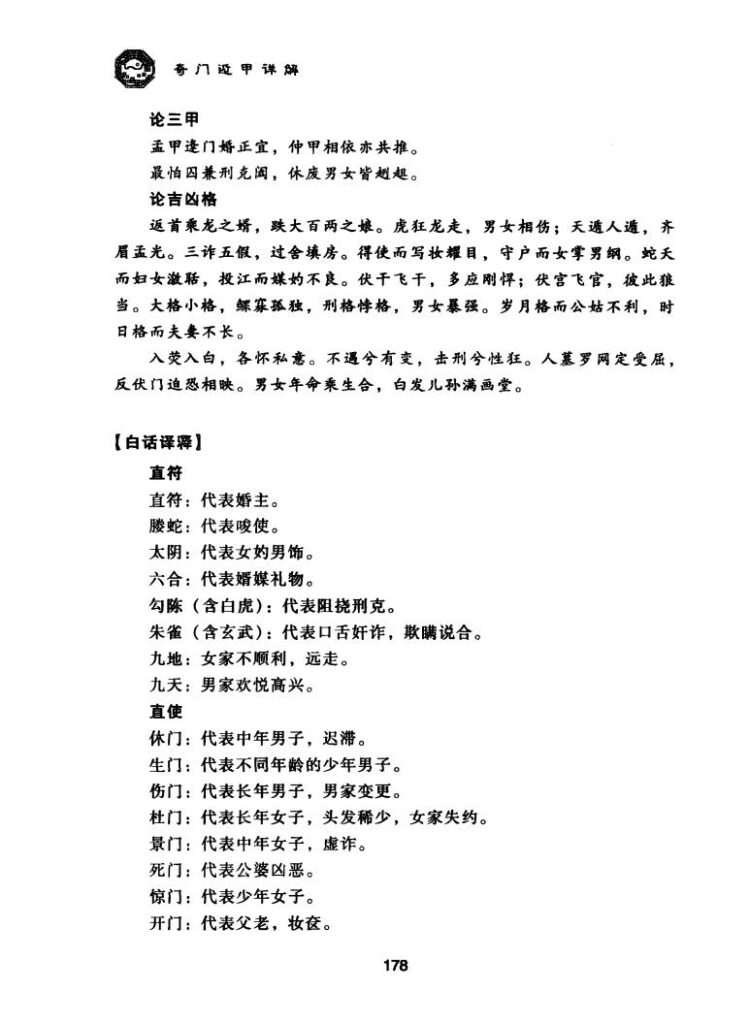

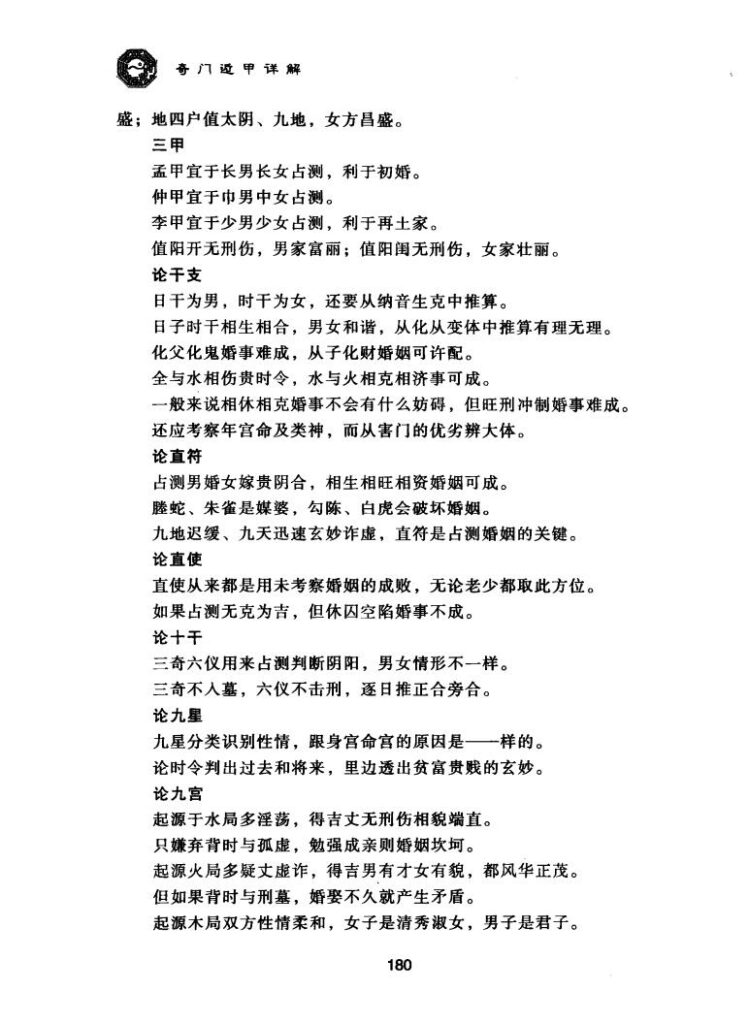
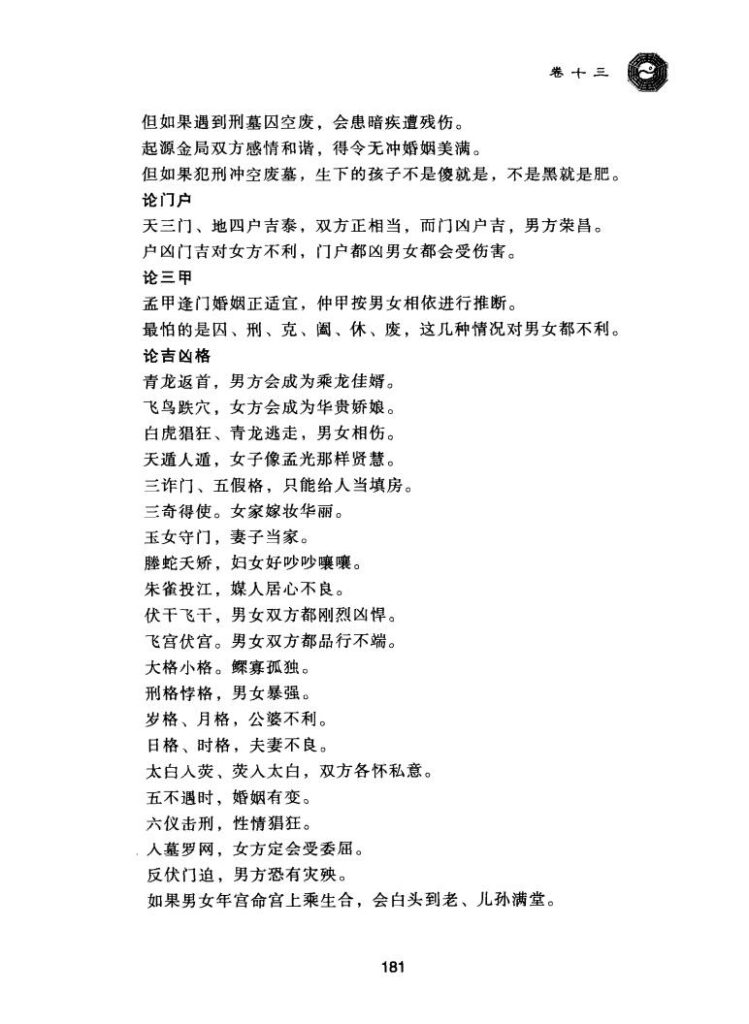
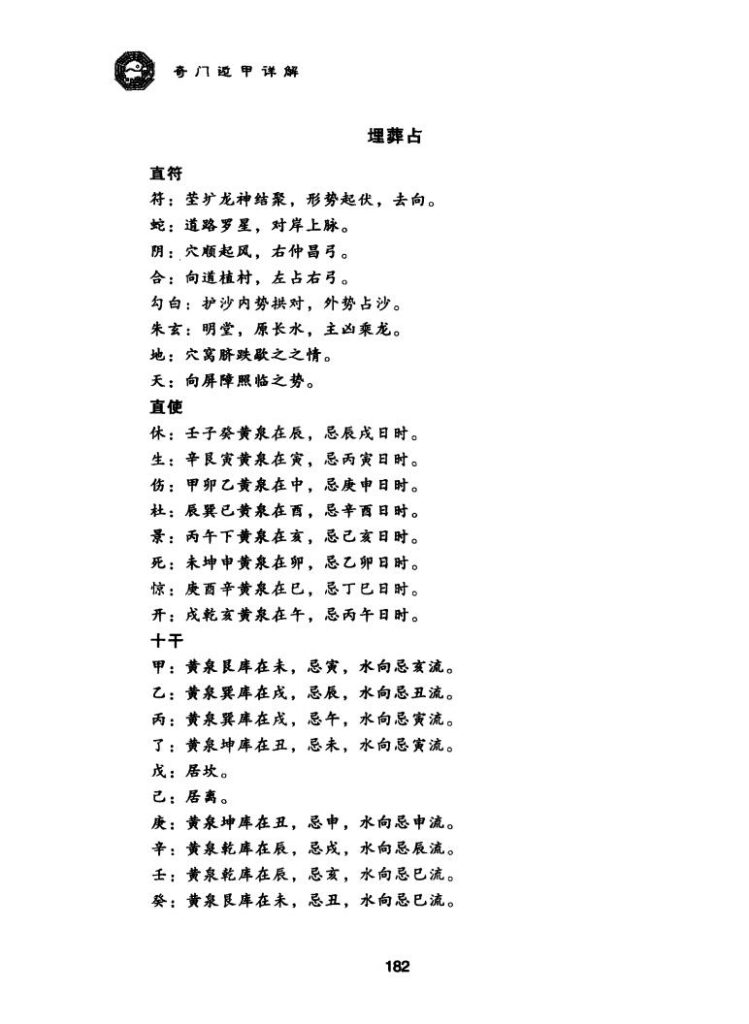



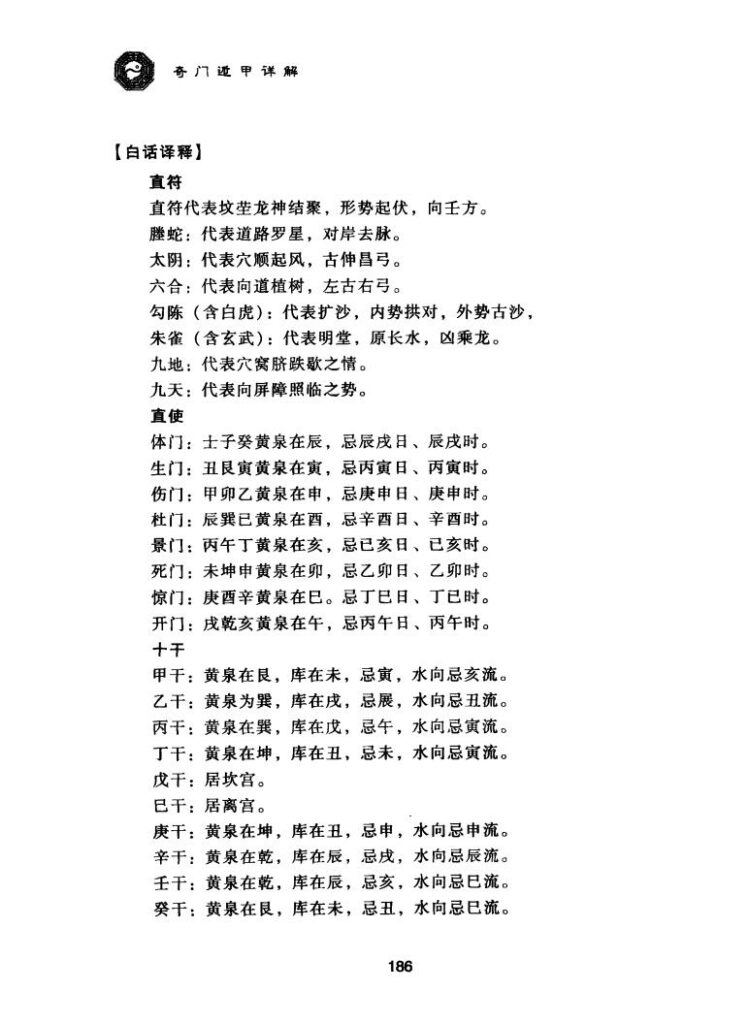
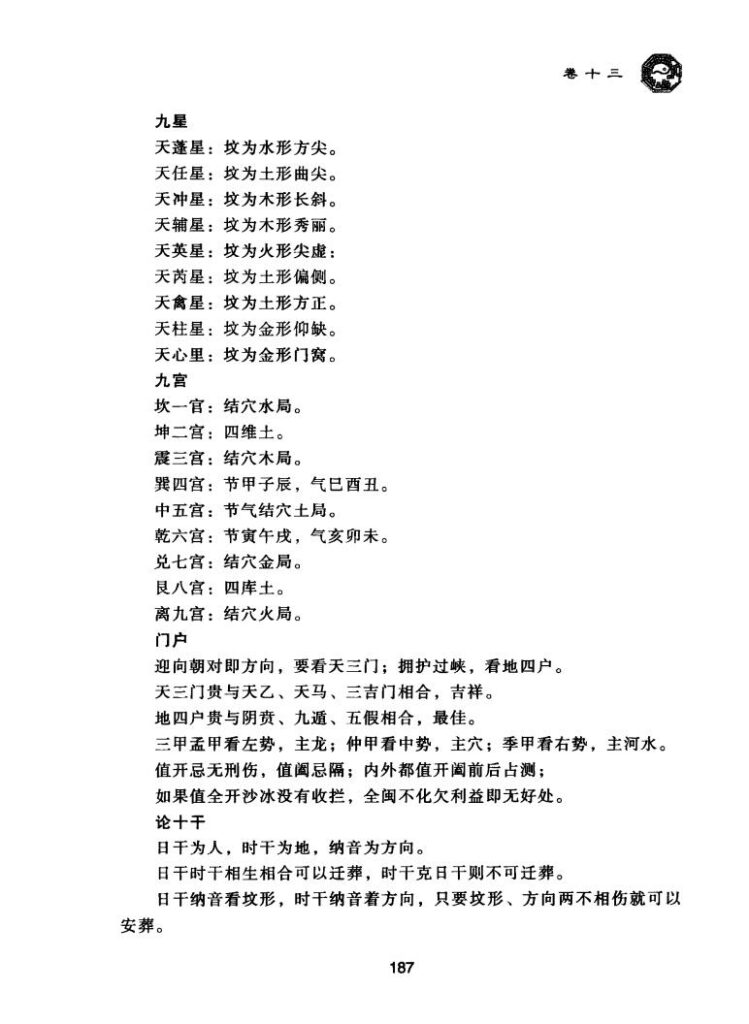
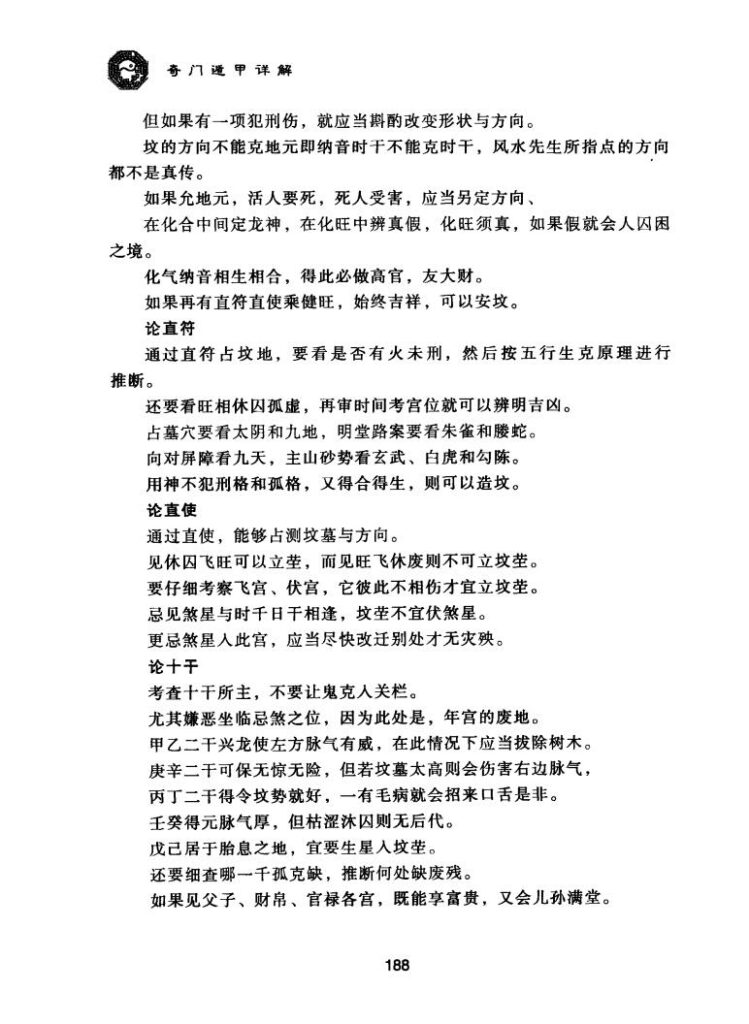
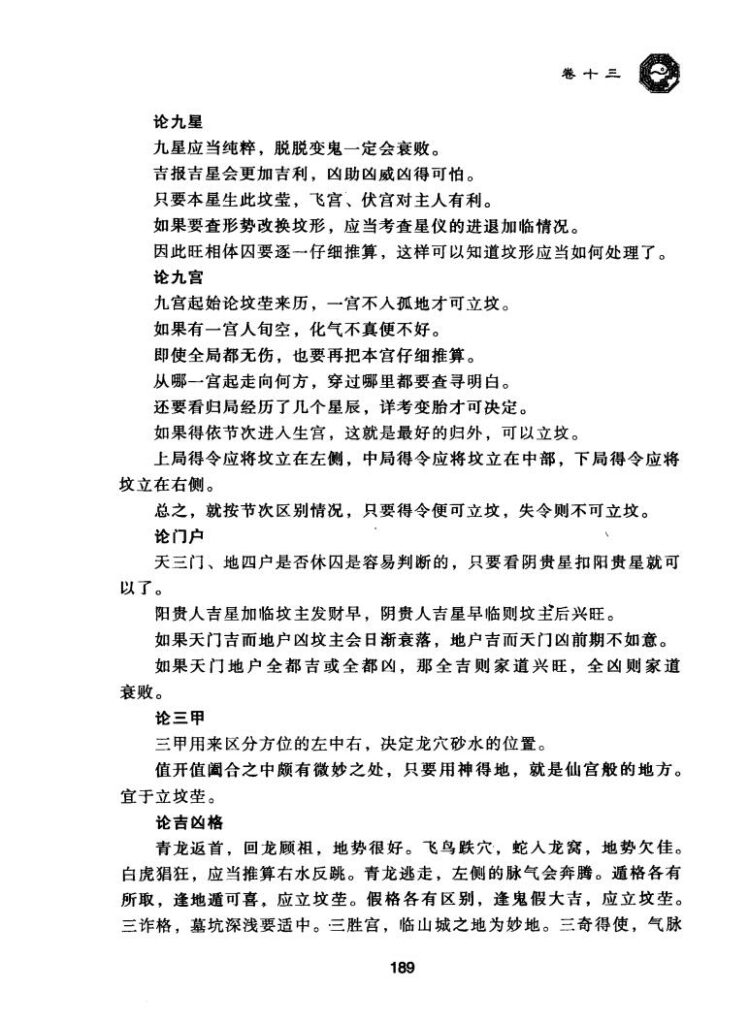
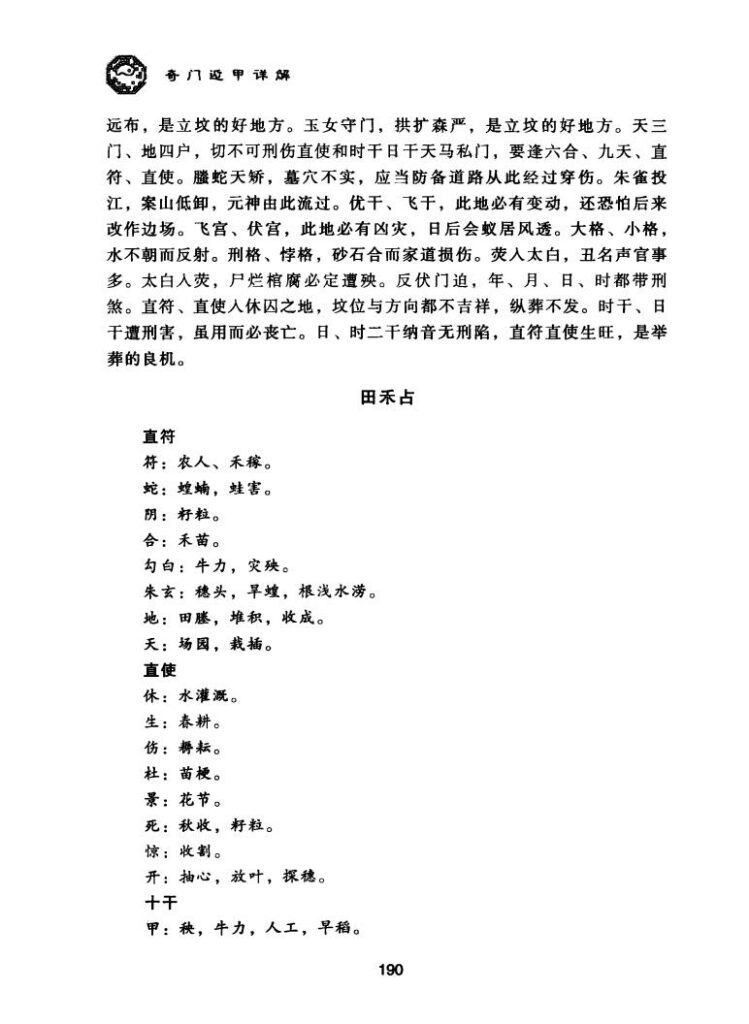






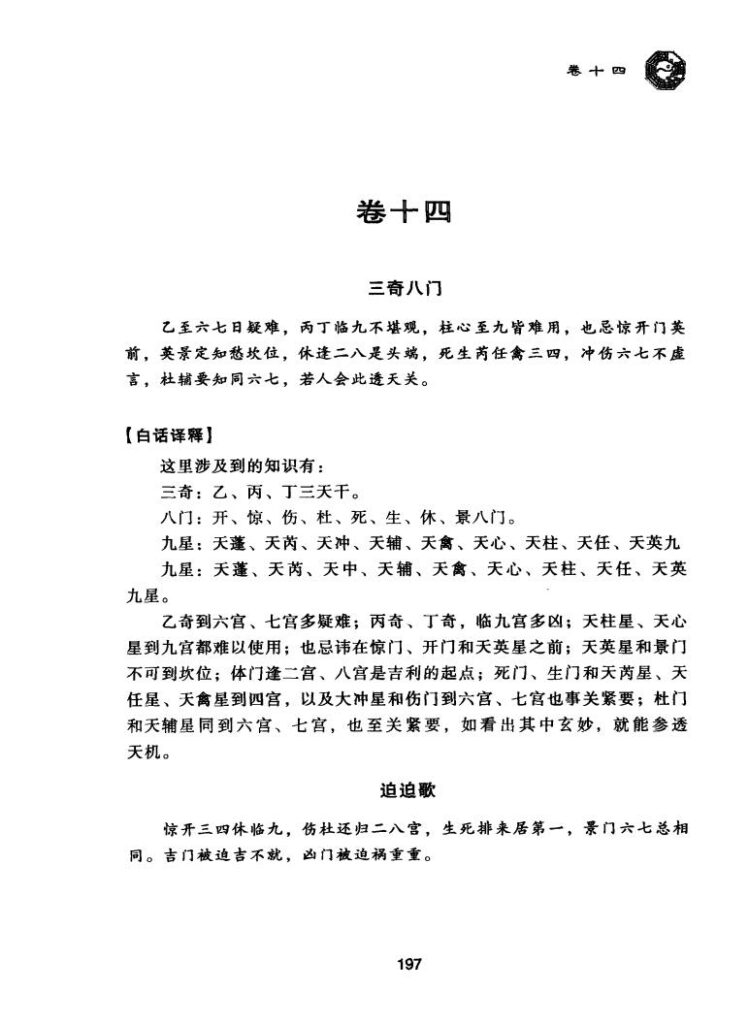
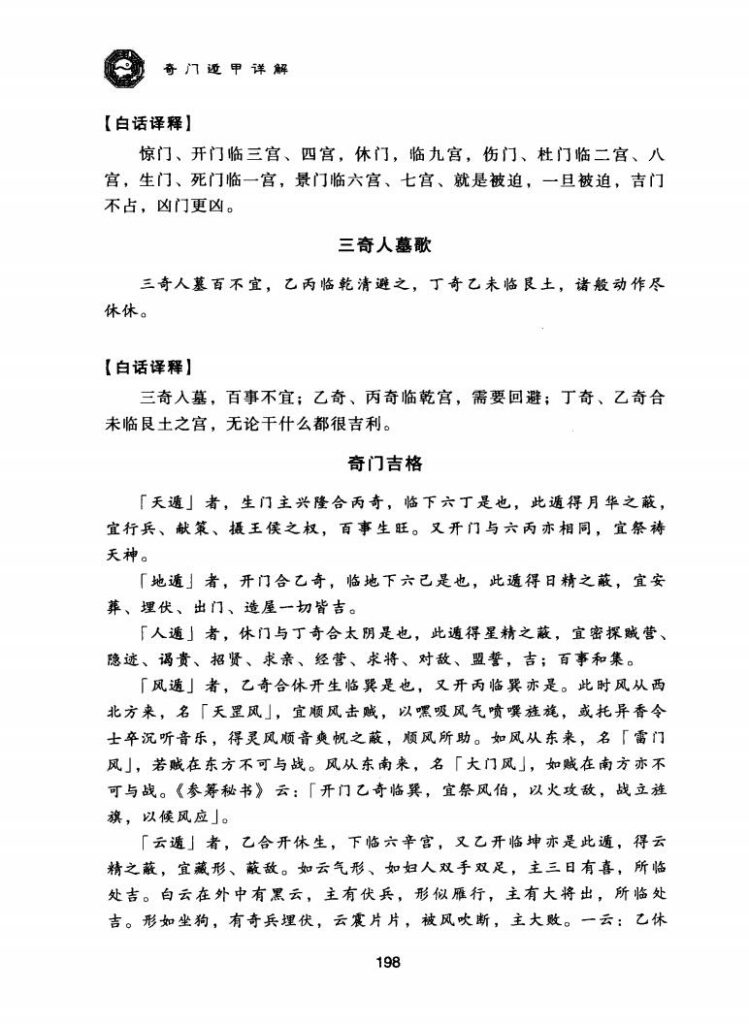


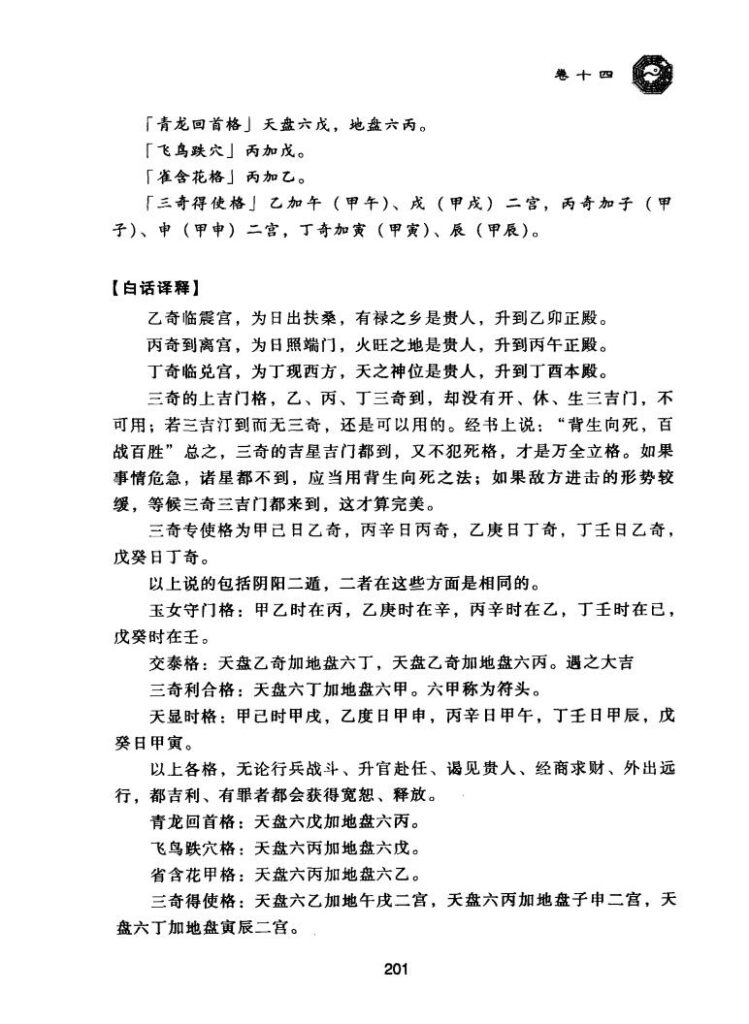


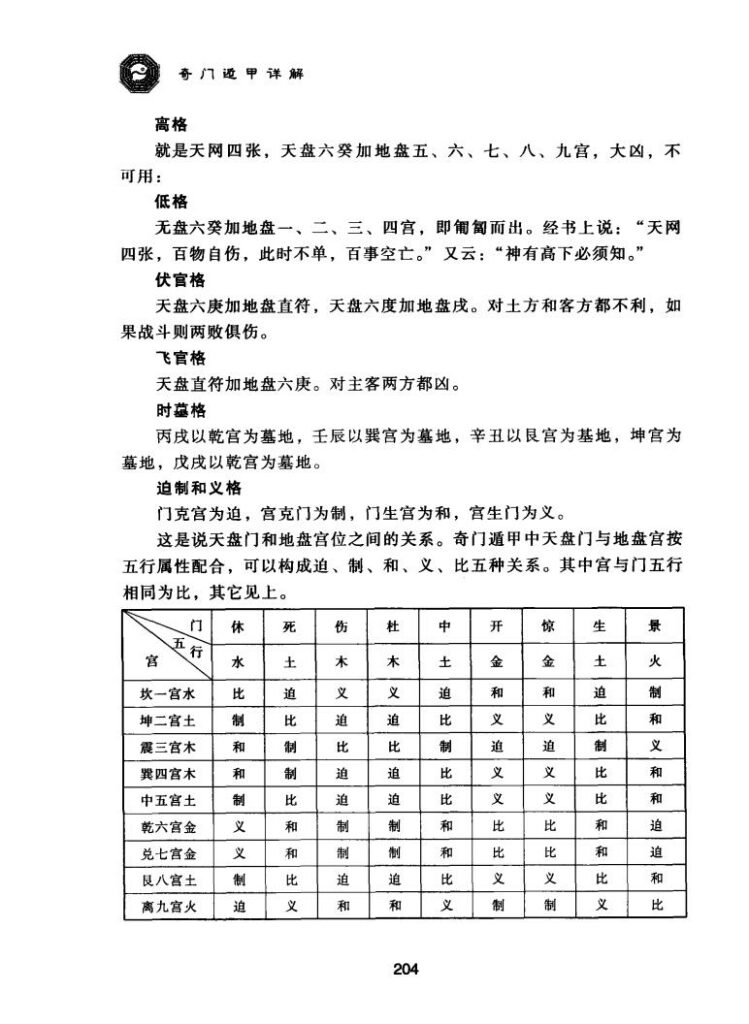

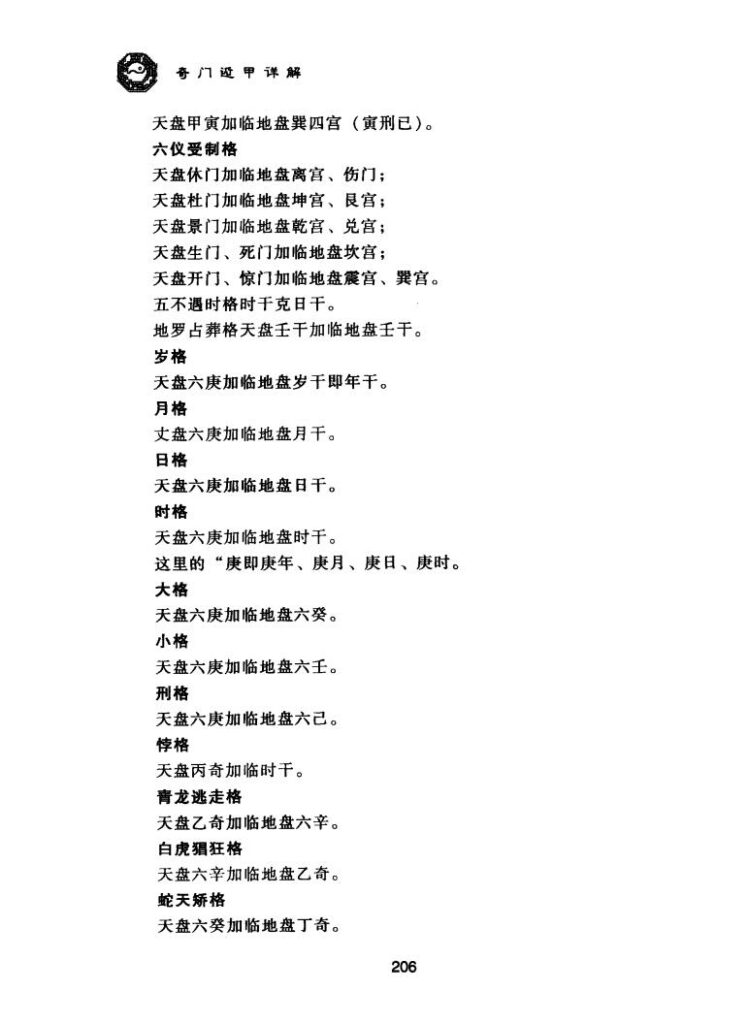


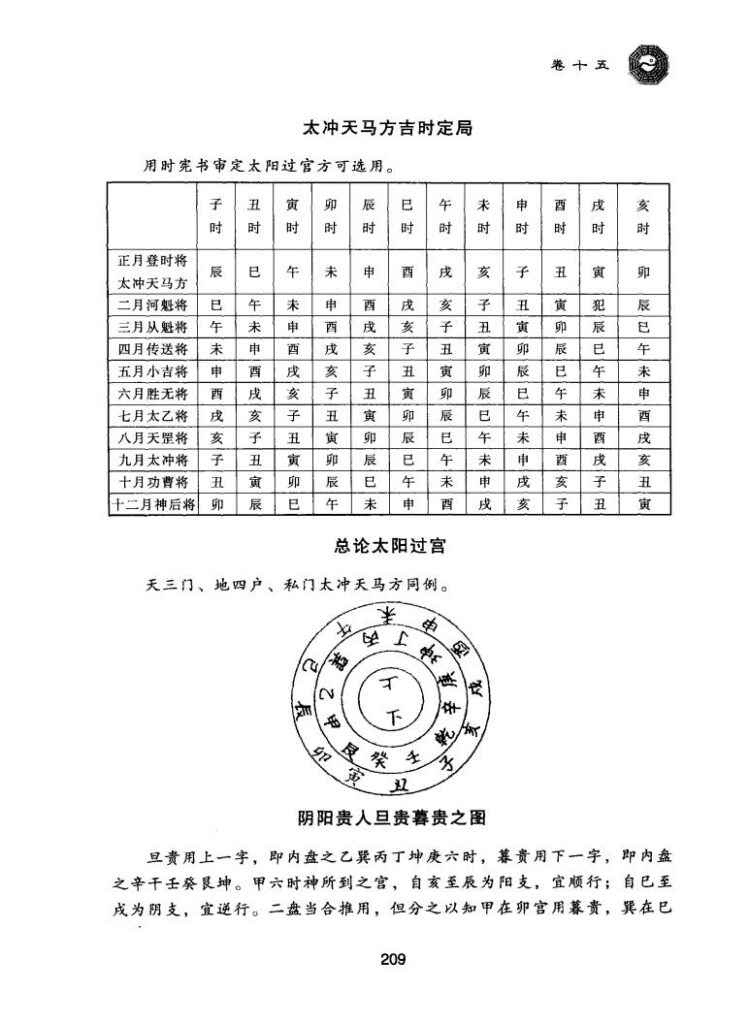
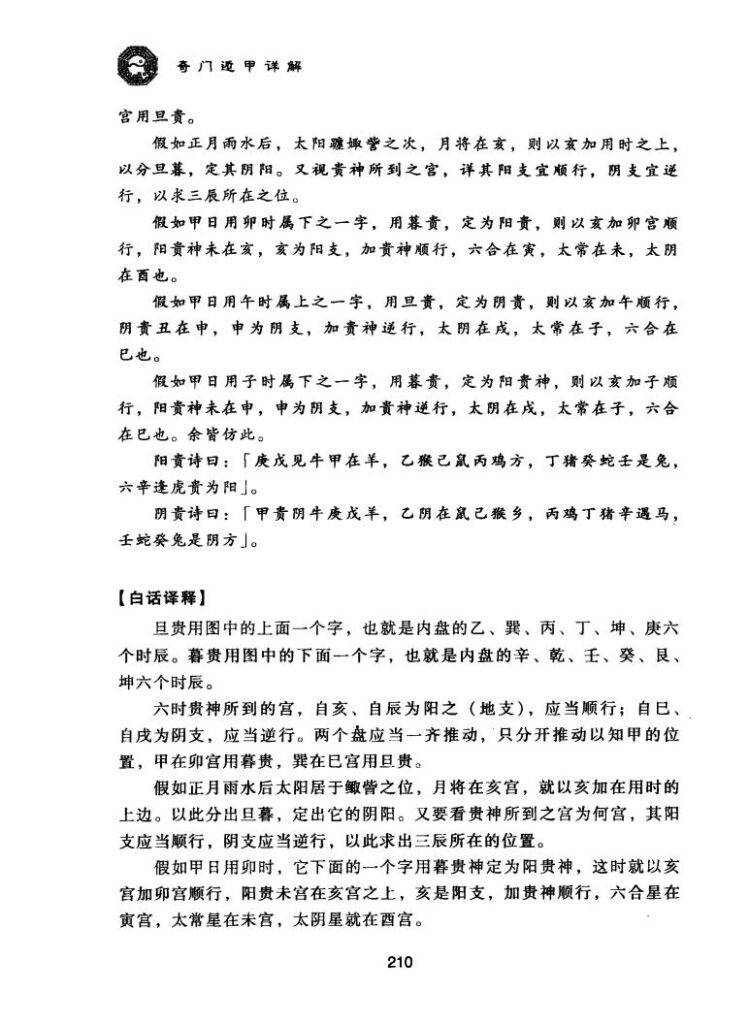
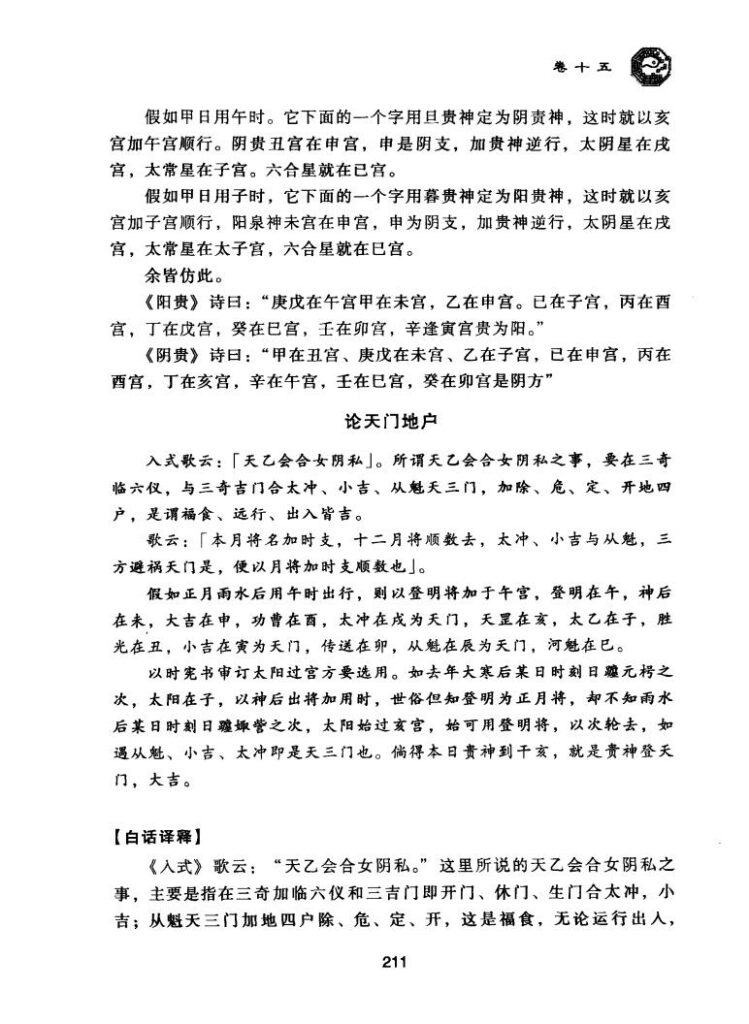
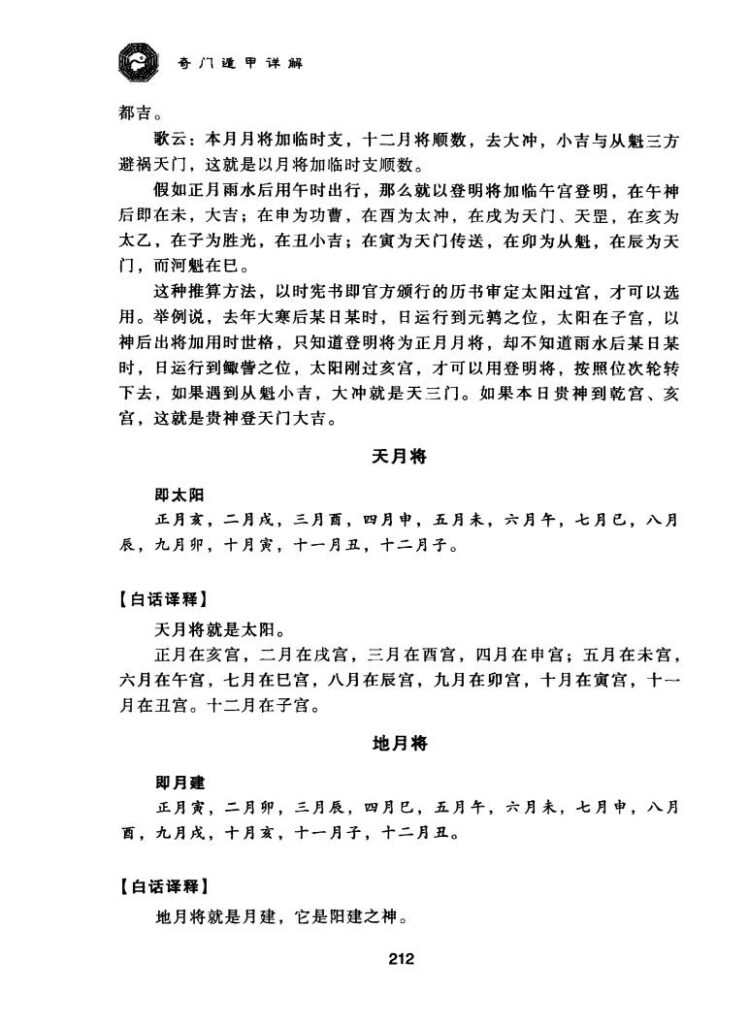

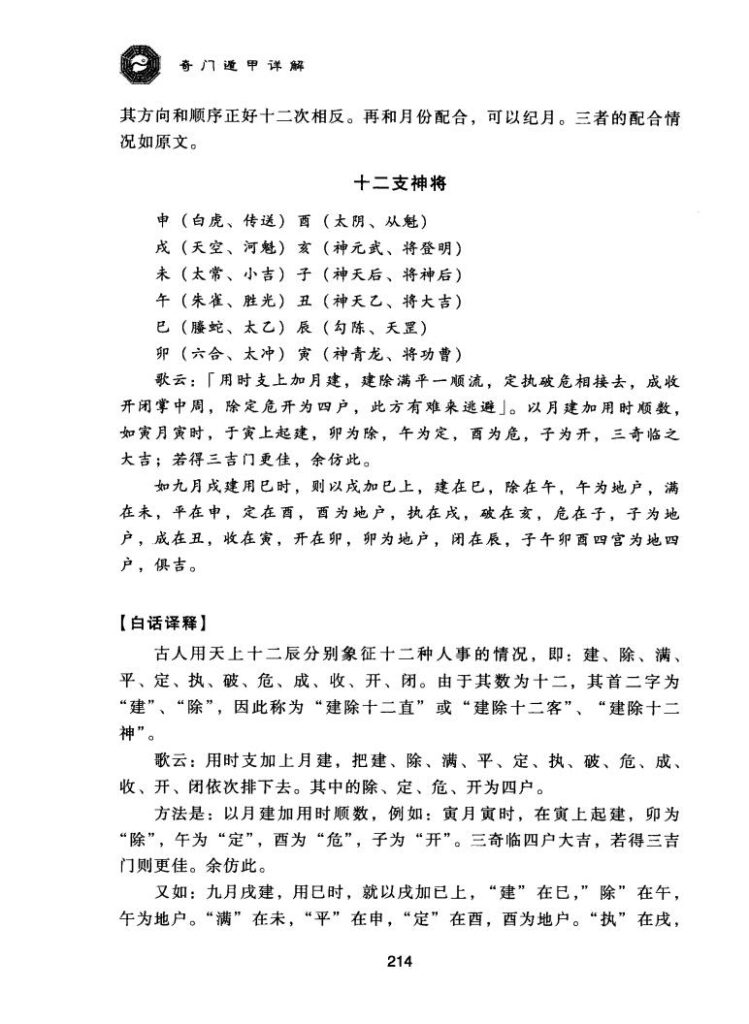
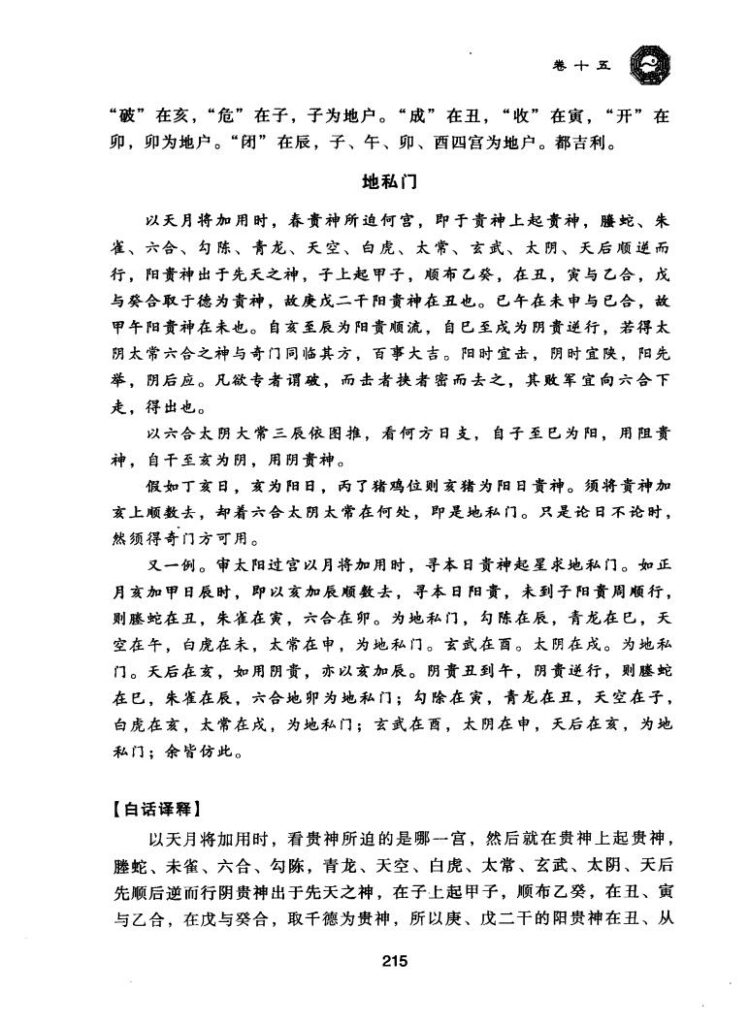
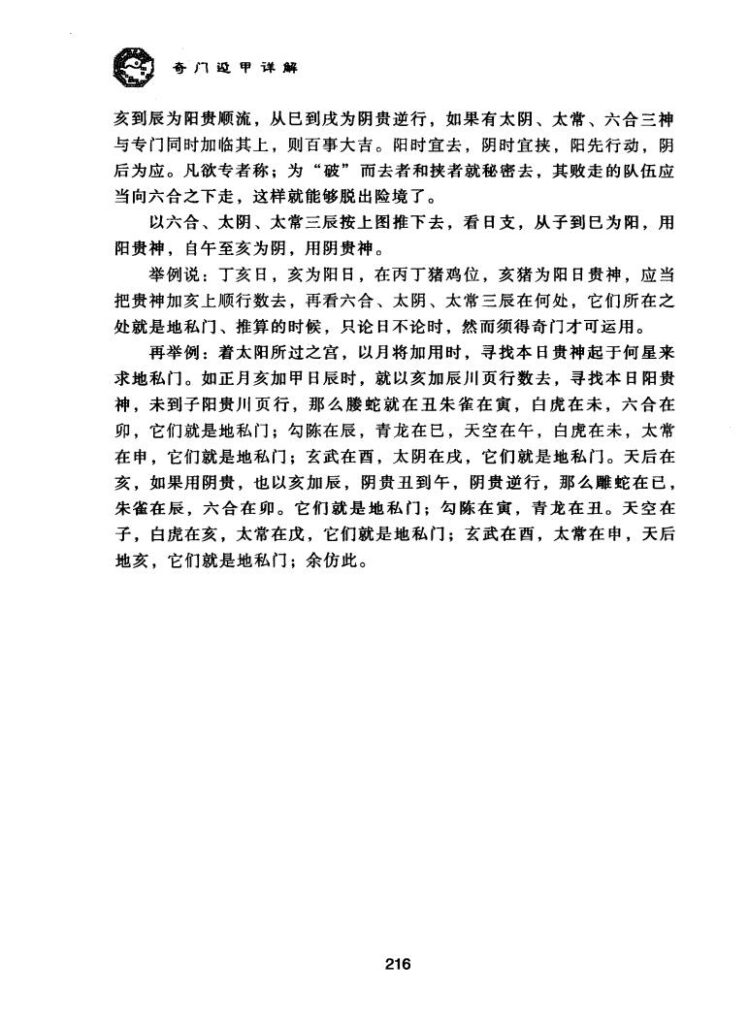
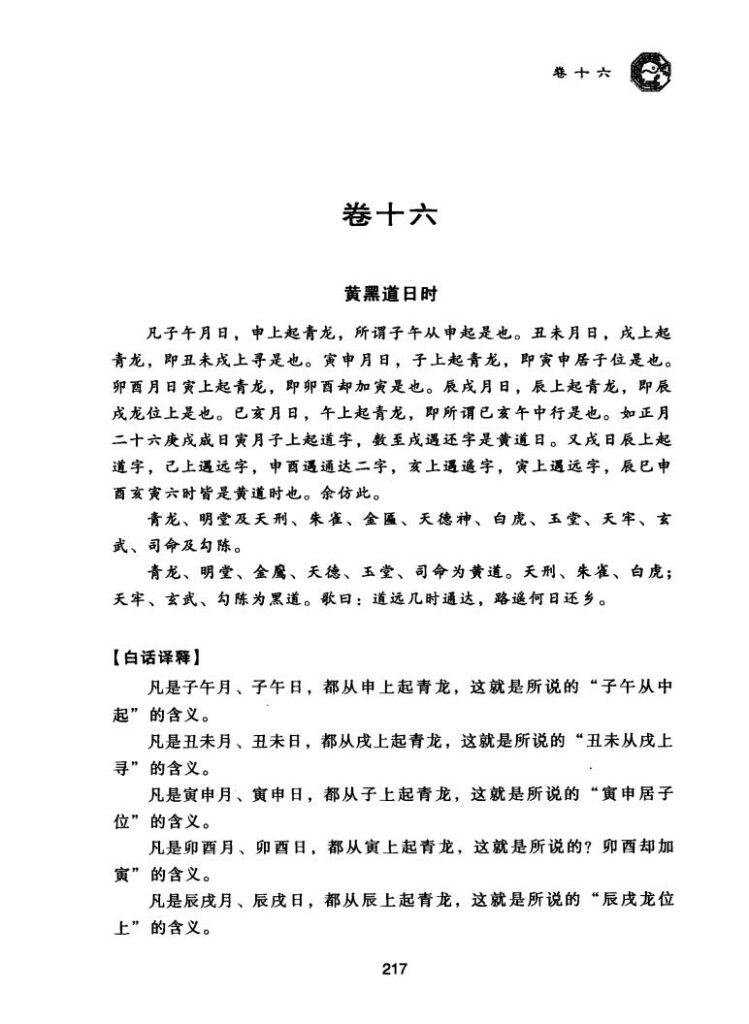
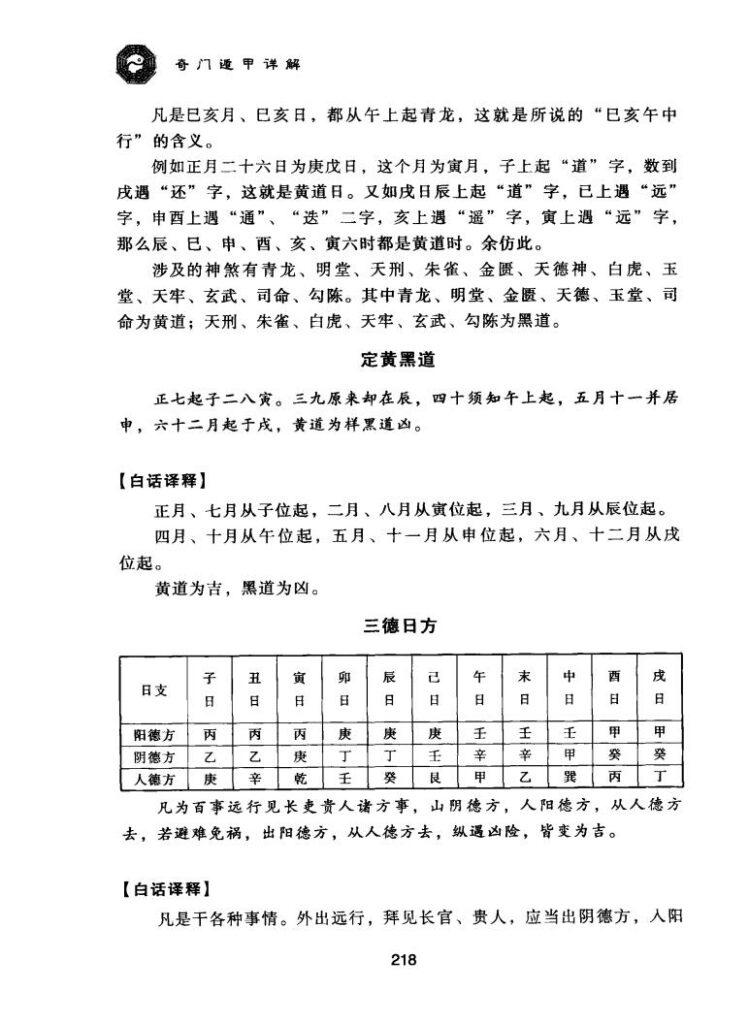
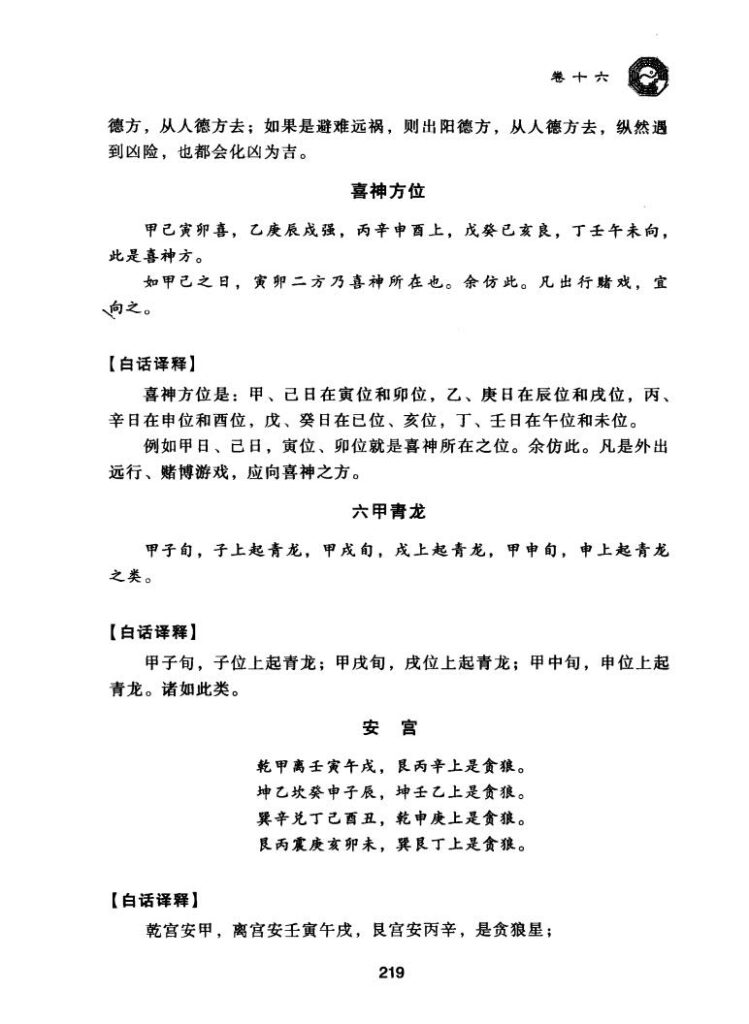







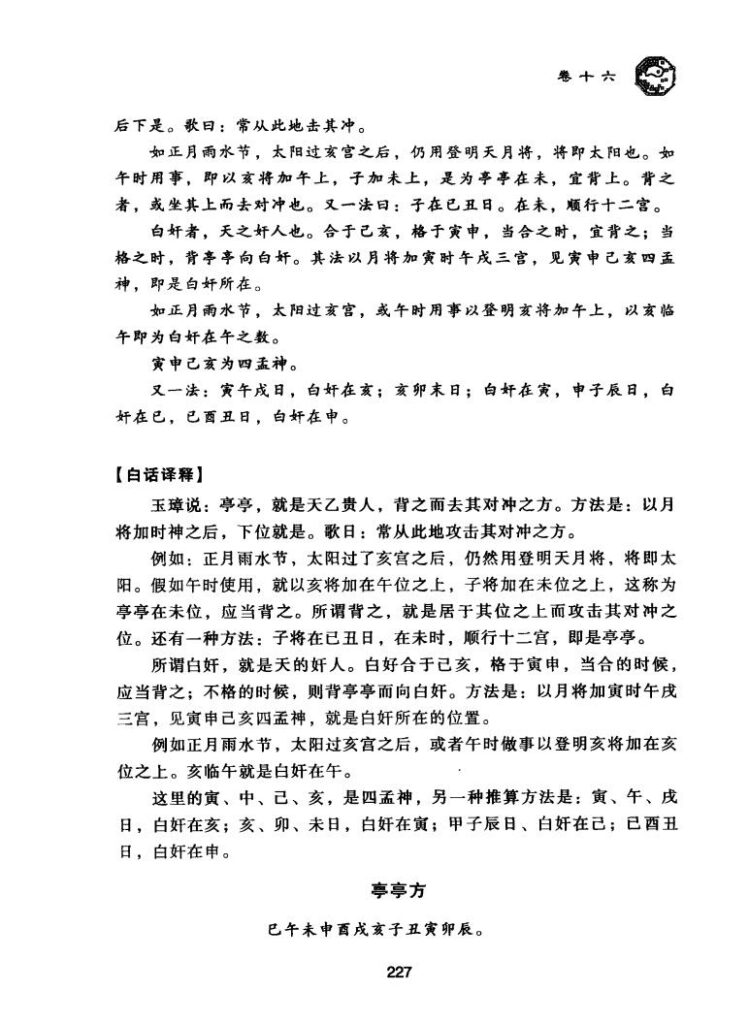
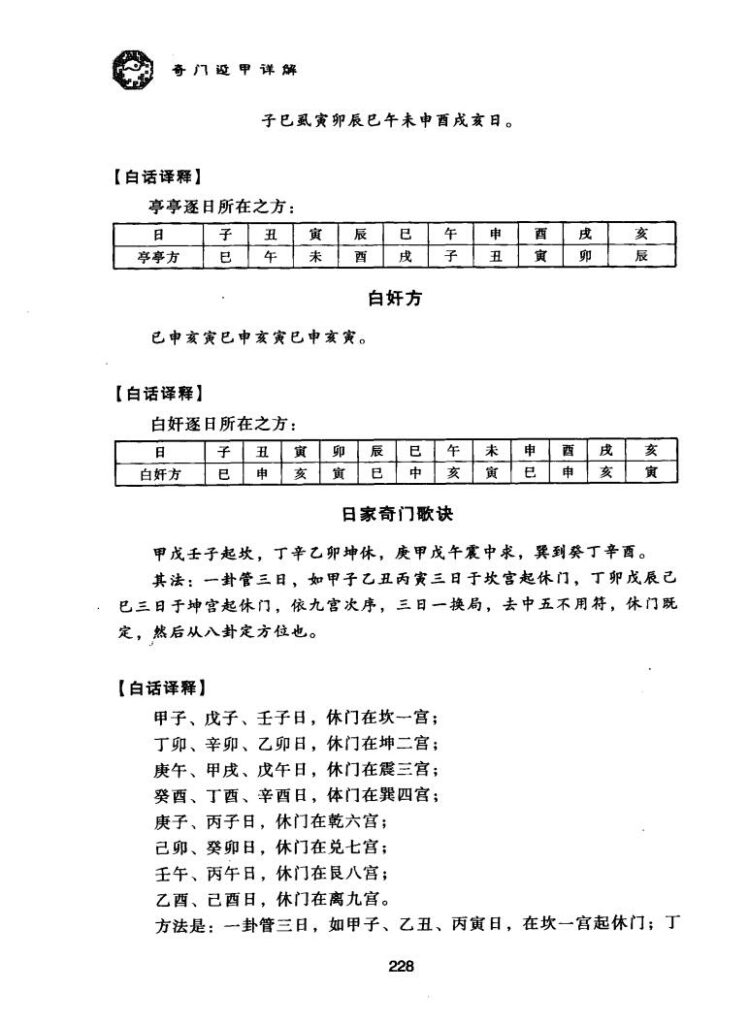
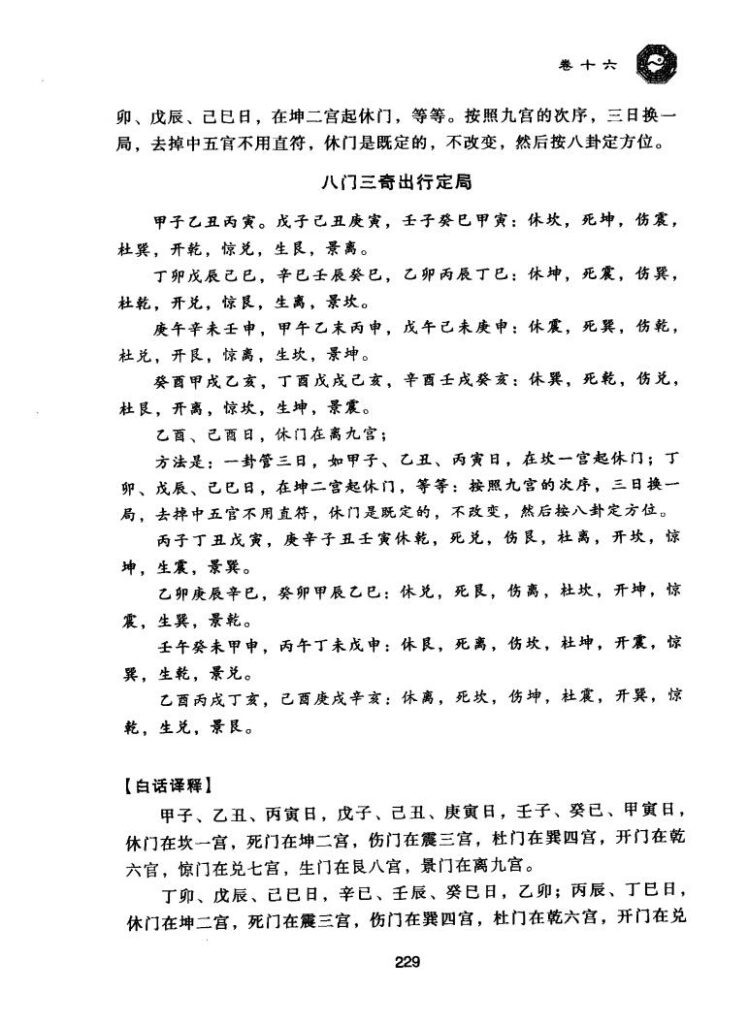









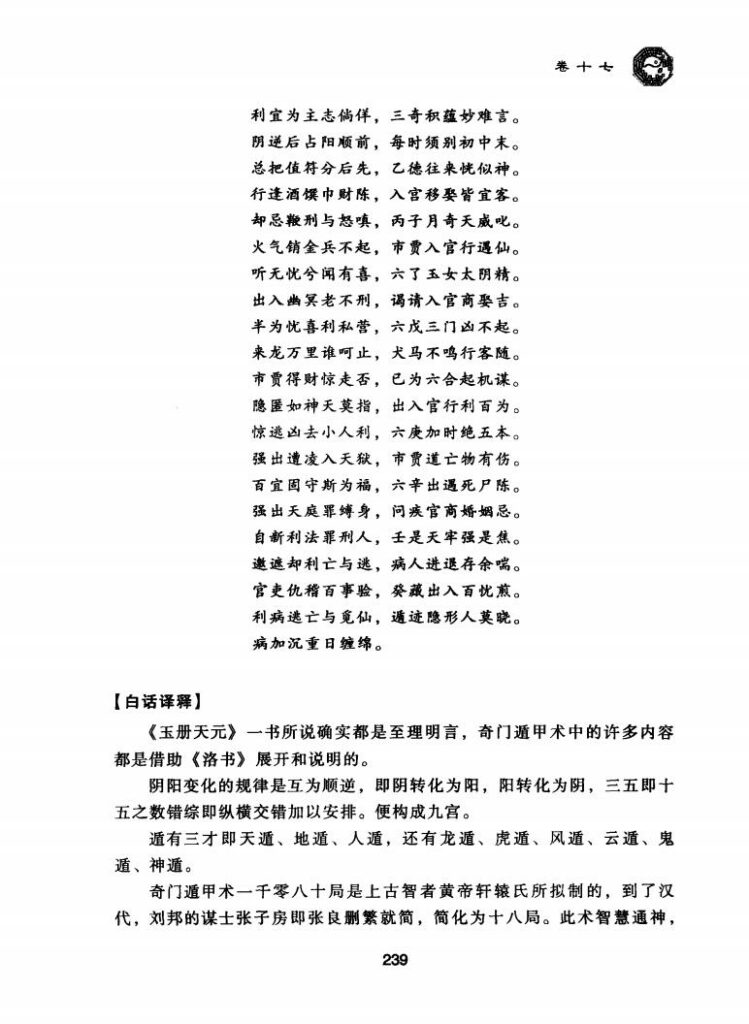
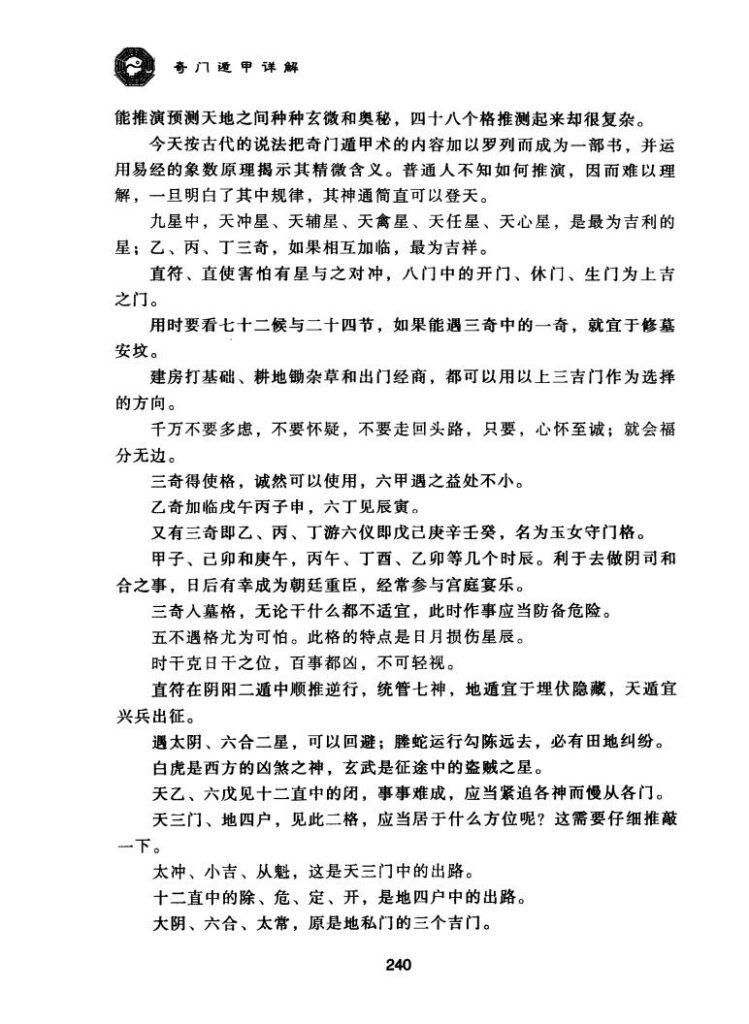
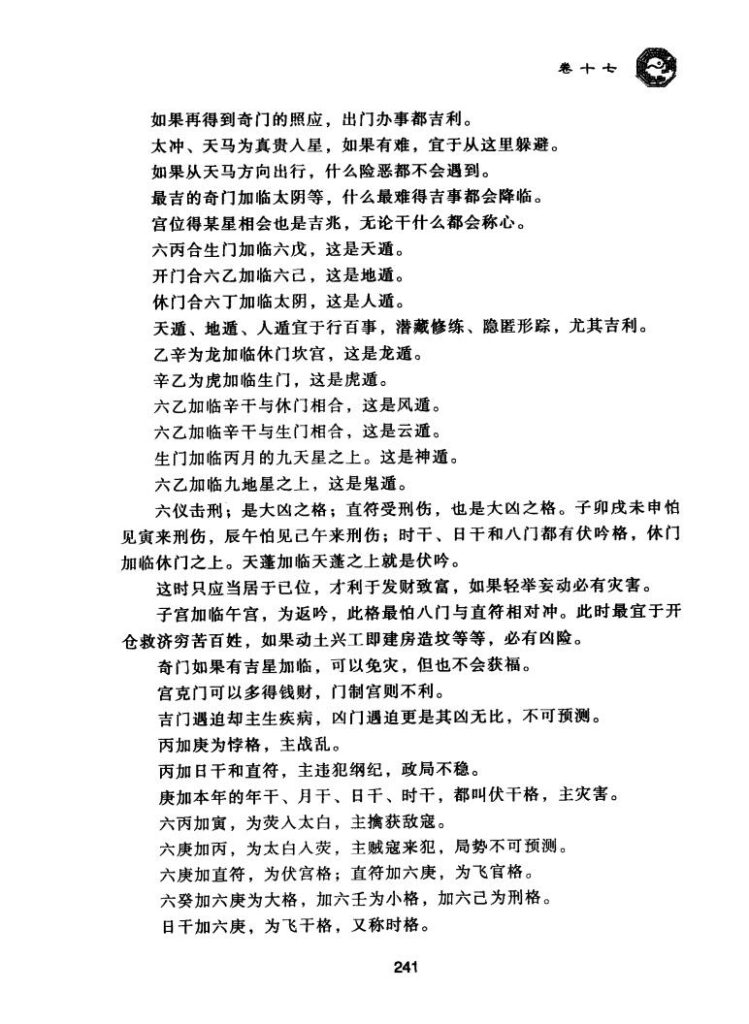


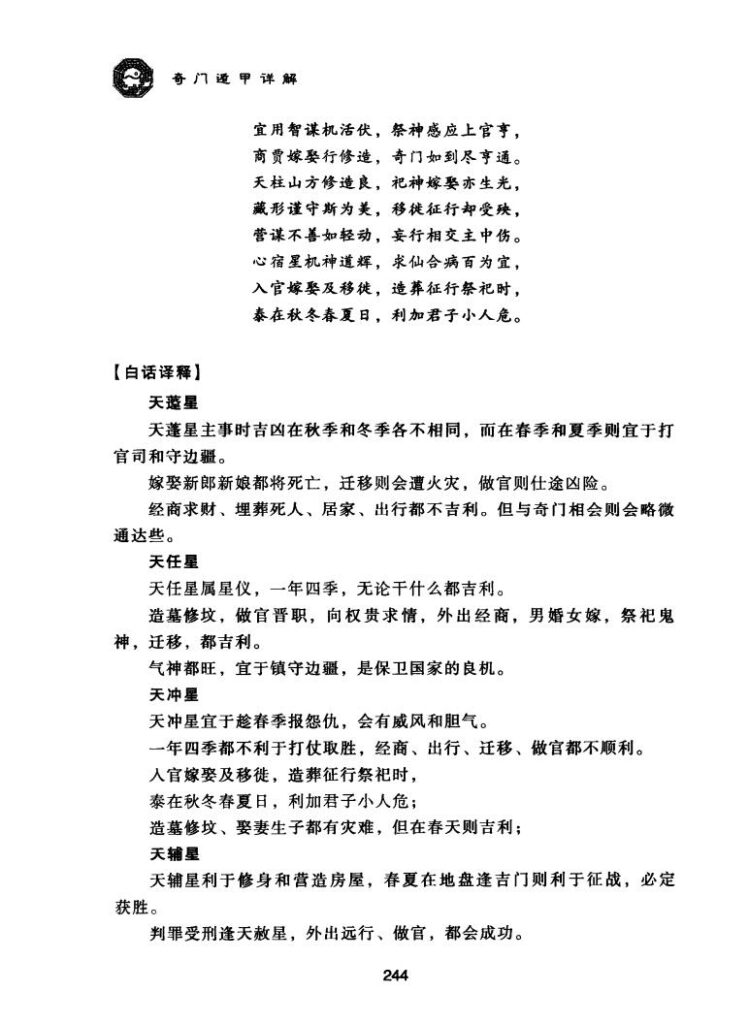
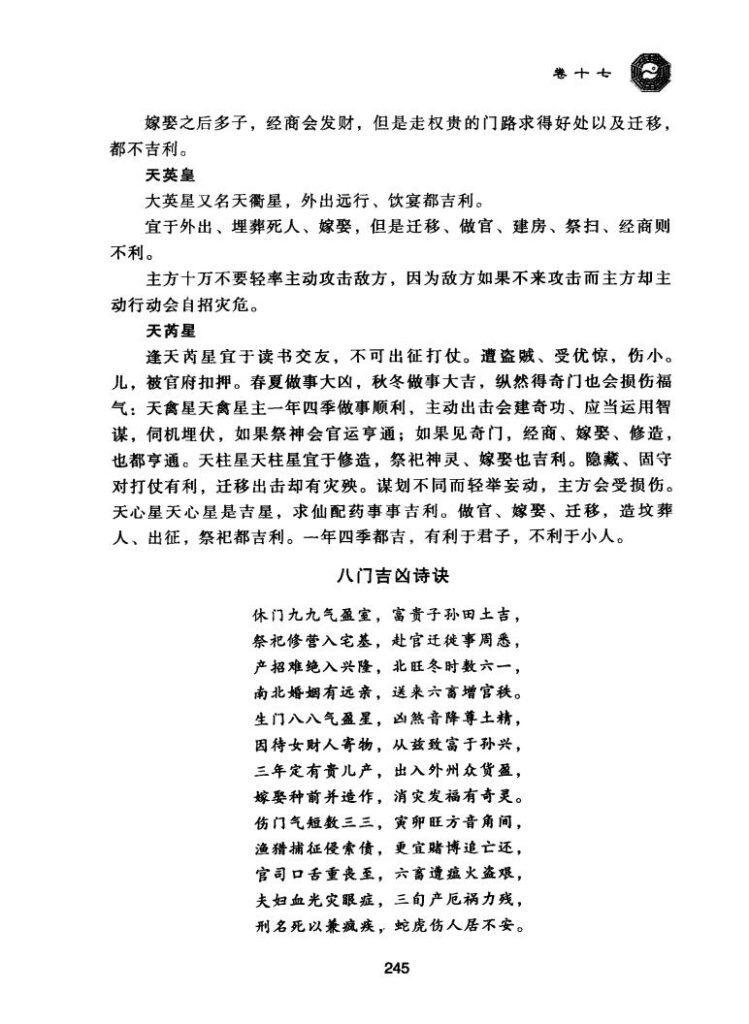

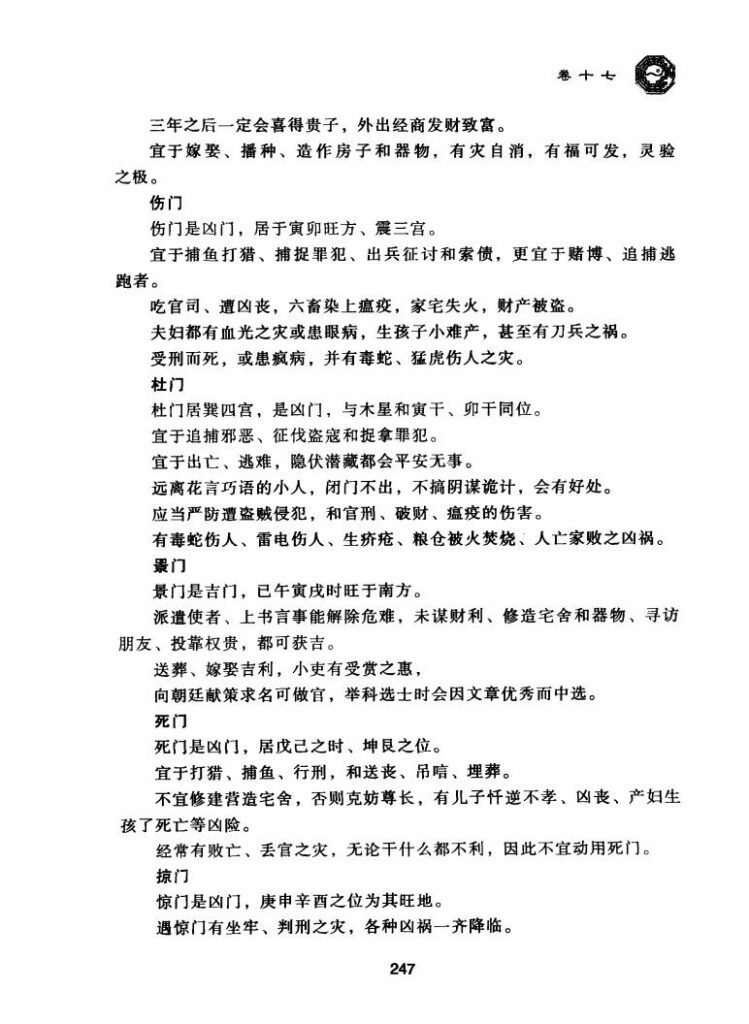


Culture文化 Metaphysics玄学 260P 奇门遁甲详解
历史上的今天 ( 33 ):
- 2023年-02月-24日:Super Nintendo:Atmosfear 大气恐惧
- 2023年-02月-24日:Super Nintendo:Atlas, The - Renaissance Voyager 佛罗伦斯航海者
- 2023年-02月-24日:Super Nintendo:Asterix 美丽新世界
- 2023年-02月-24日:Super Nintendo:Asterix & Obelix 阿斯特里克斯和奥比里克
- 2023年-02月-24日:Super Nintendo:Ashita no Joe 明日之丈:铁拳浪子
- 2023年-02月-24日:Video视频:这身材没谁了,棒
- 2023年-02月-24日:Video视频:夜场公主很性感
- 2023年-02月-24日:Video视频:给老婆买的衣服不错吧
- 2023年-02月-24日:Video视频:活到老学到老
- 2023年-02月-24日:Video视频:身材这么好生意自然行
- 2023年-02月-24日:Video视频:上帝之眼,看看
- 2023年-02月-24日:Video视频:美女爱运动爱抖动
- 2023年-02月-24日:Video视频:本该温柔,奈何妖娆
- 2023年-02月-24日:Video视频:大妈告诉你所谓夫妻
- 2023年-02月-24日:Video视频:杂技美女很柔软
- 2023年-02月-24日:Video视频:一起桃色事件
- 2023年-02月-24日:Video视频:还是渣男比较吃香
- 2023年-02月-24日:Video视频:美女教你来开车
- 2023年-02月-24日:Video视频:老外Q弹的身子
- 2023年-02月-24日:Video视频:公交车上的猥琐男
- 2023年-02月-24日:Region地理:古代城镇·中国建筑艺术全集 4 (317P)
- 2023年-02月-24日:Region地理:宫殿建筑(3) 沈阳·中国建筑艺术全集 (312P)
- 2023年-02月-24日:Region地理:宫殿建筑(2)(北京)·中国建筑艺术全集 (311P)
- 2023年-02月-24日:Region地理:宫殿建筑(1)(北京)·中国建筑艺术全集 (247P)
- 2023年-02月-24日:History历史:赛雷三分钟漫画世界史 (325P)
- 2023年-02月-24日:China国内合集:各样鱼图册之十二 (24P)
- 2023年-02月-24日:China国内合集:各样鱼图册之十一 (24P)
- 2023年-02月-24日:China国内合集:各样鱼图册之十 (24P)
- 2023年-02月-24日:Radio收音机:邹平人民广播电台
- 2023年-02月-24日:Radio收音机:章丘之声
- 2023年-02月-24日:Radio收音机:城市969
- 2023年-02月-24日:Radio收音机:蒙阴人民广播电台
- 2023年-02月-24日:News新闻:2月24日,星期五,在这里每天60秒读懂世界! (1P)
可点 ➠ 2024年-02月-24日 ➠ 25 s ➠ ♥ 0

